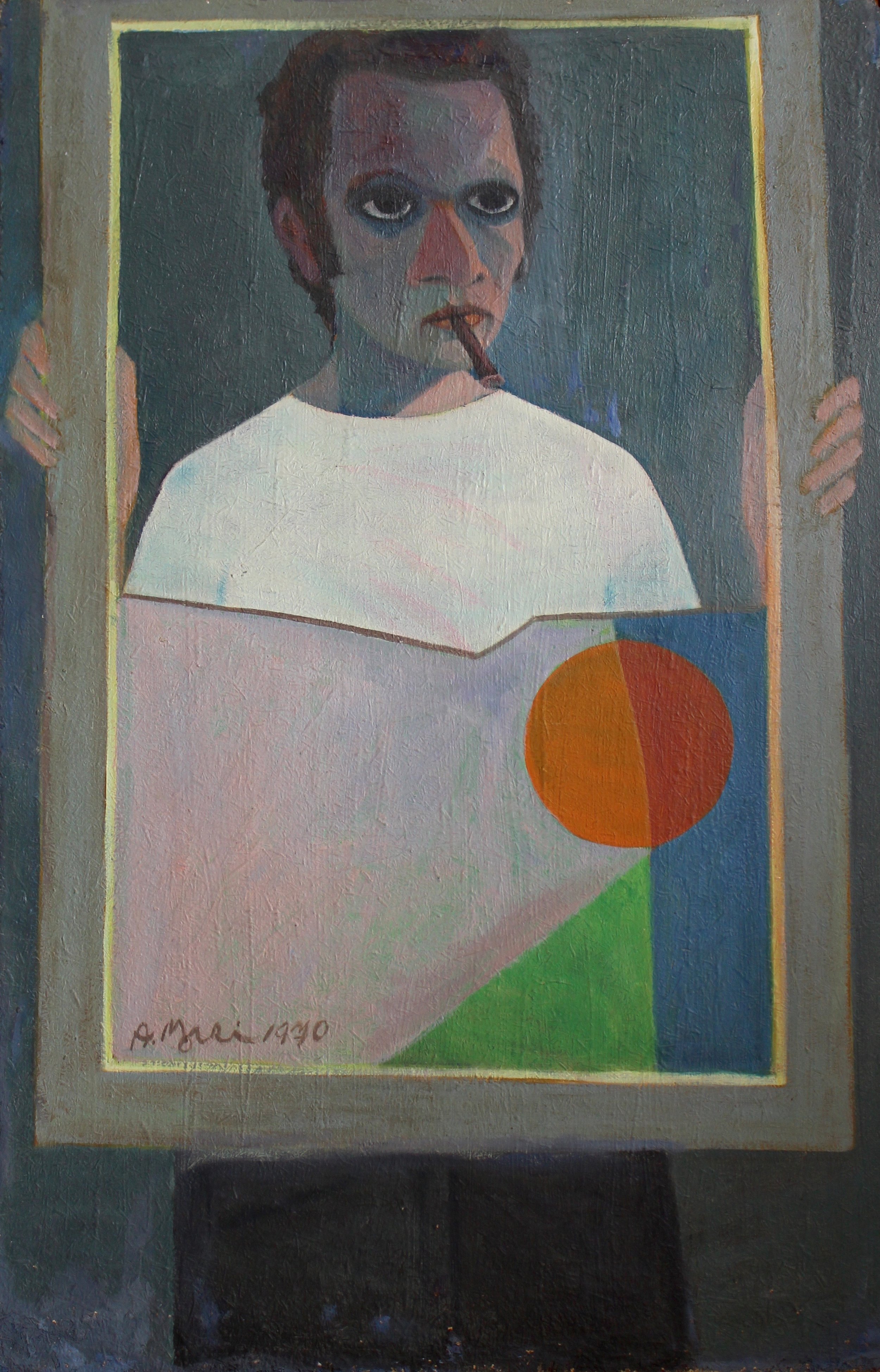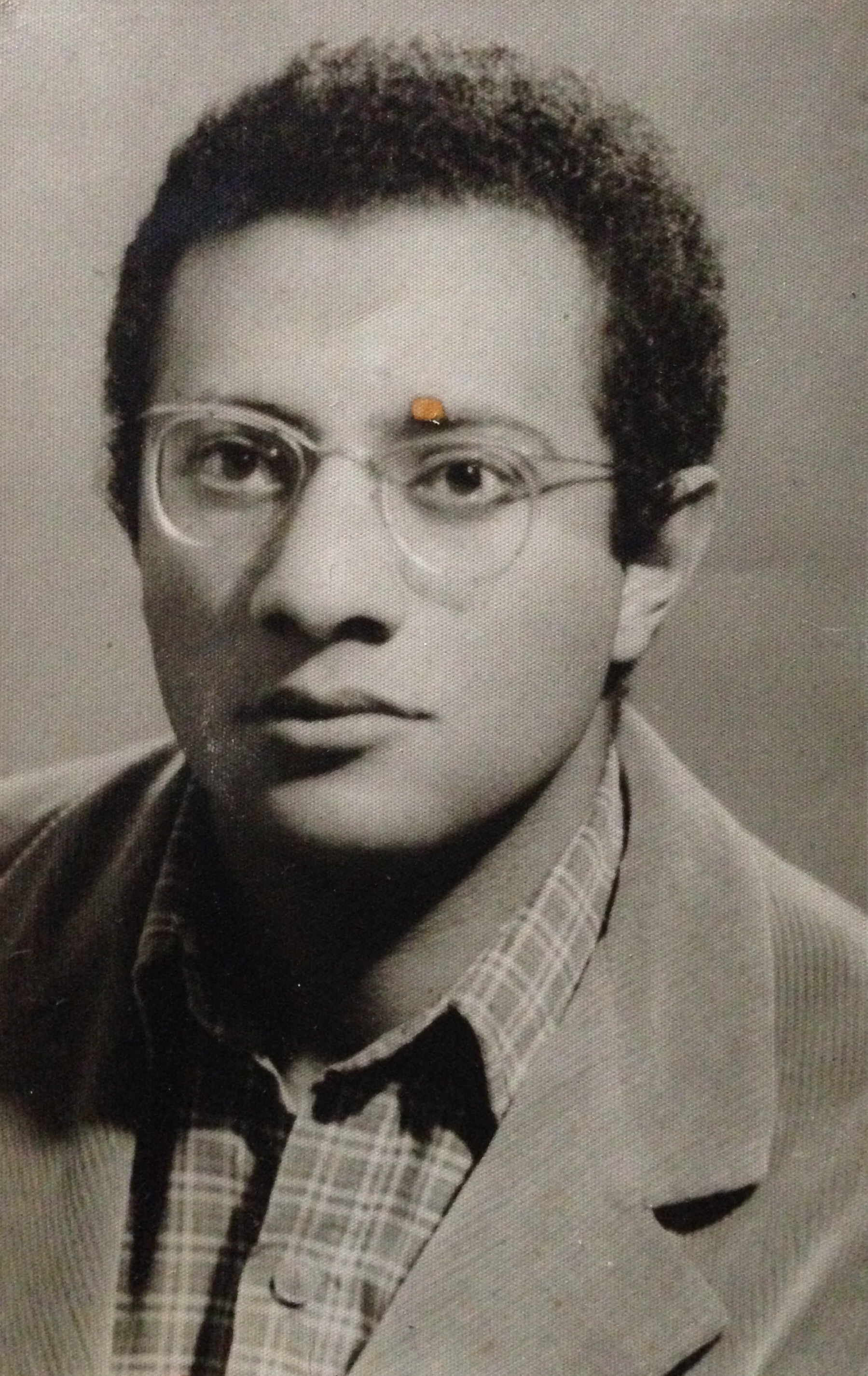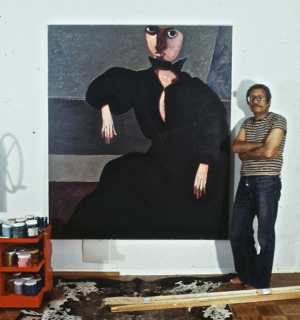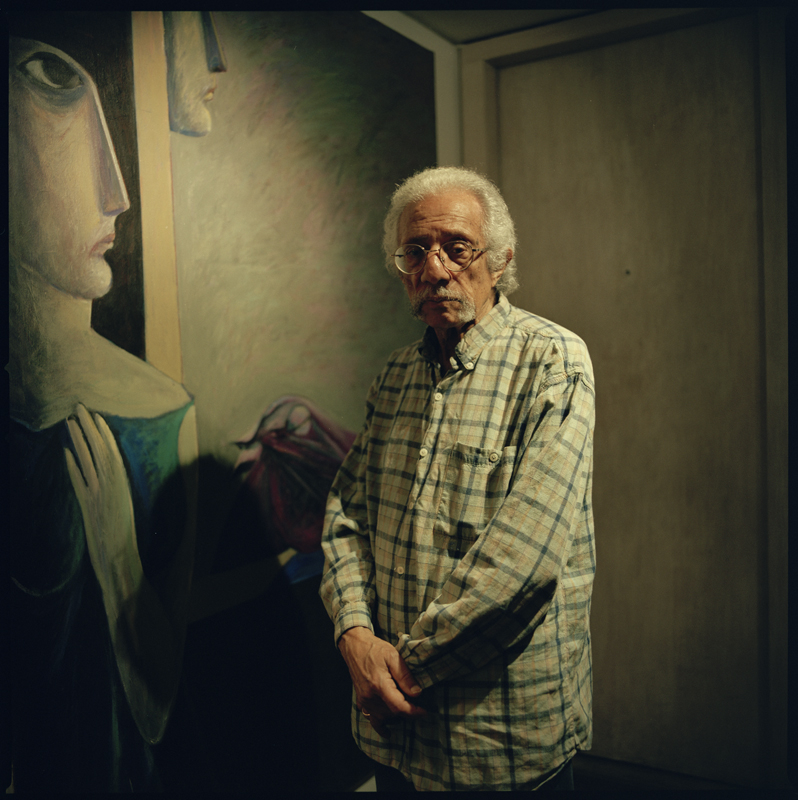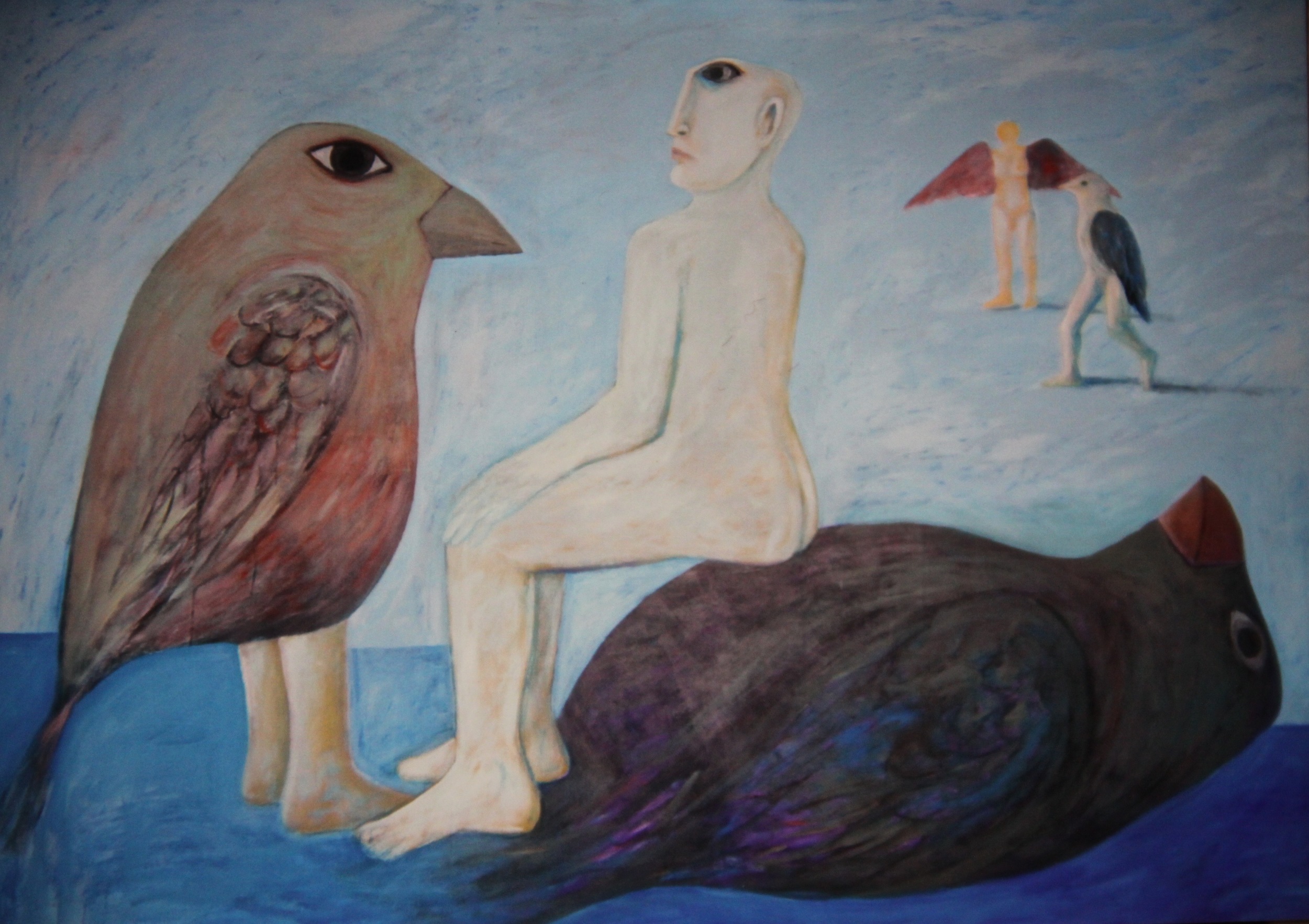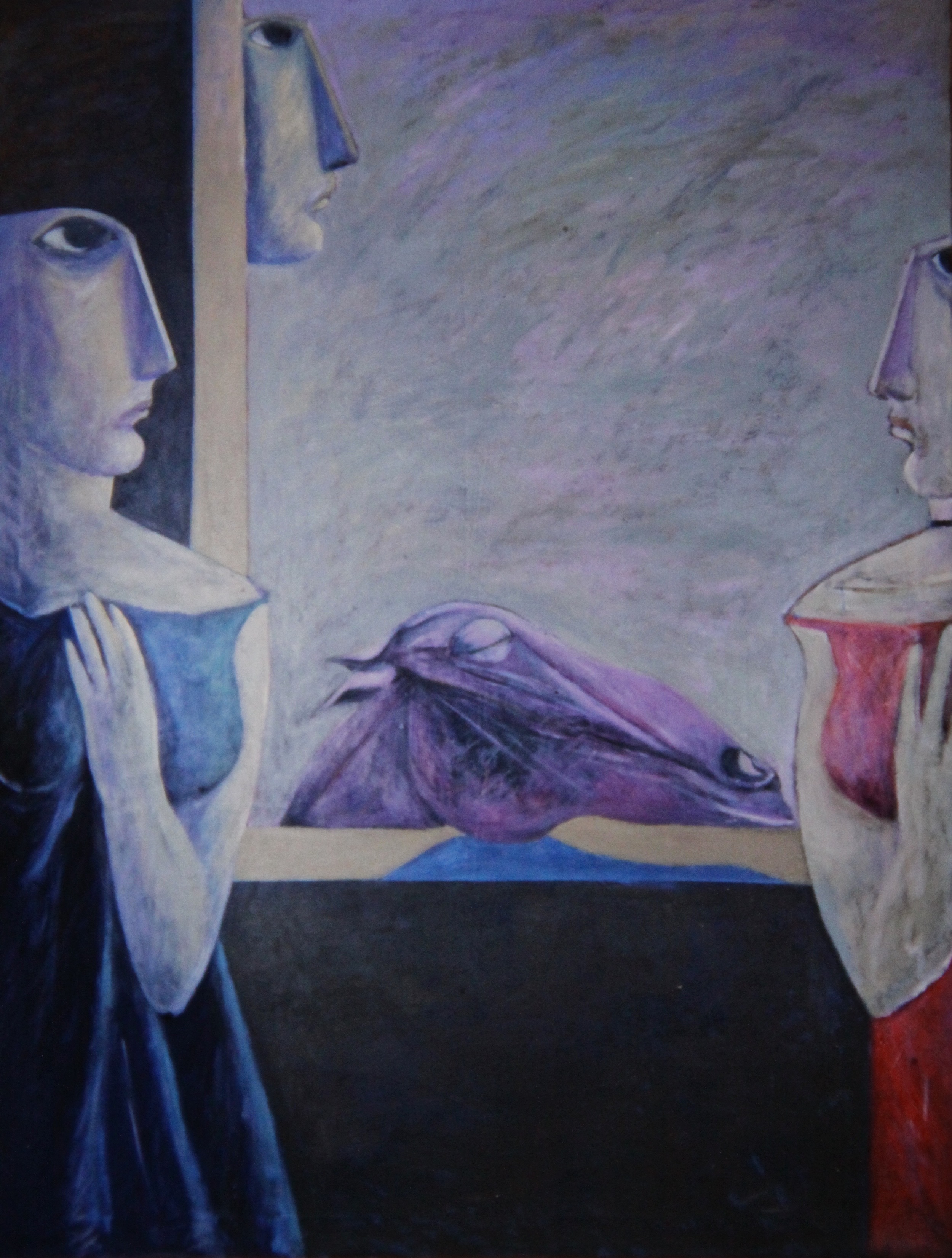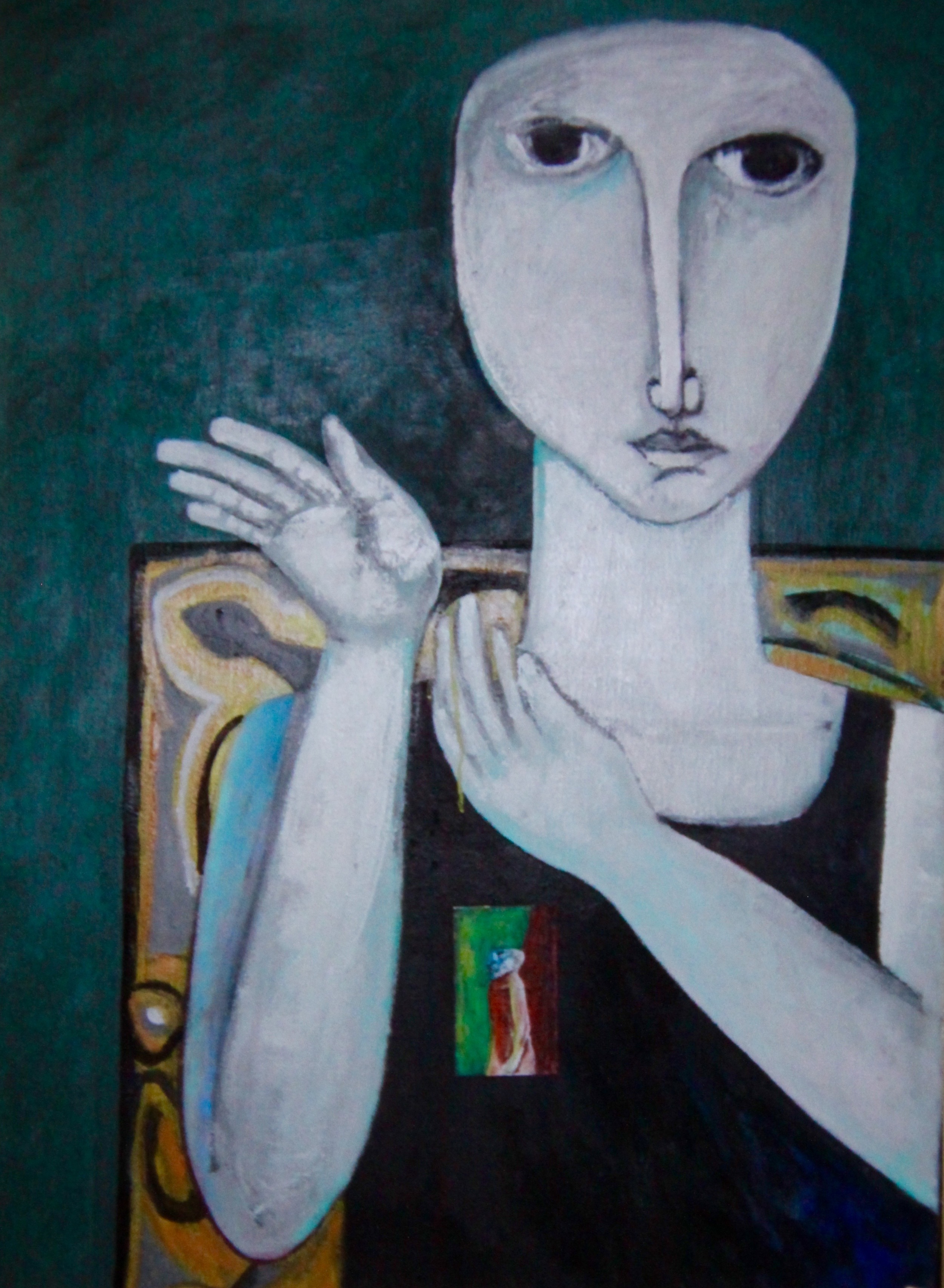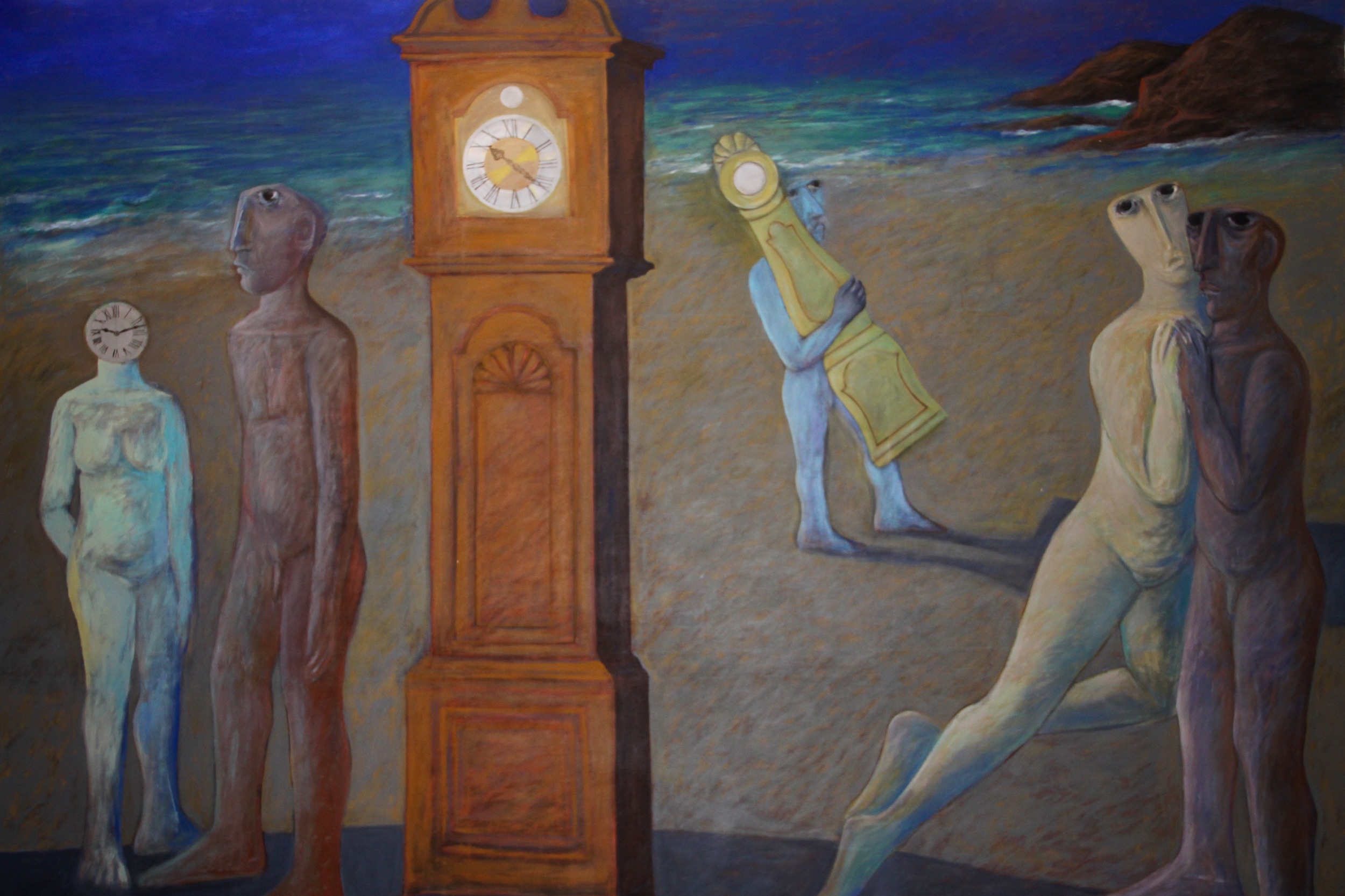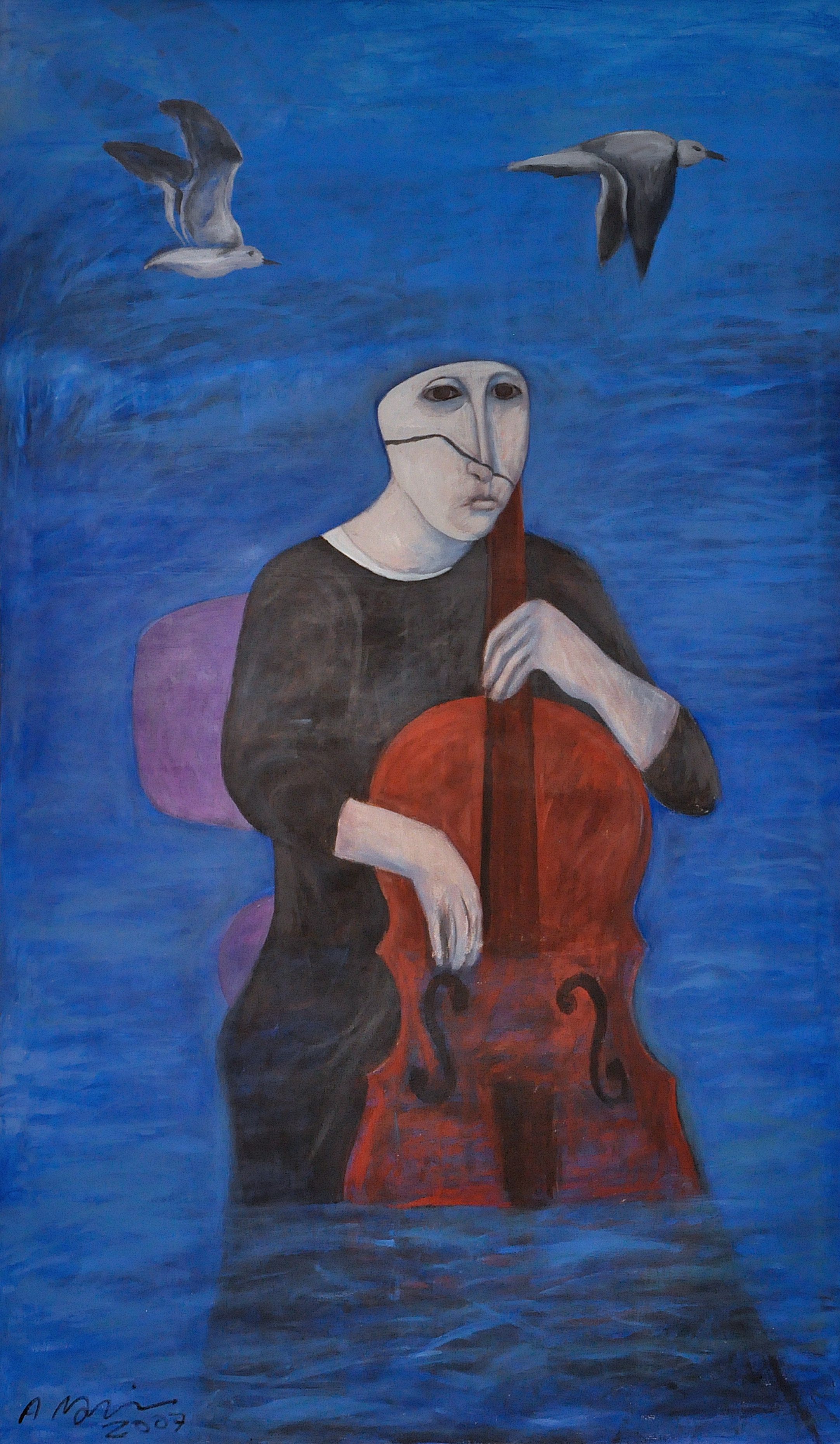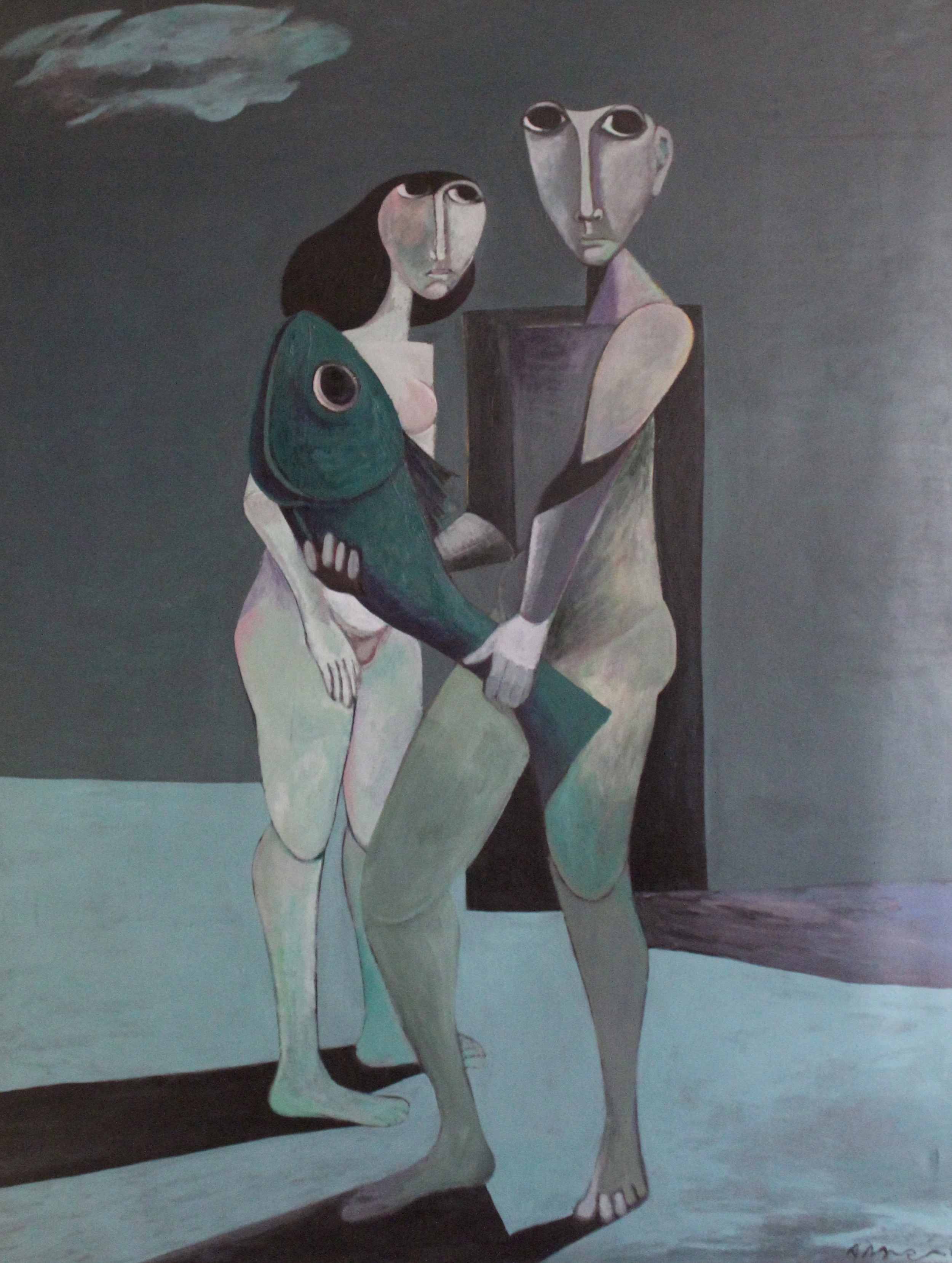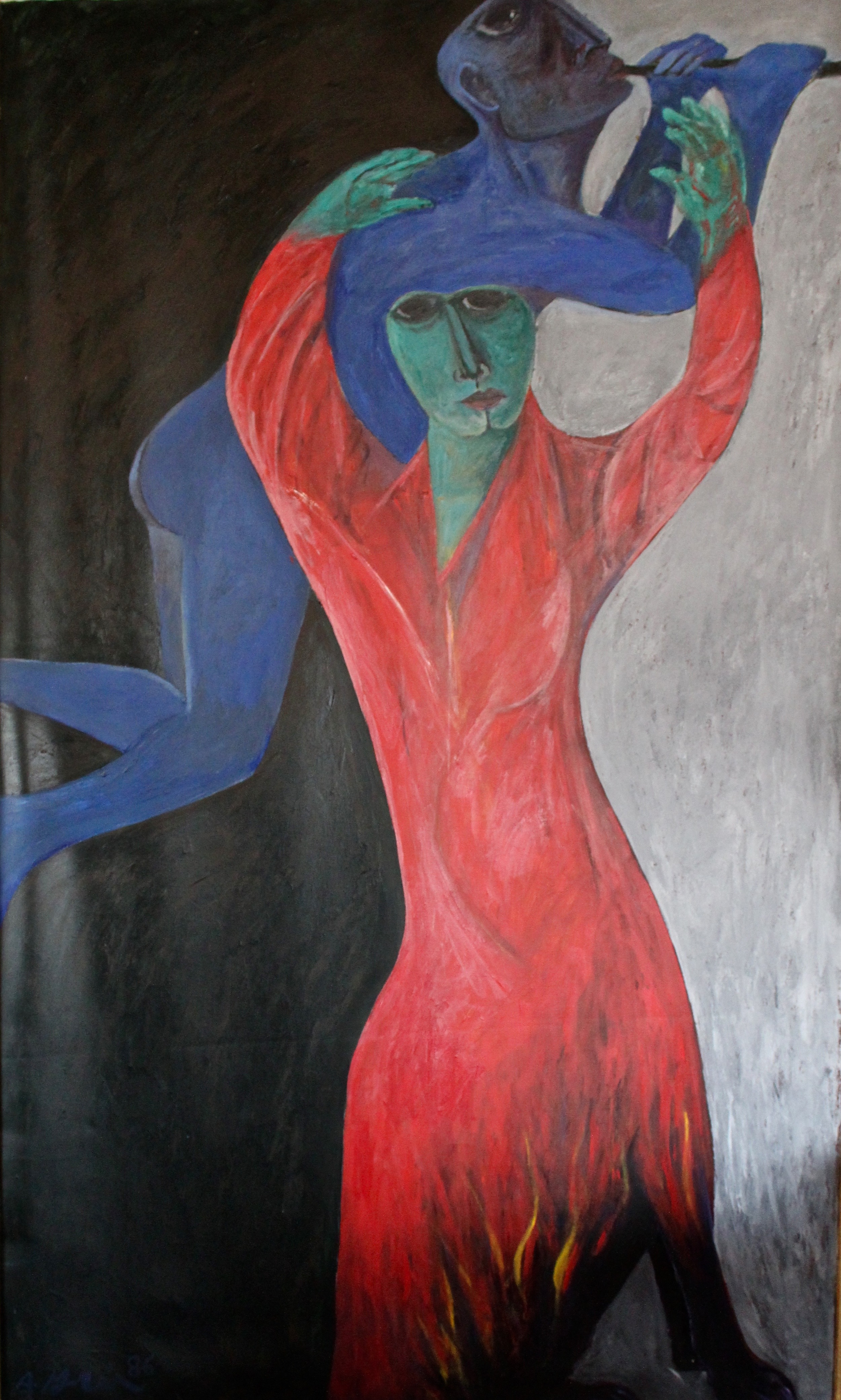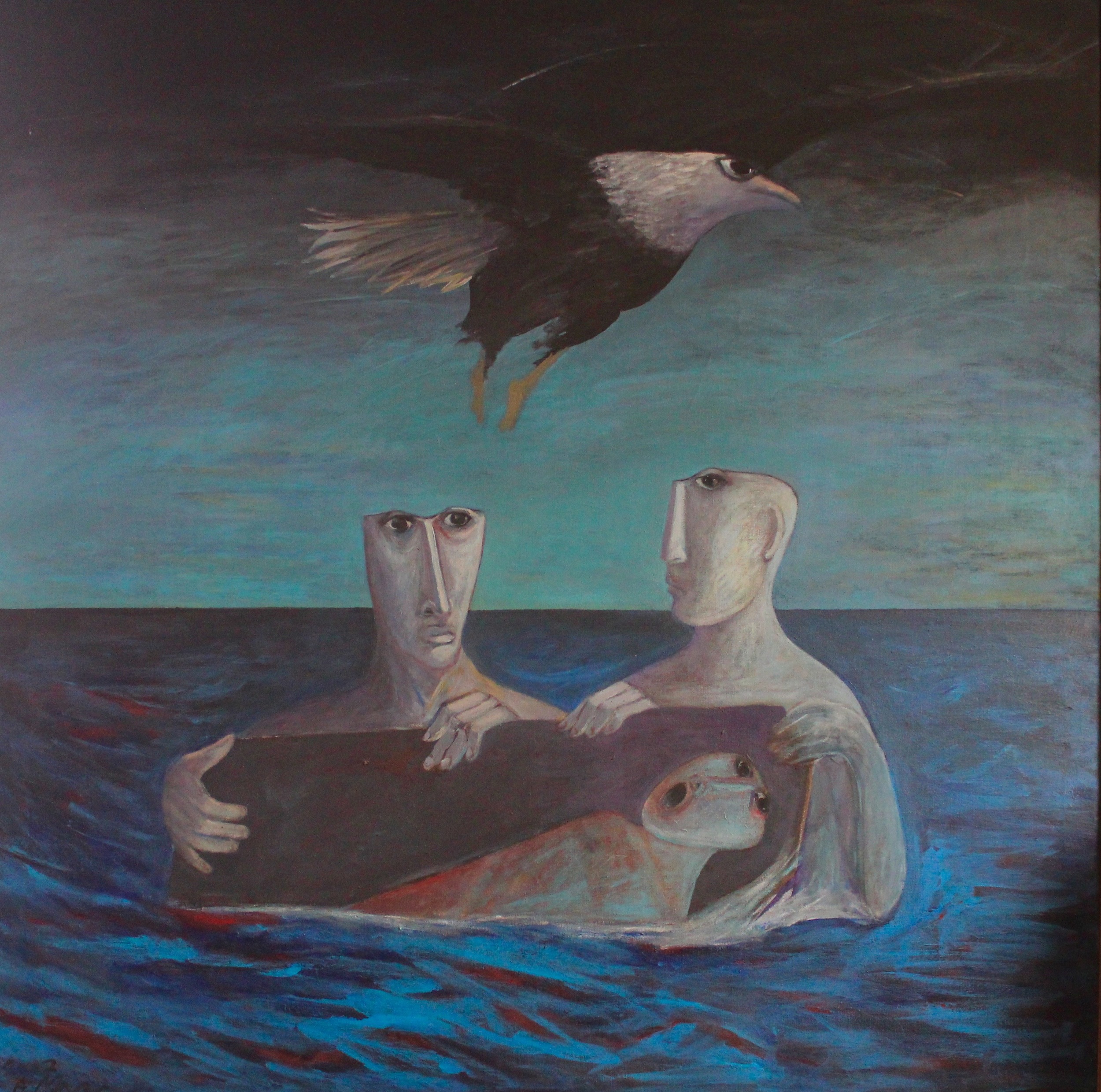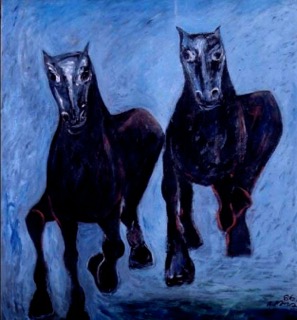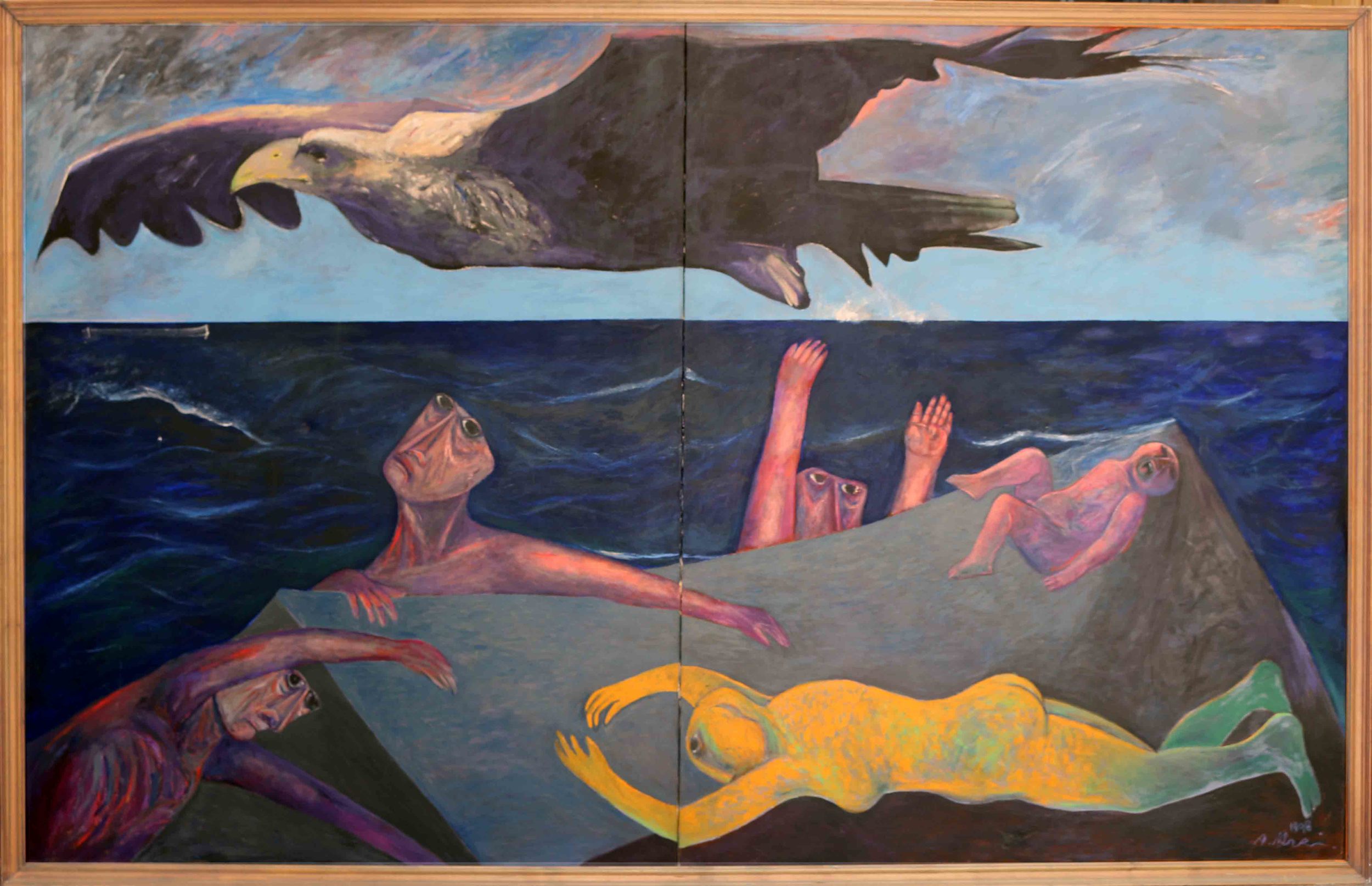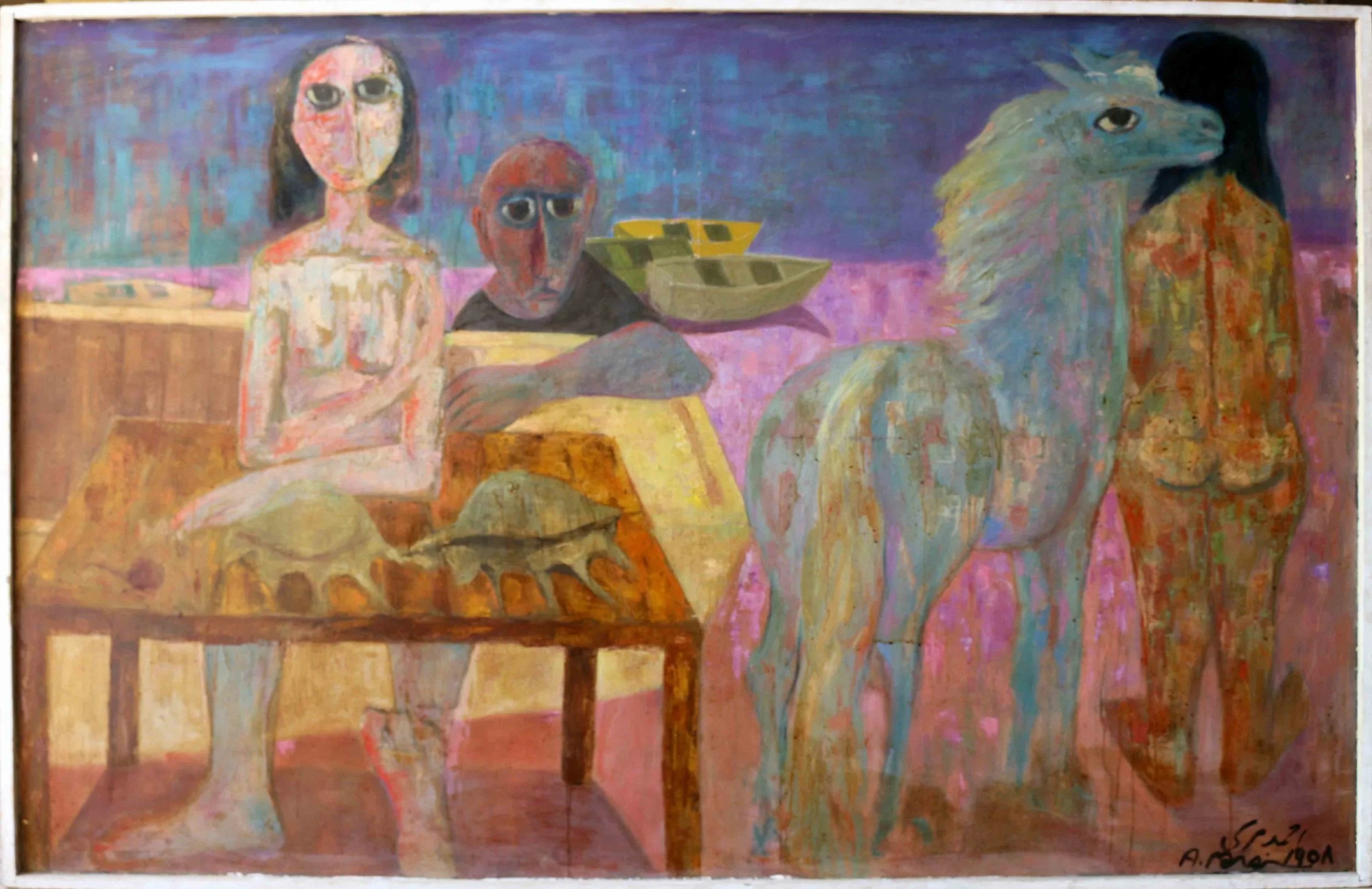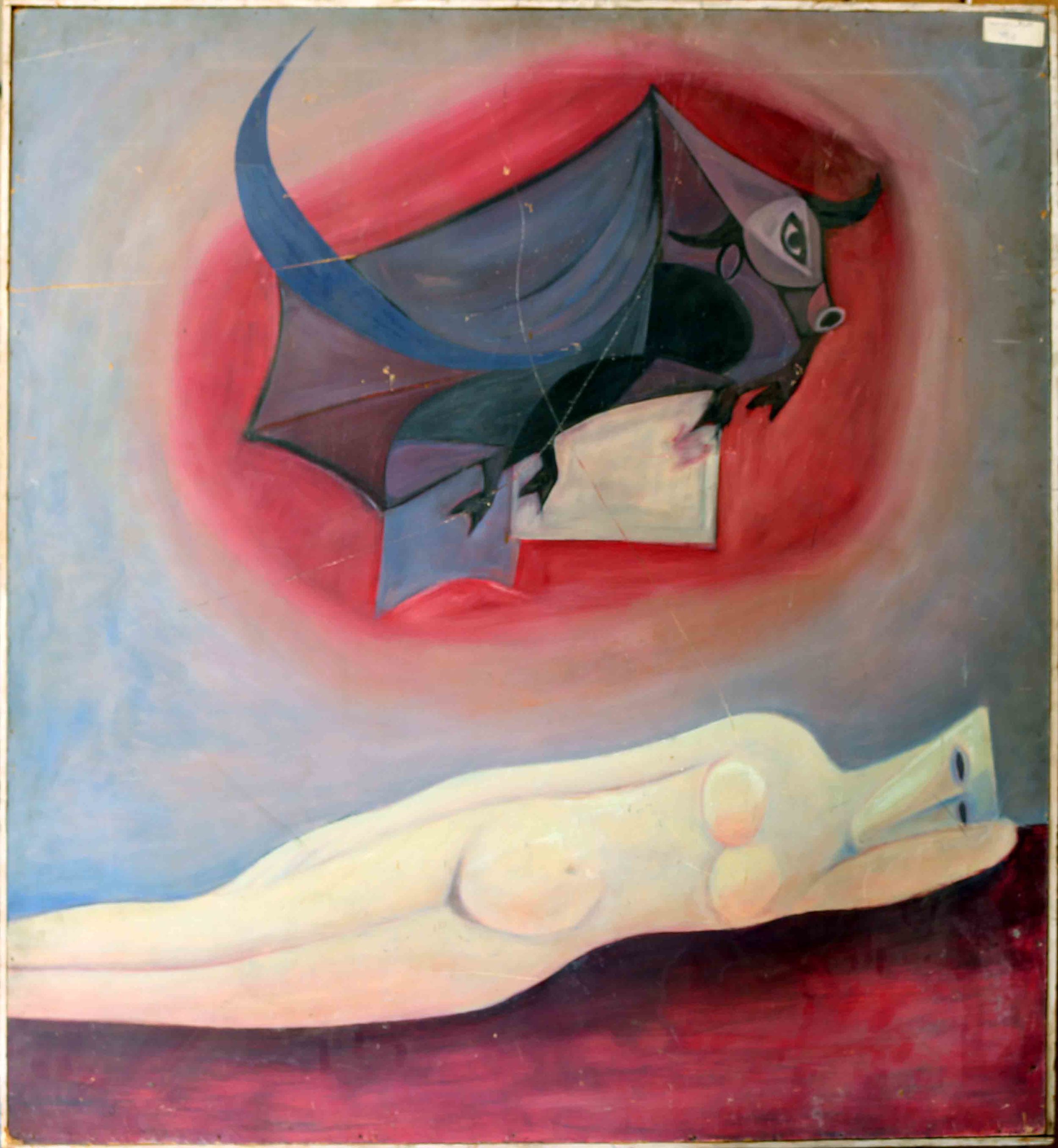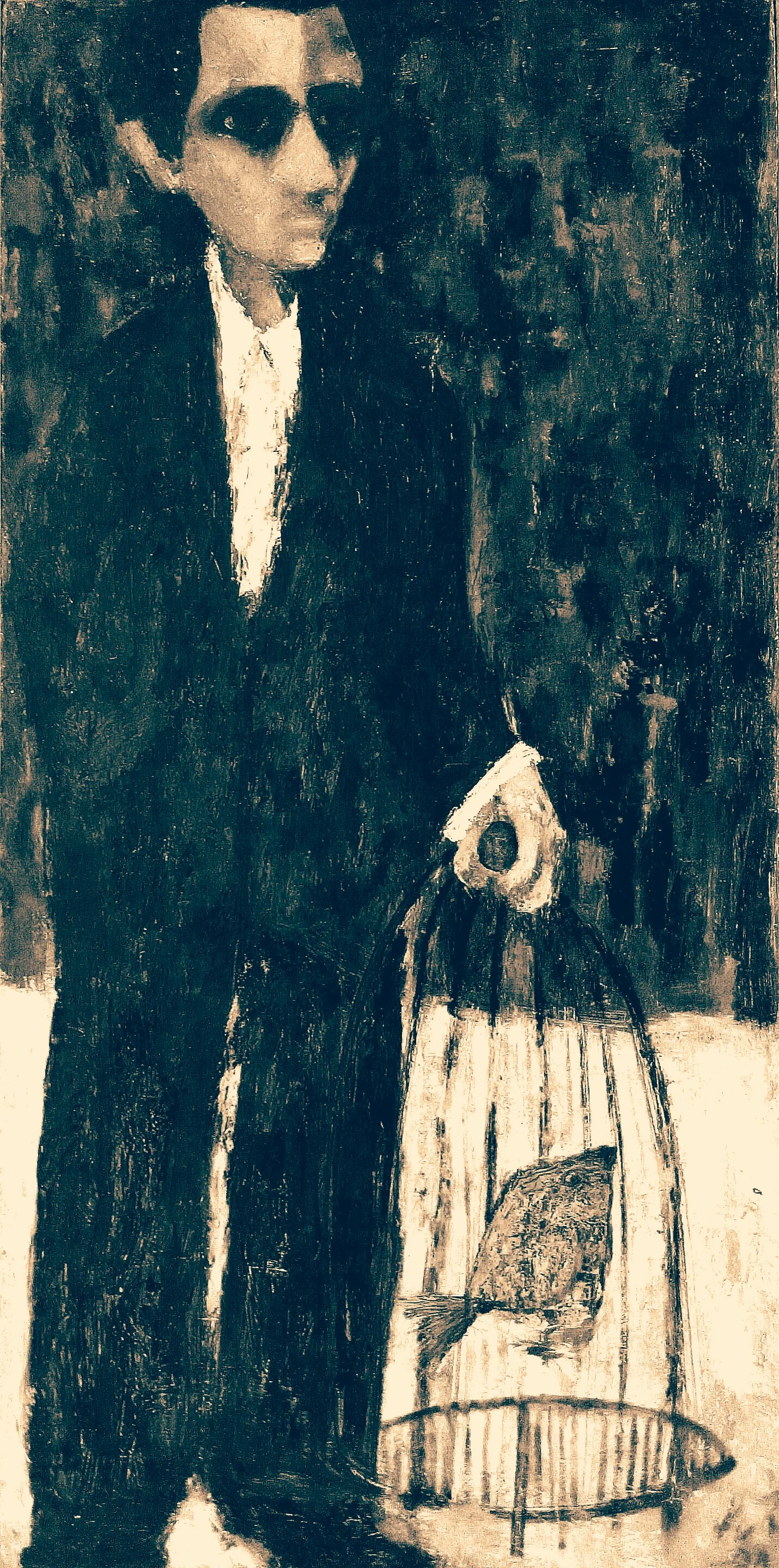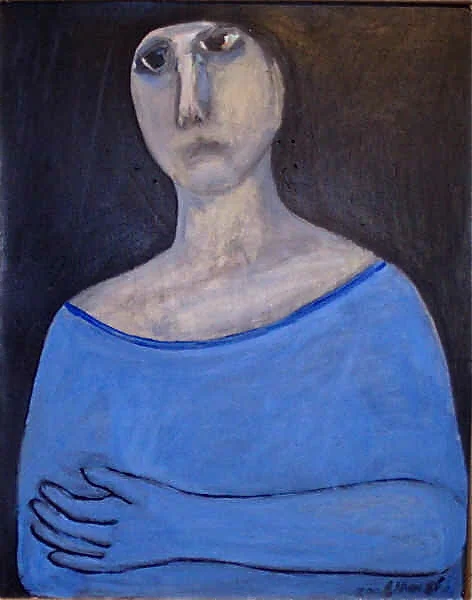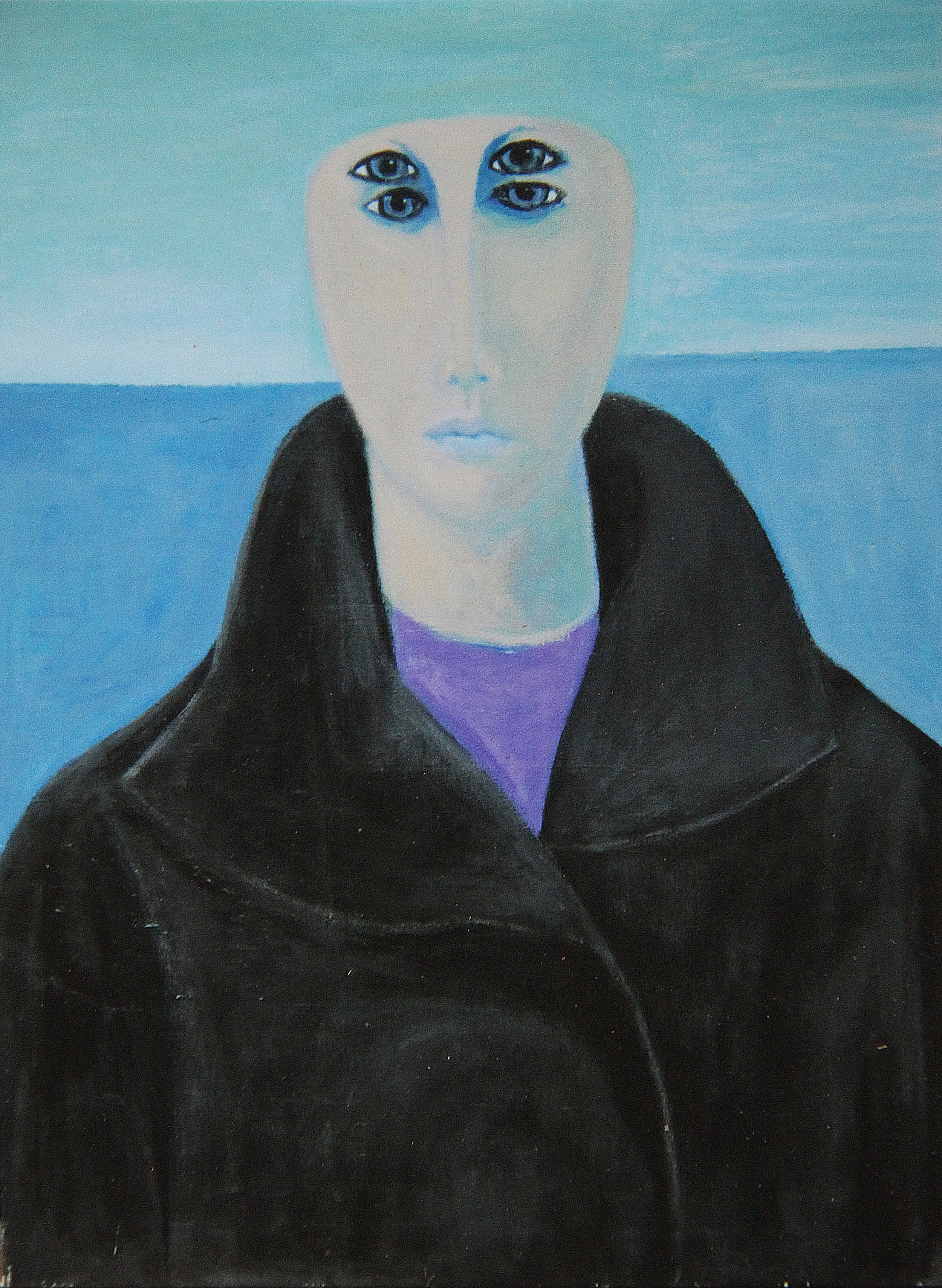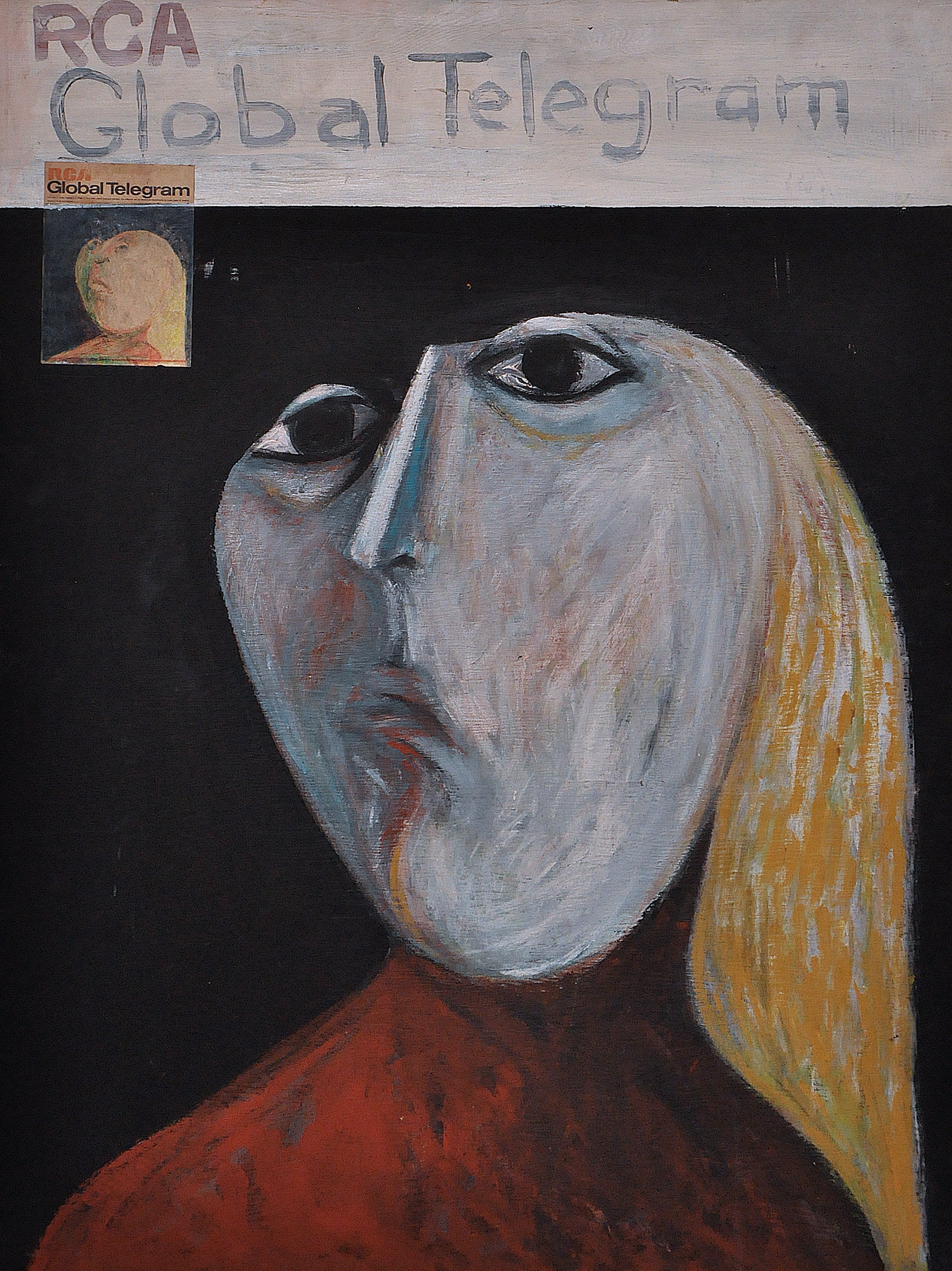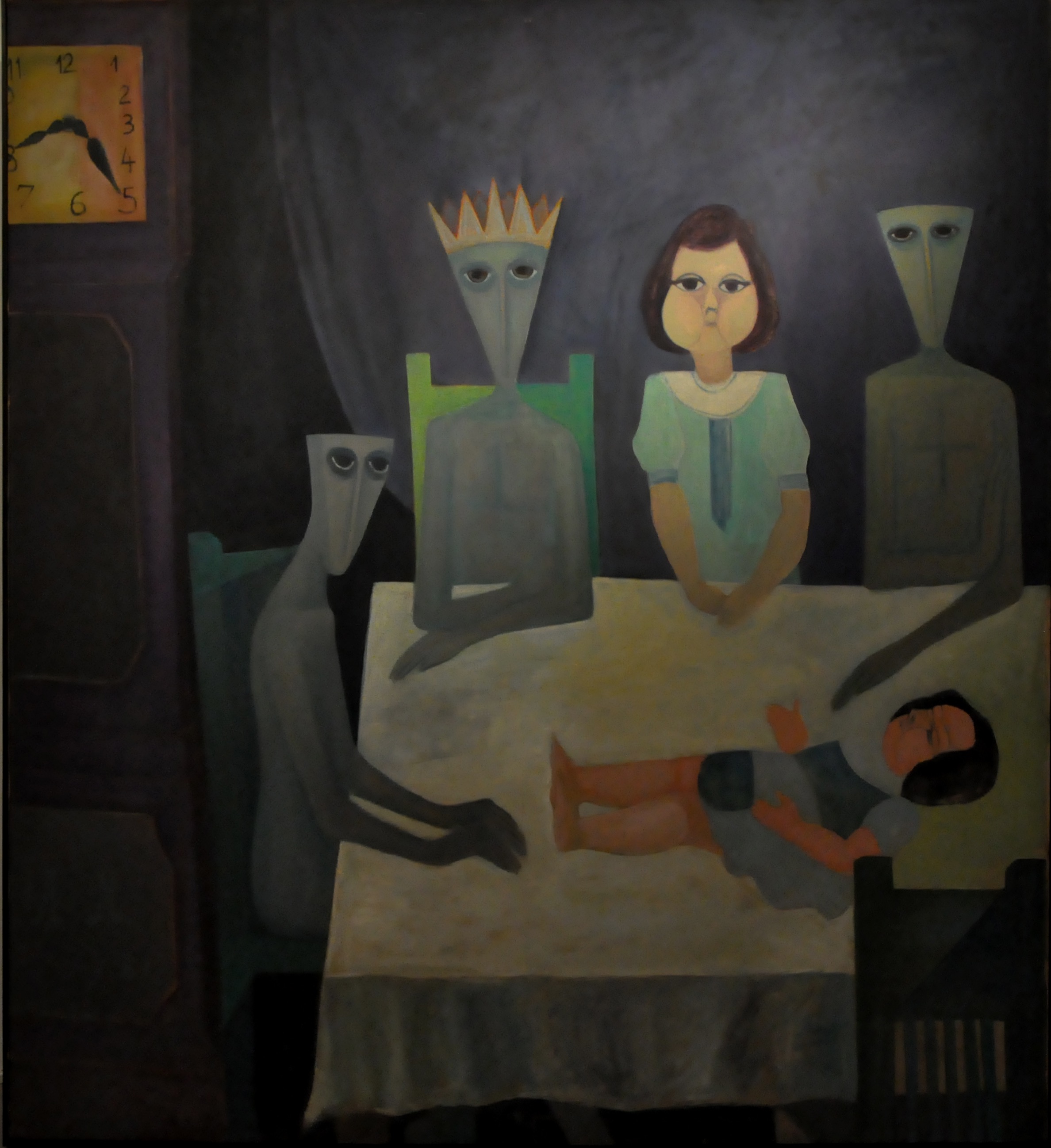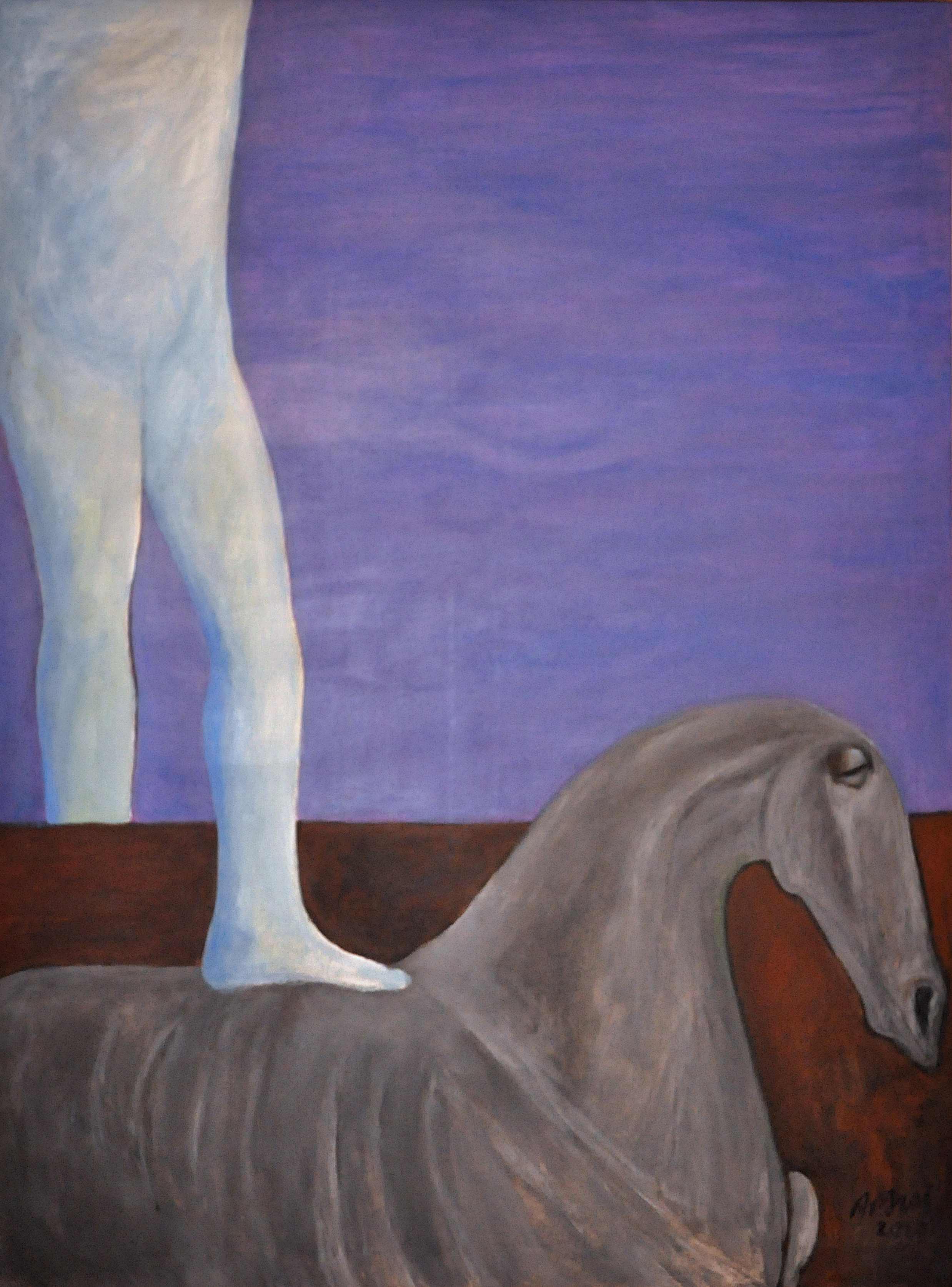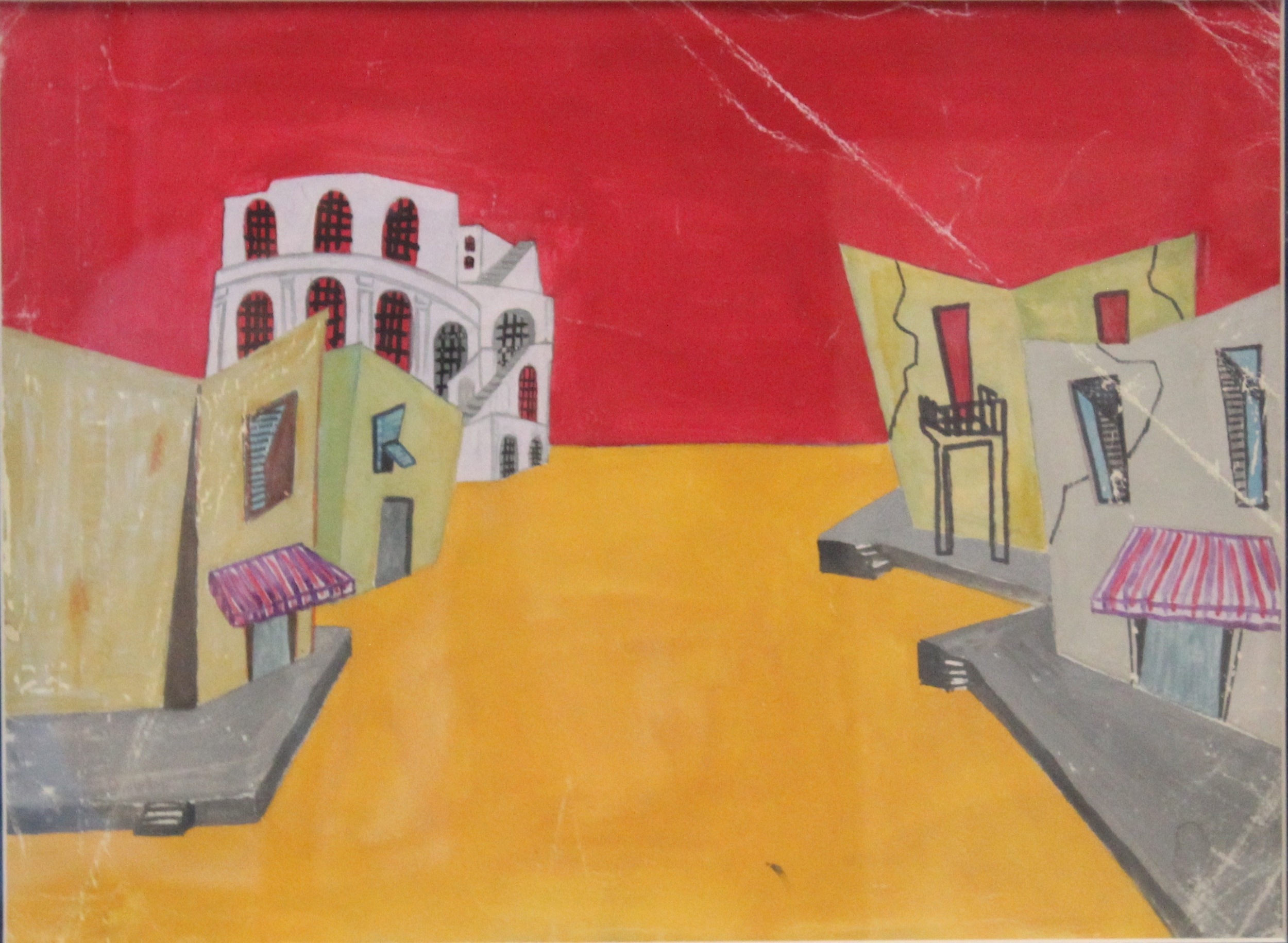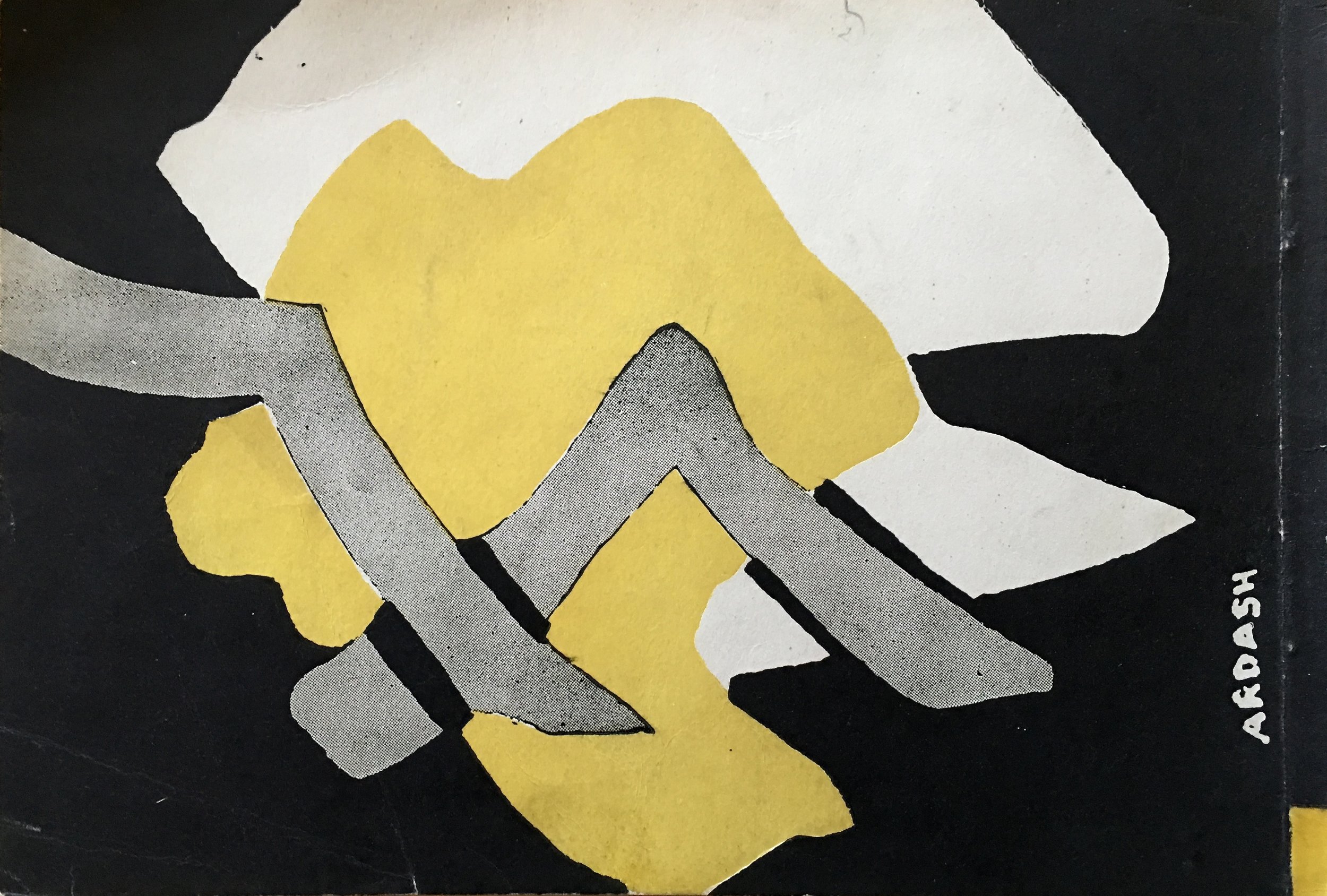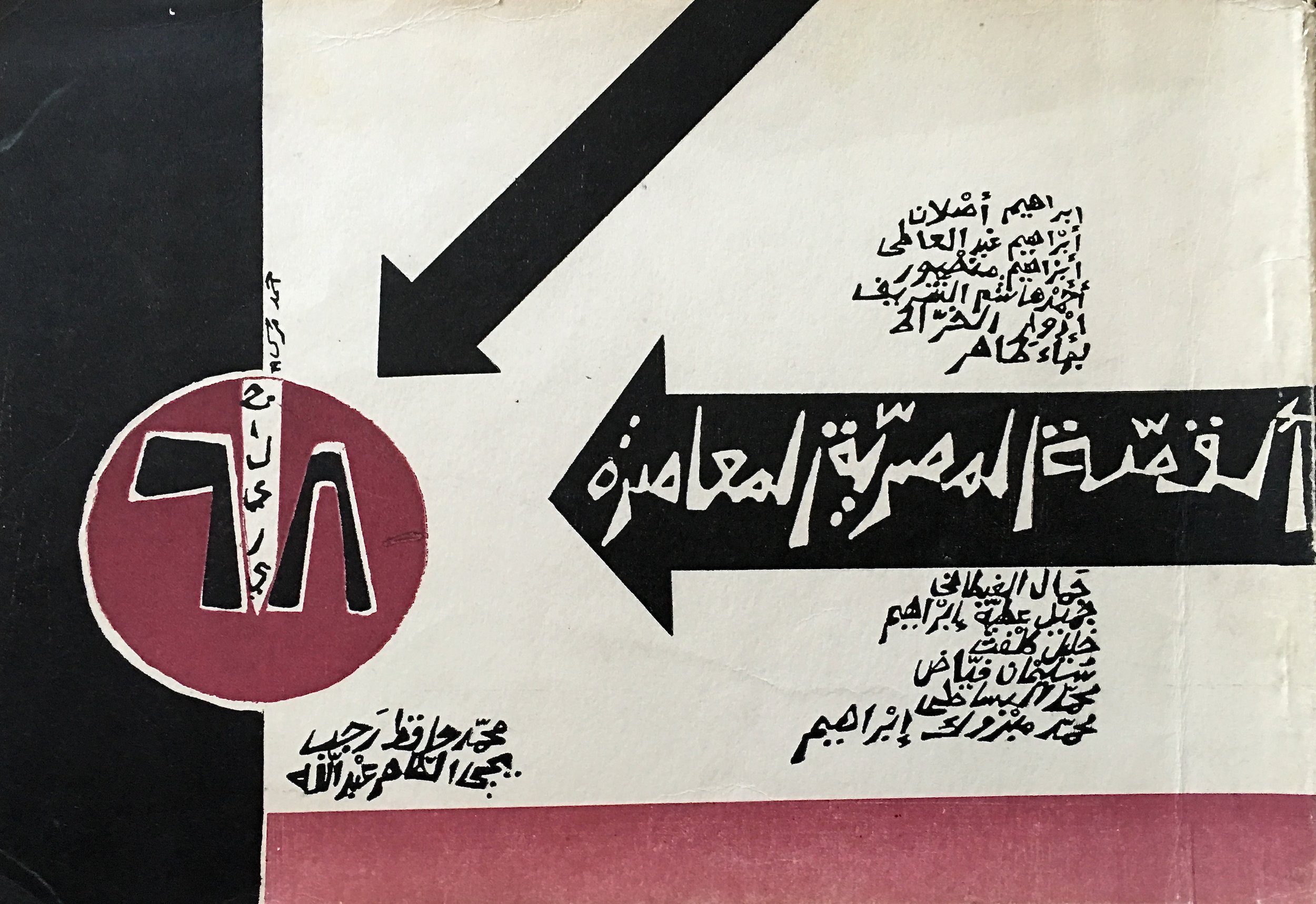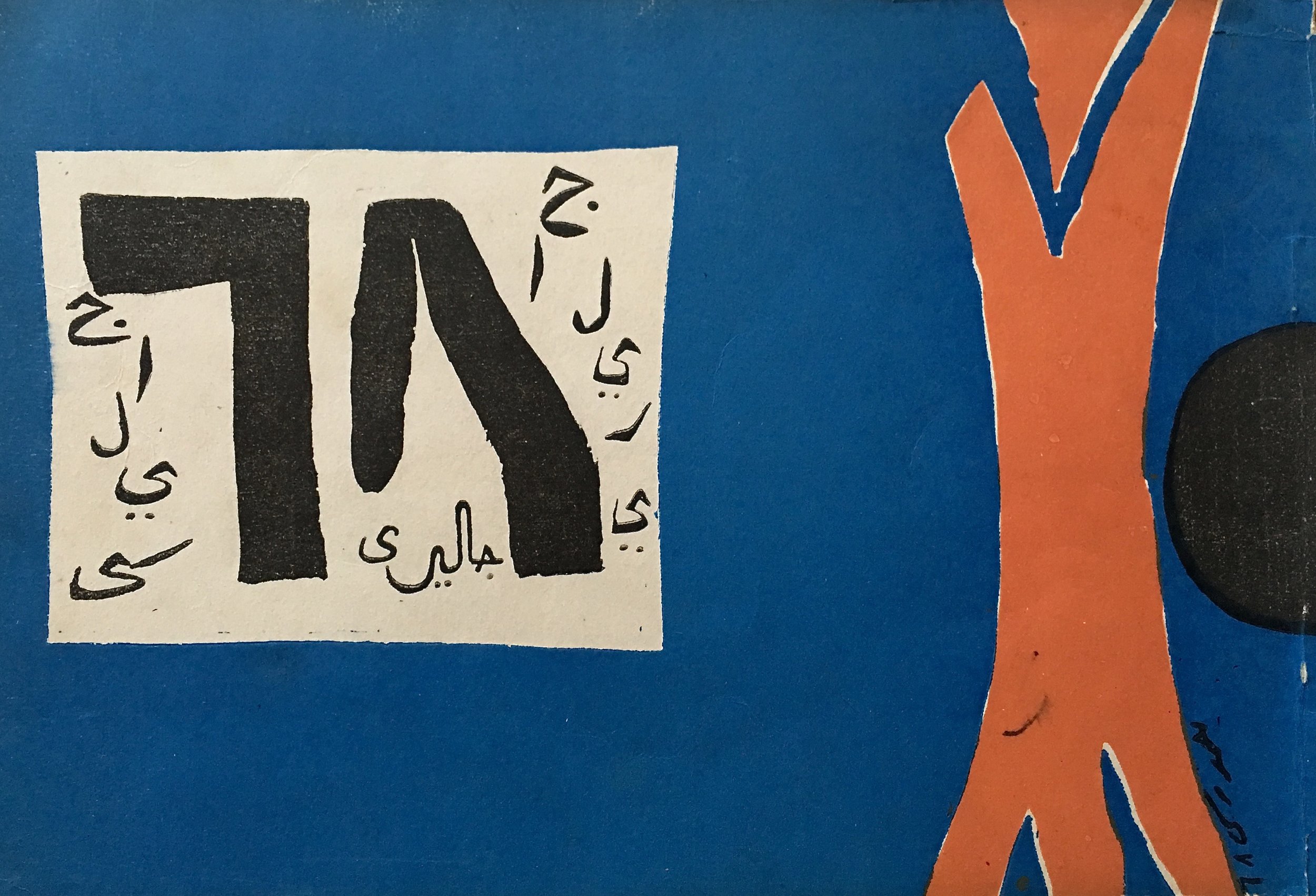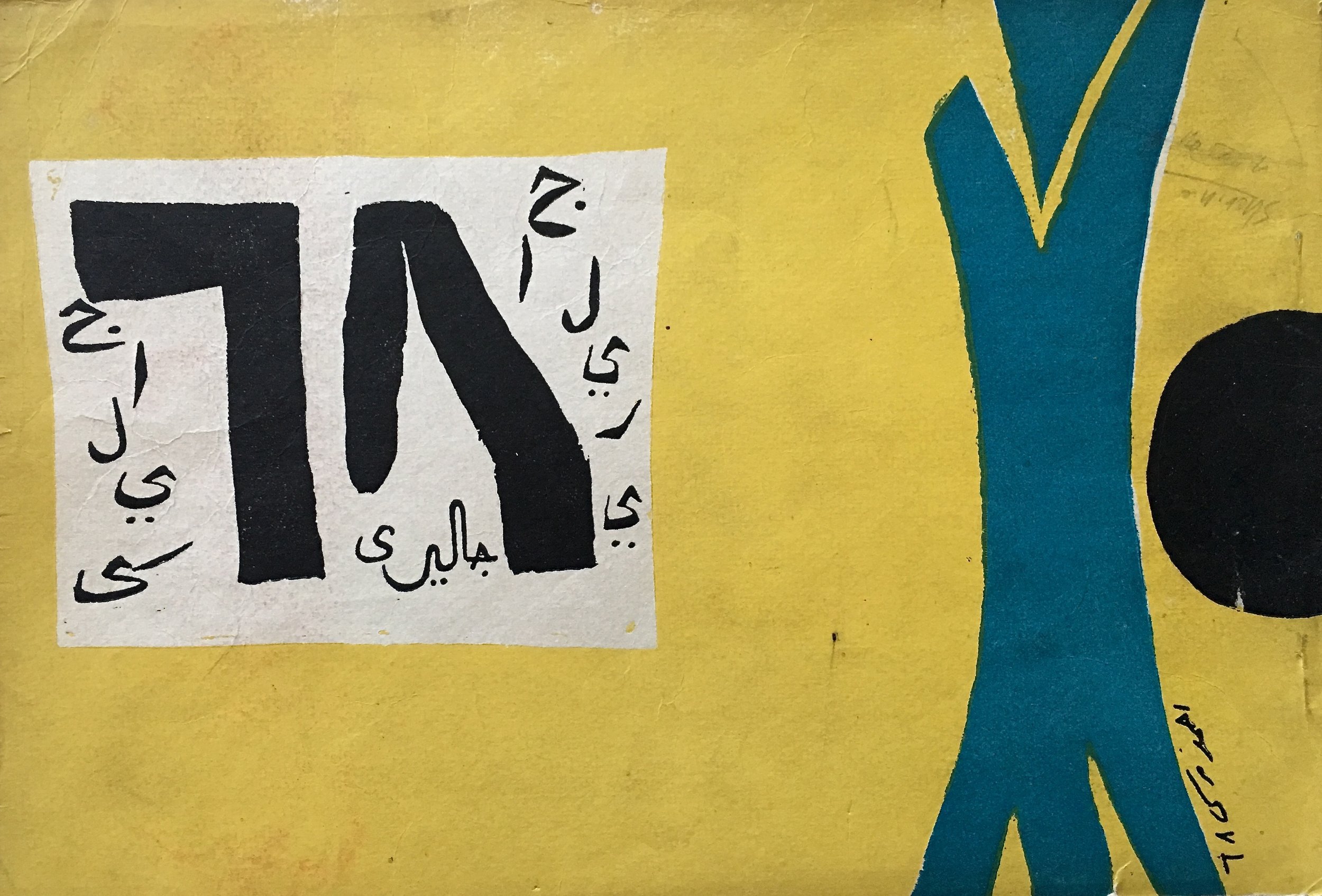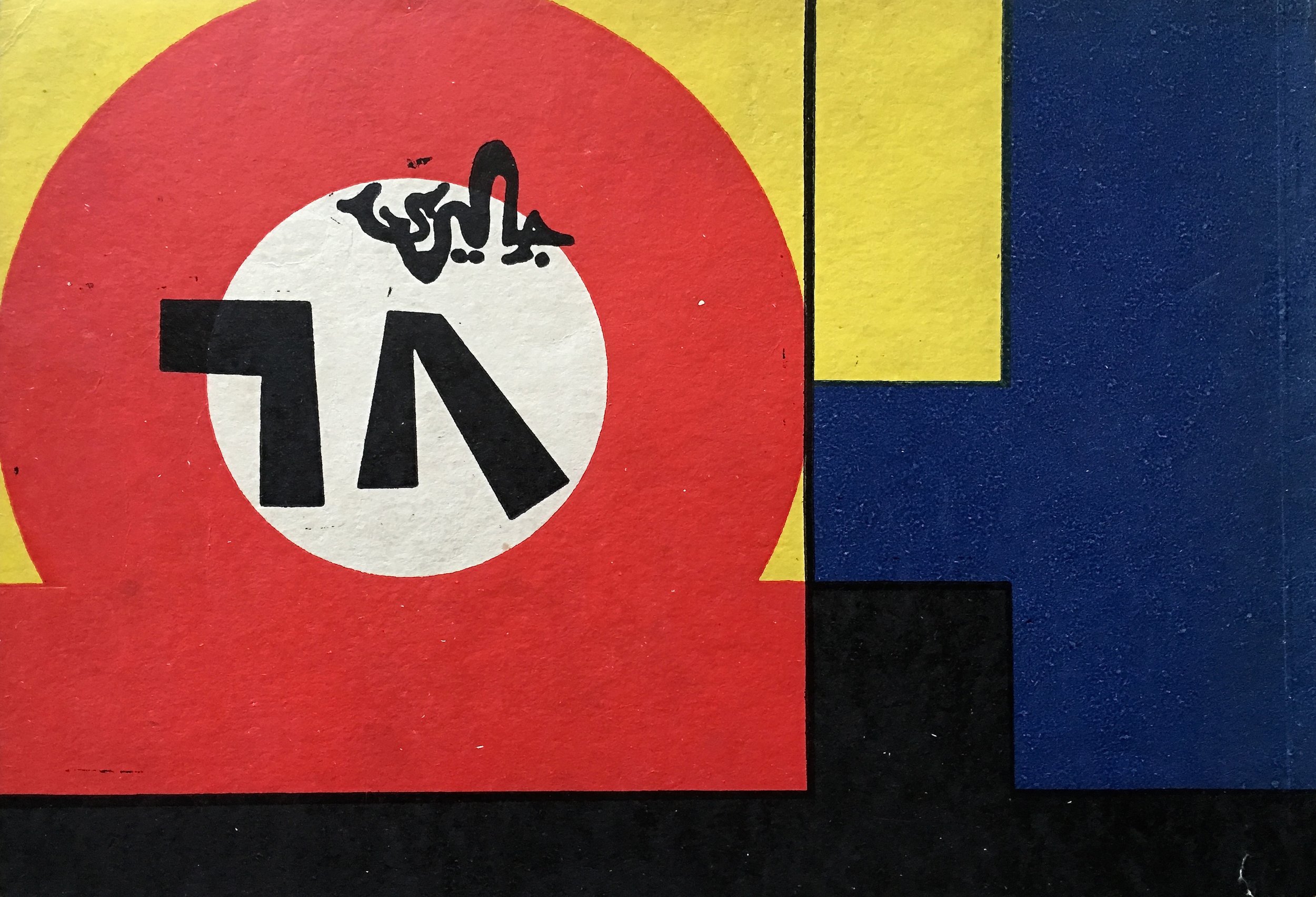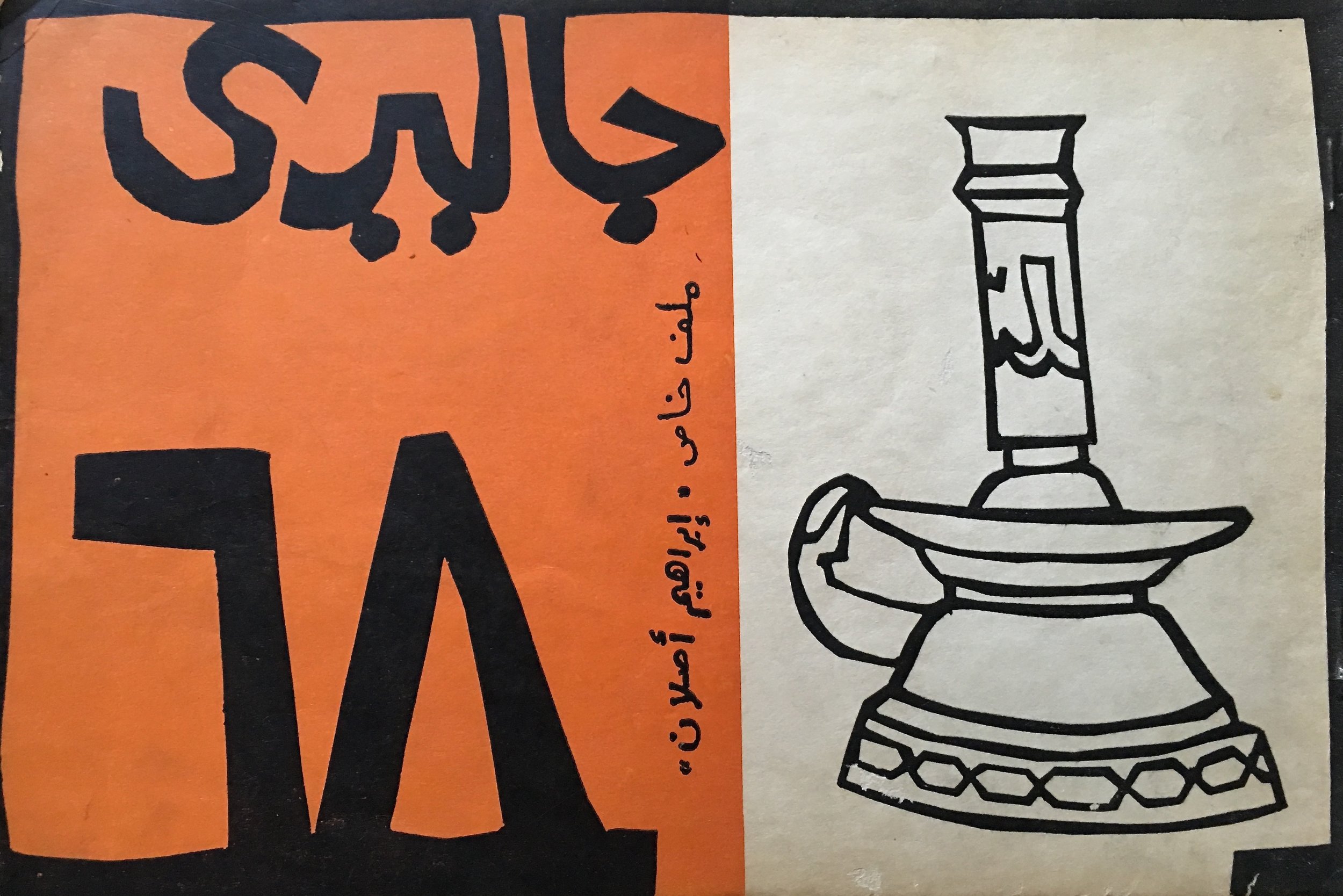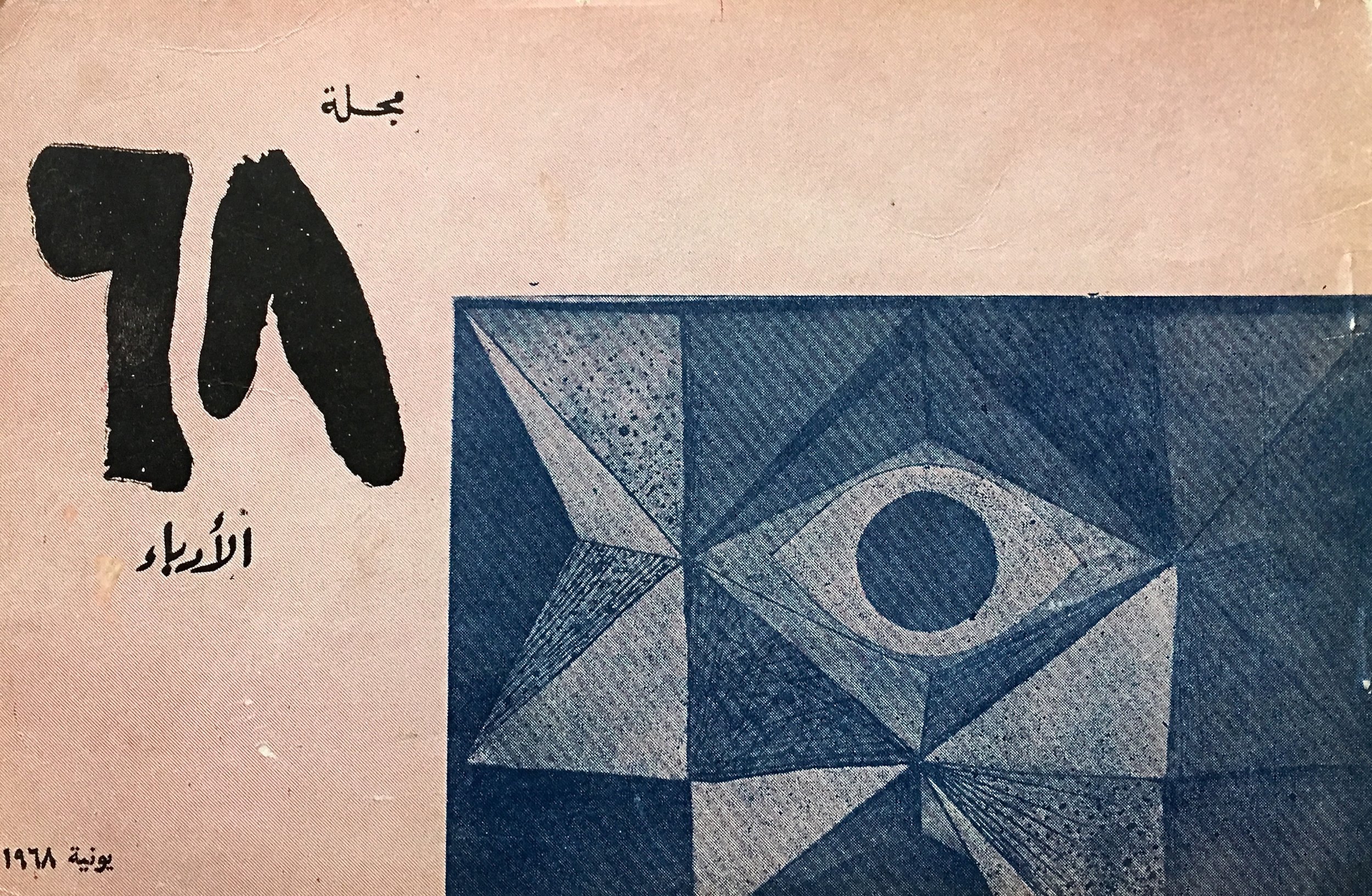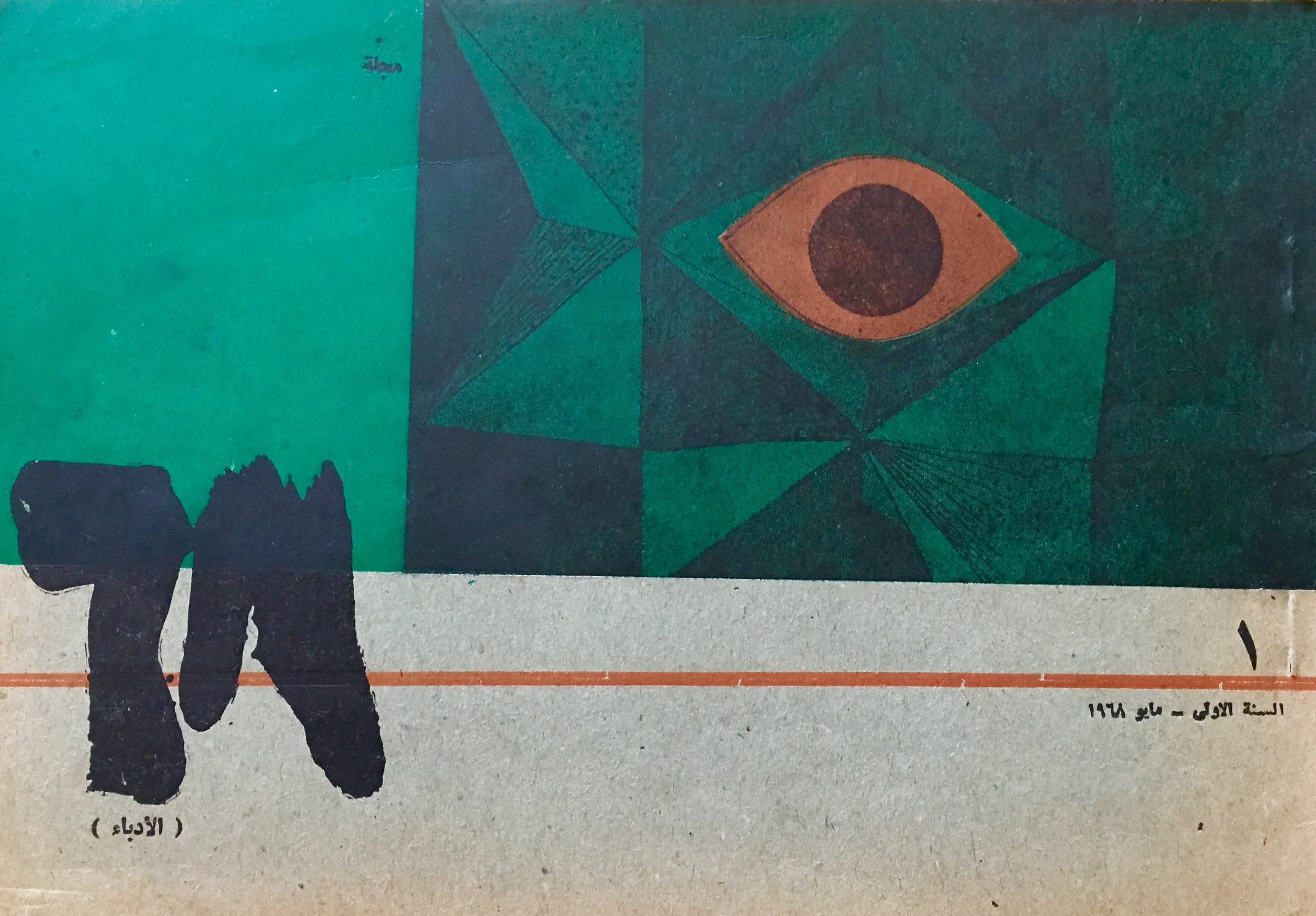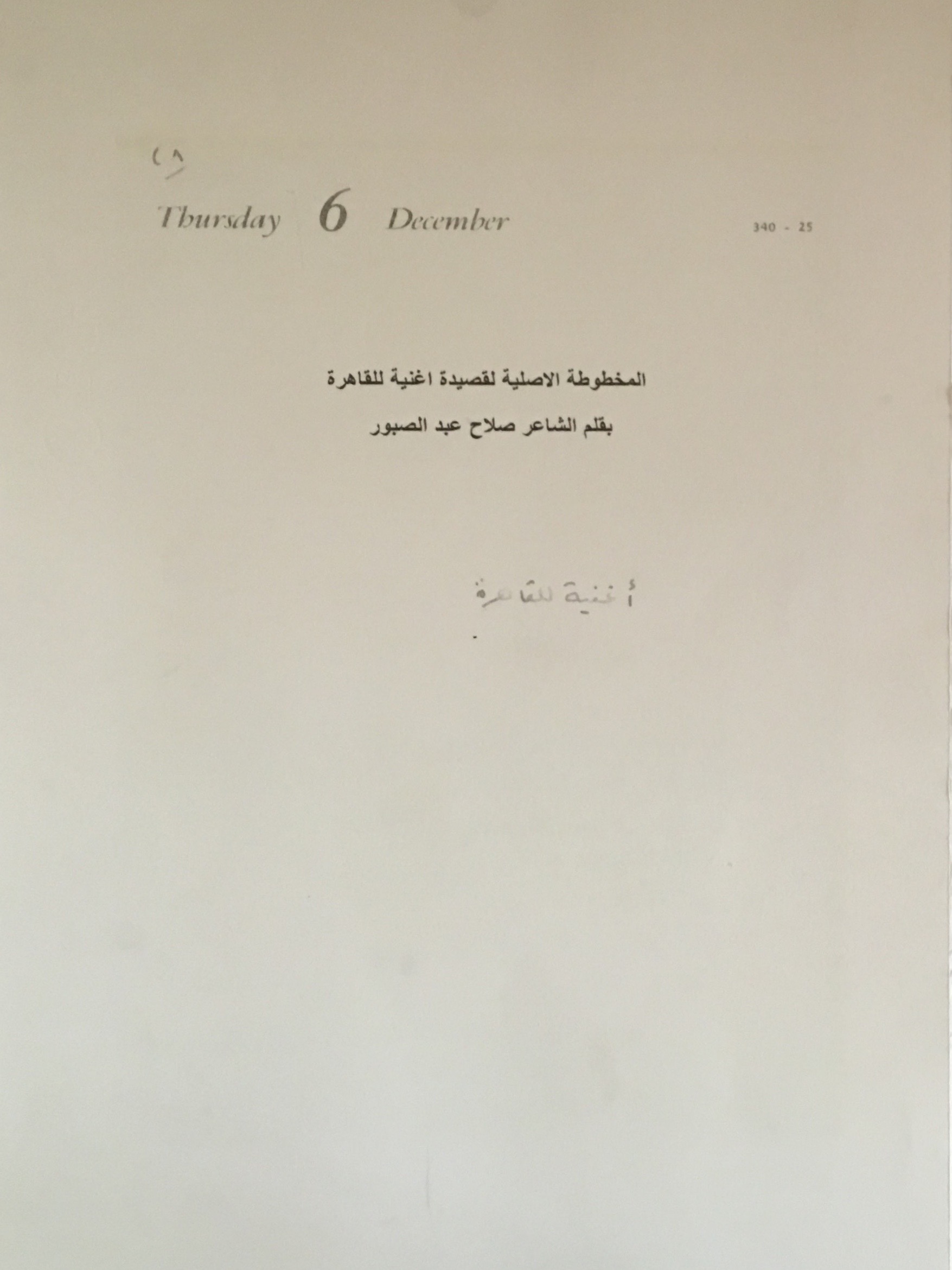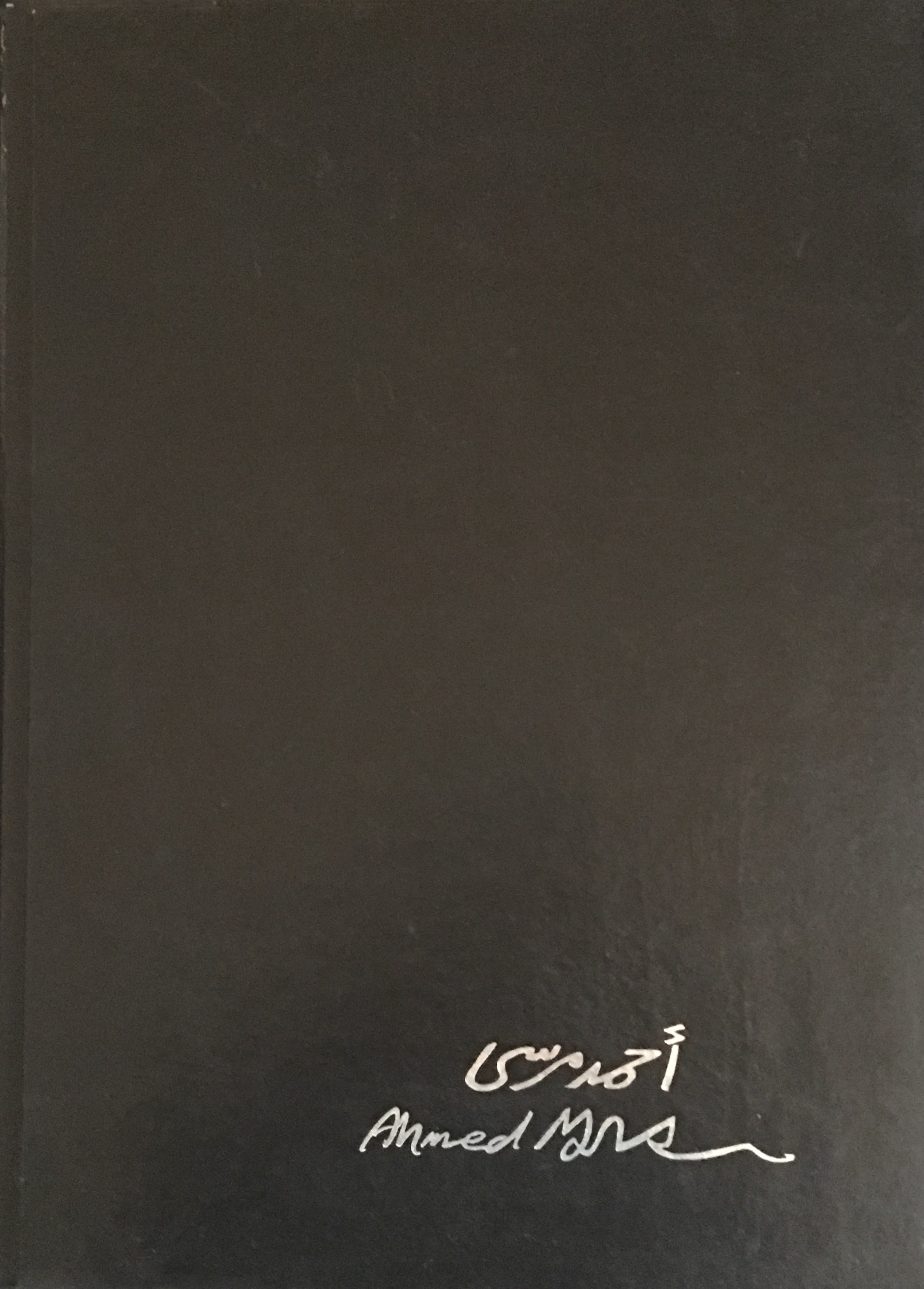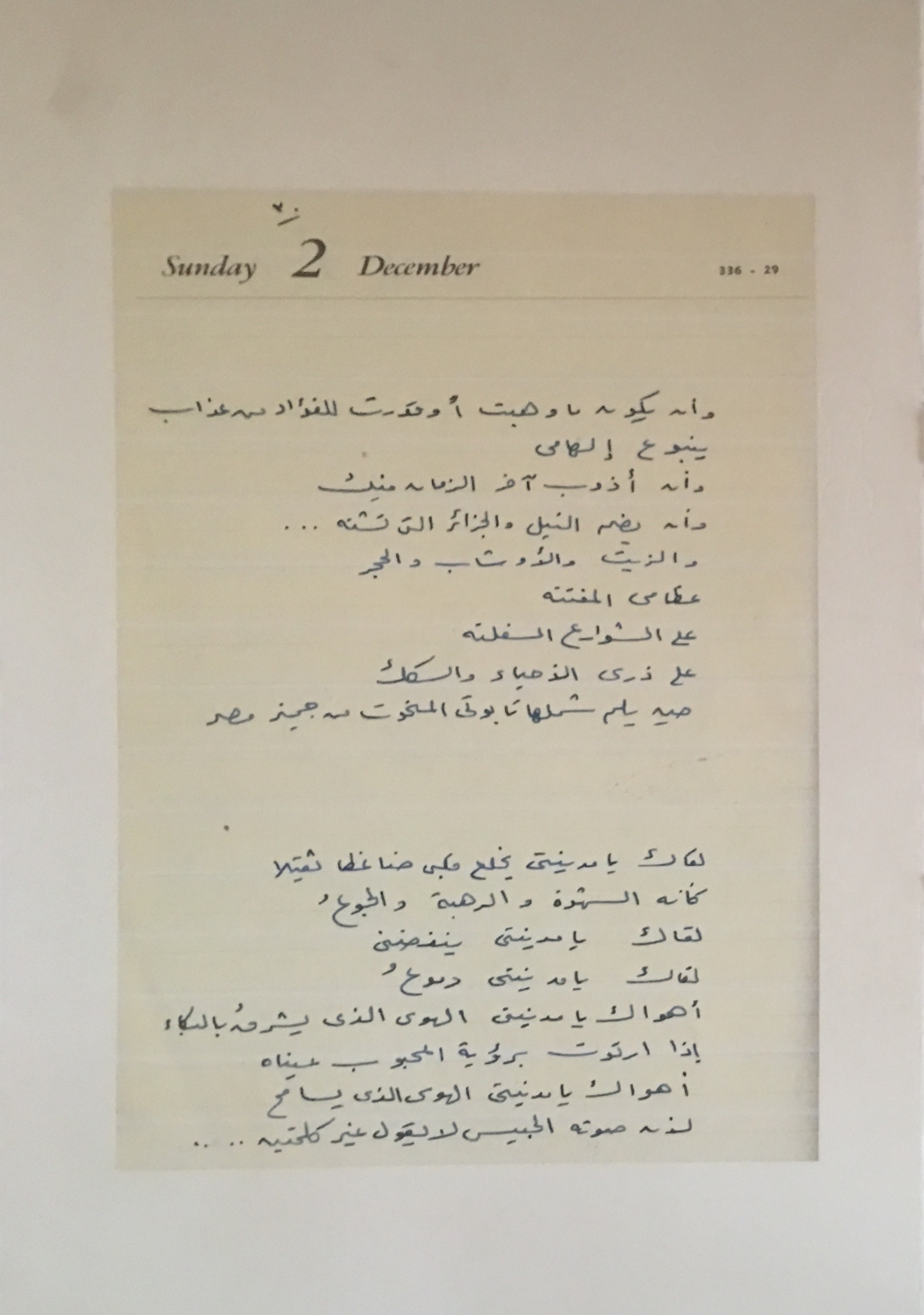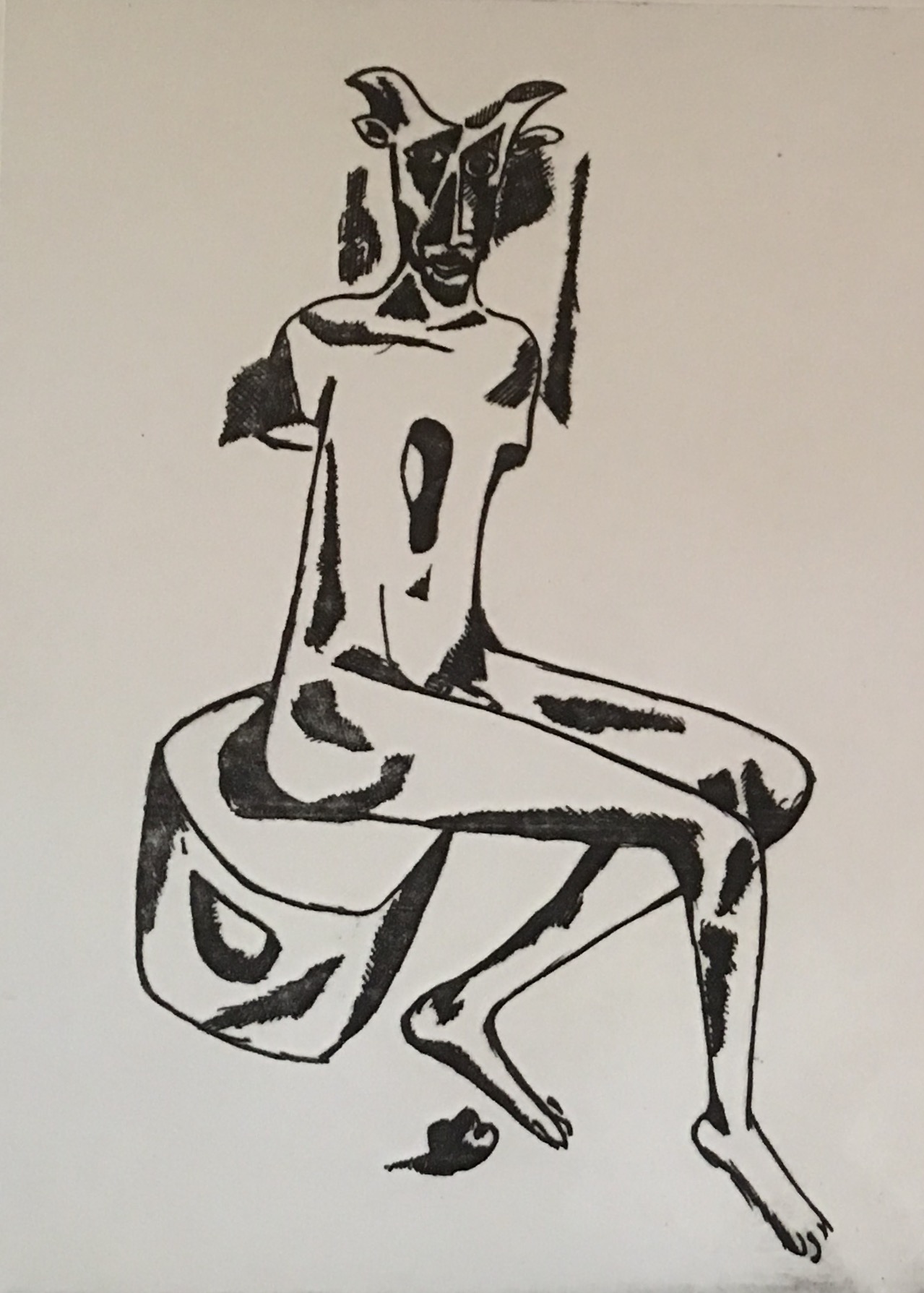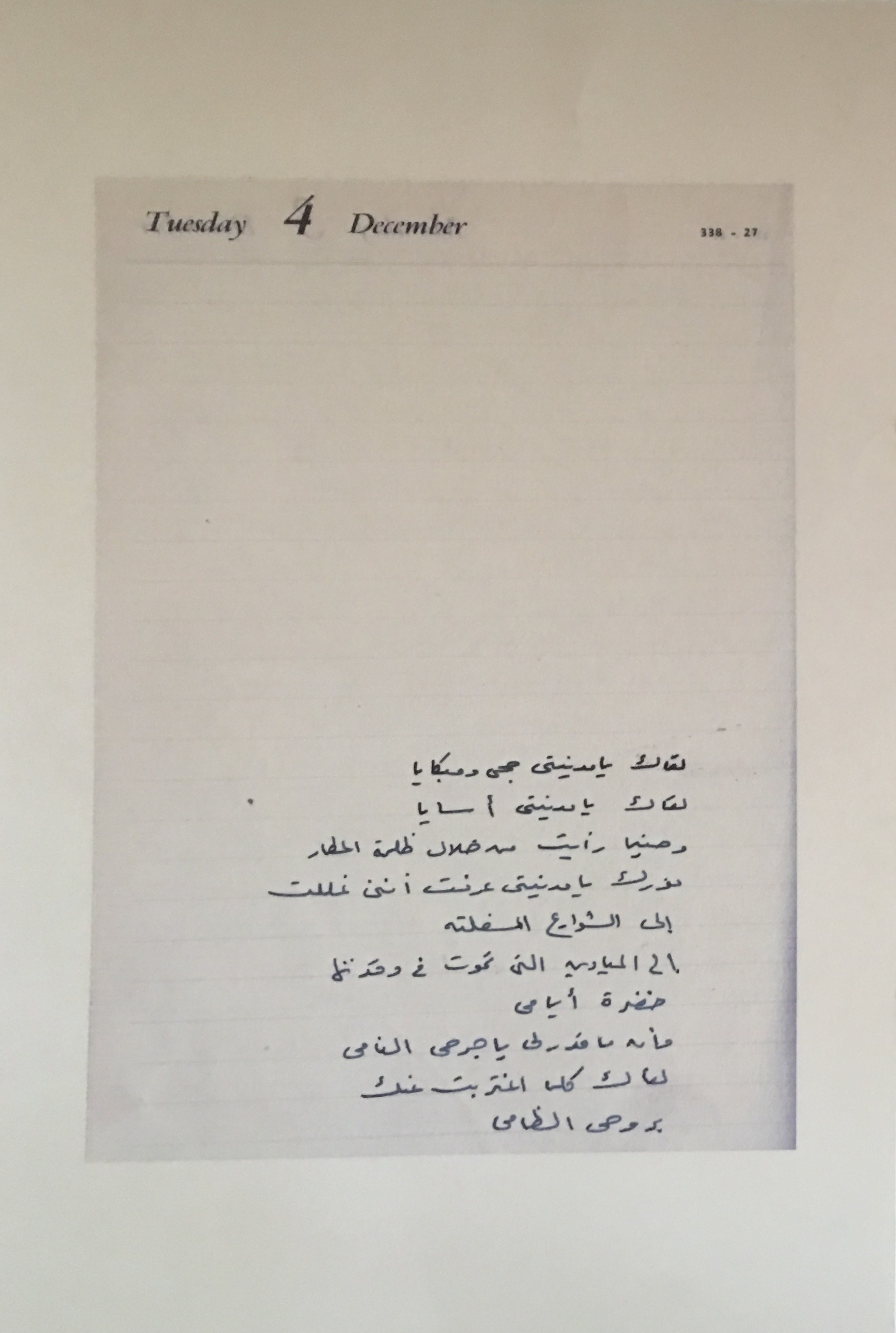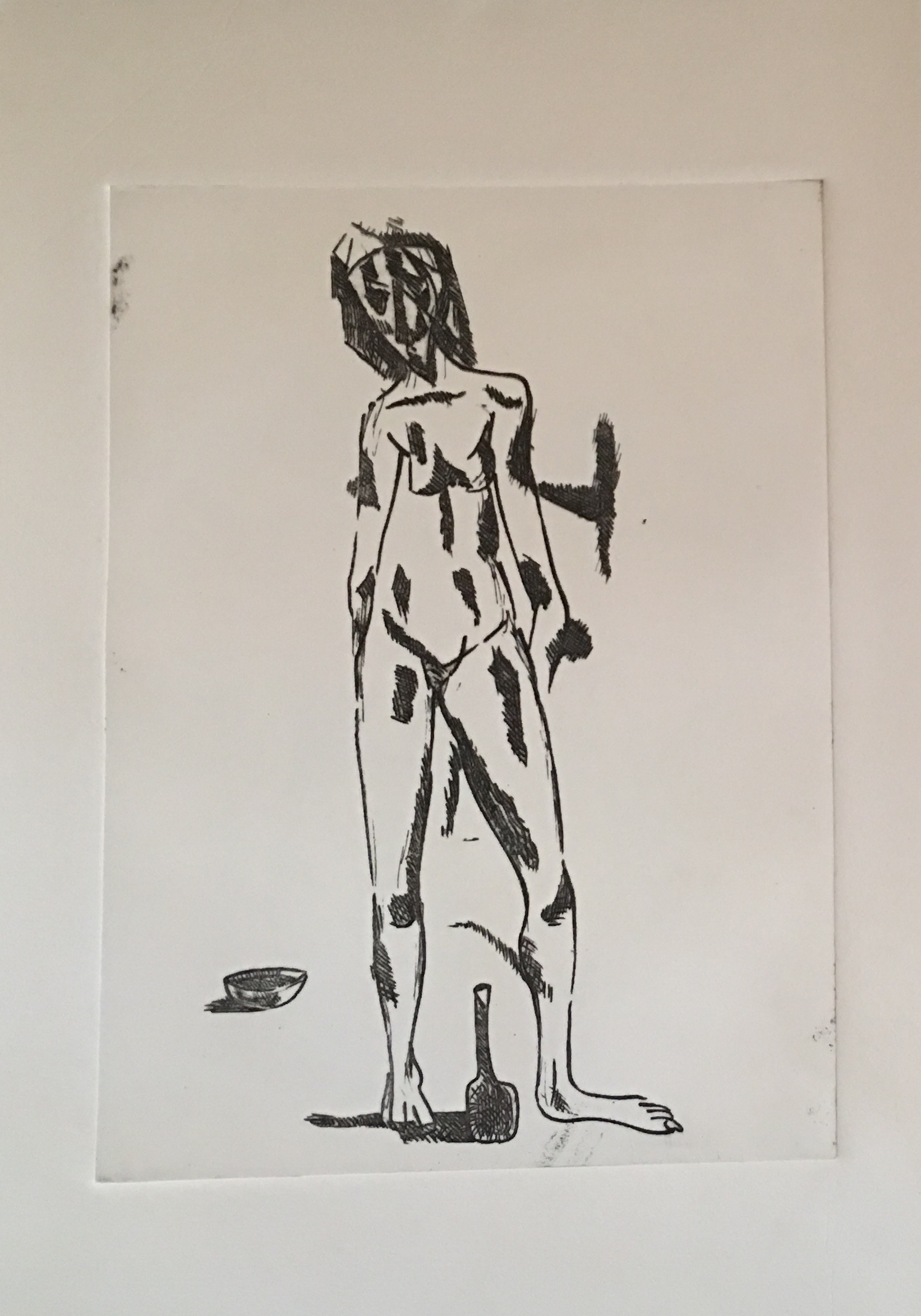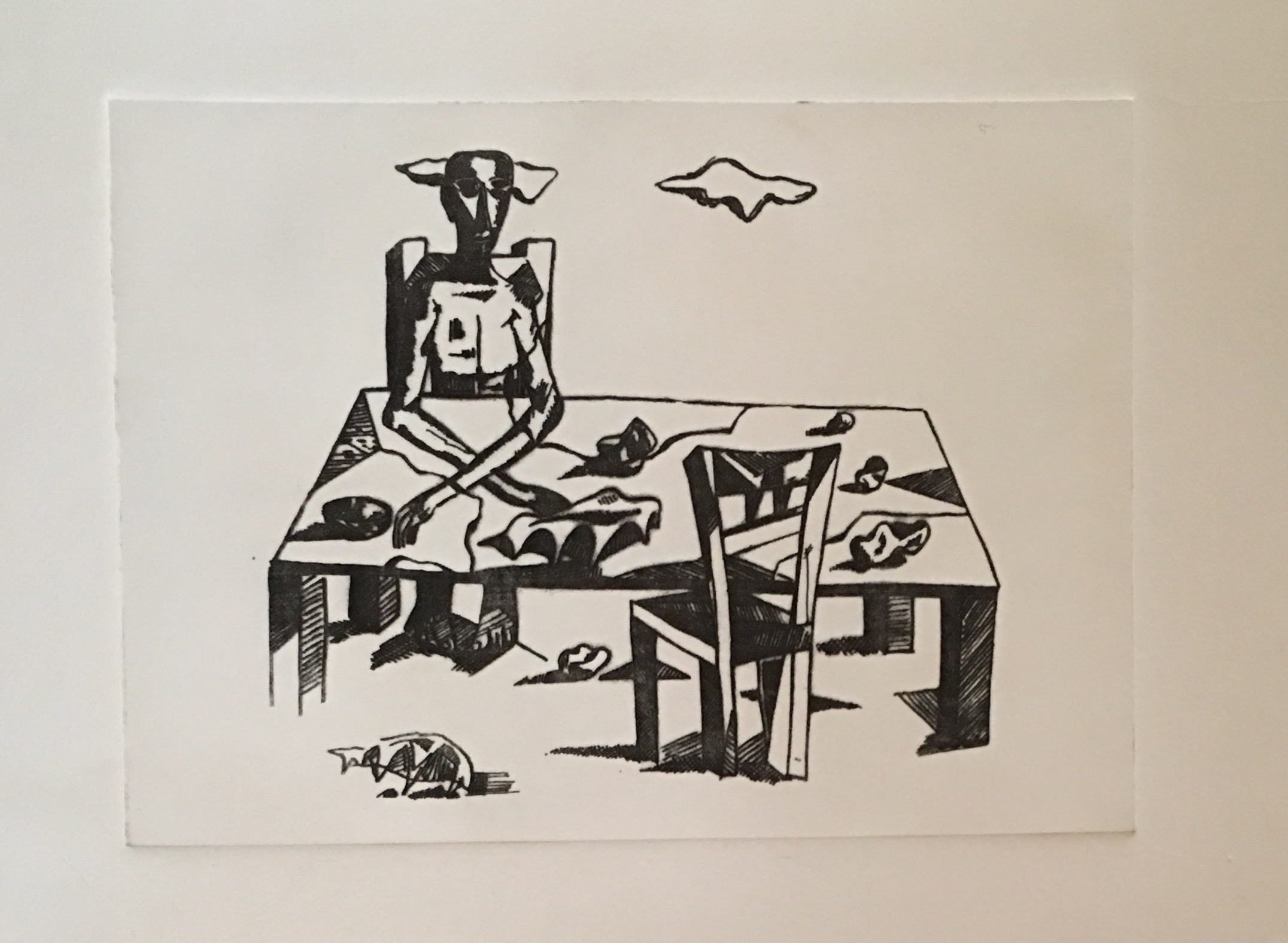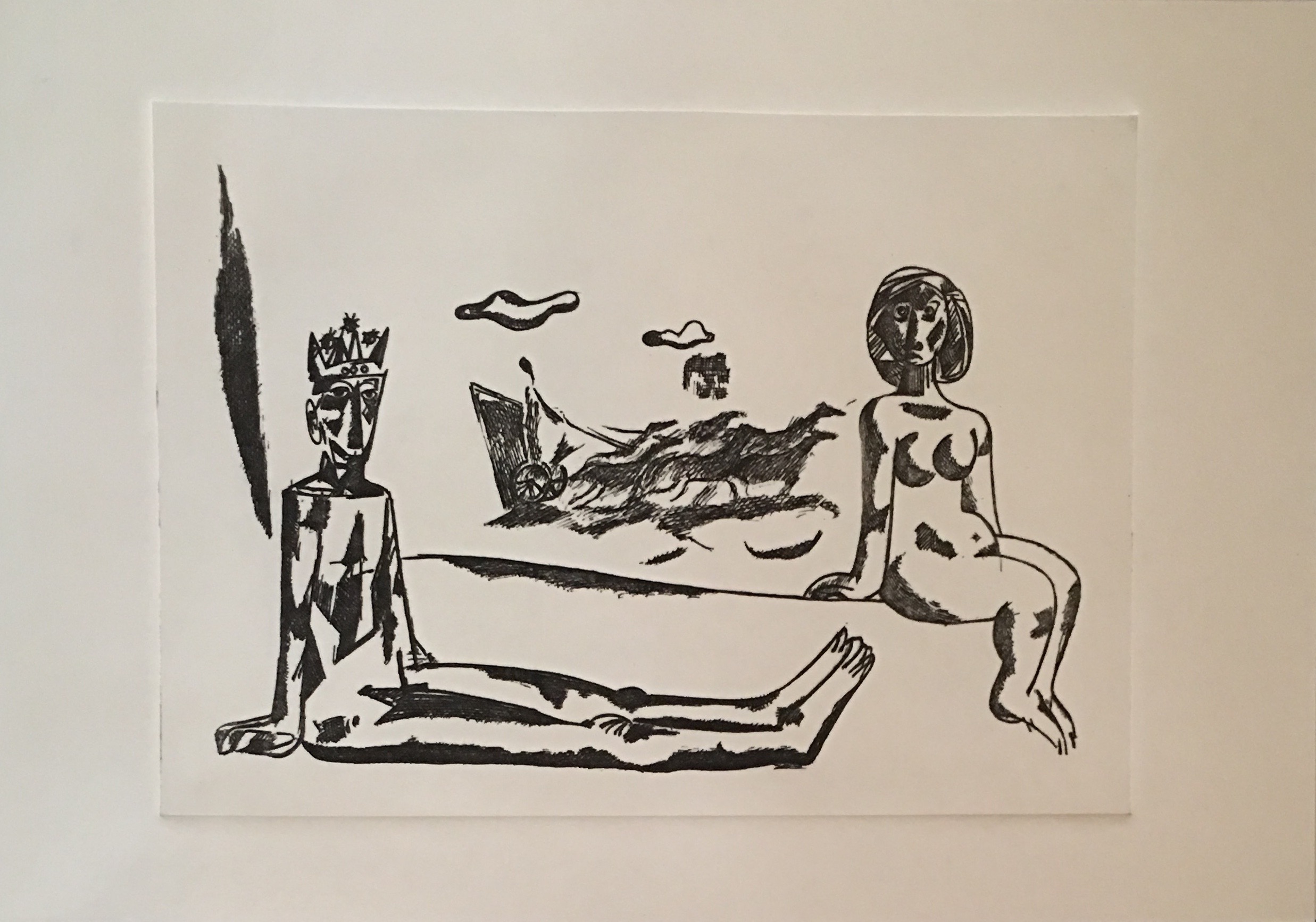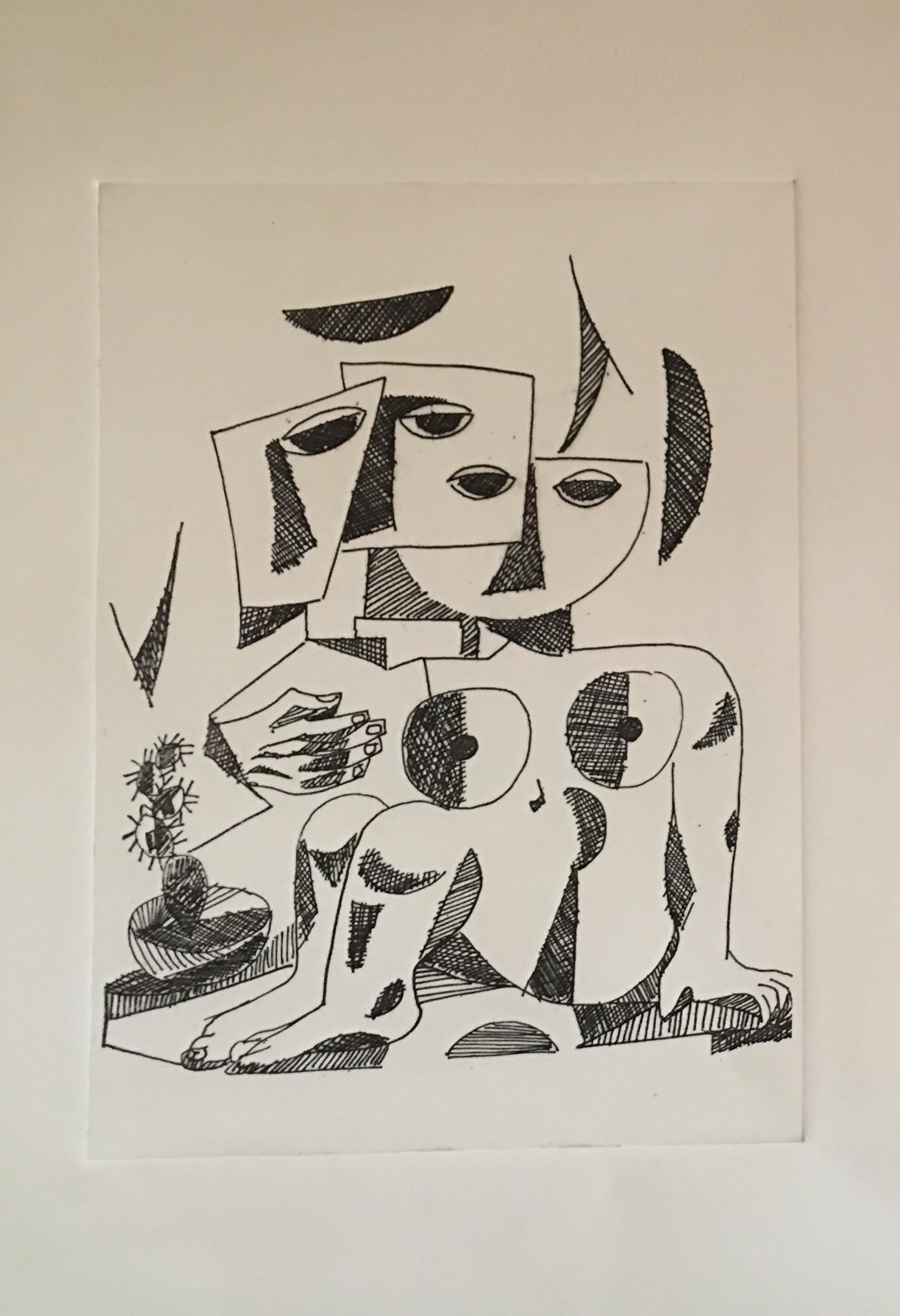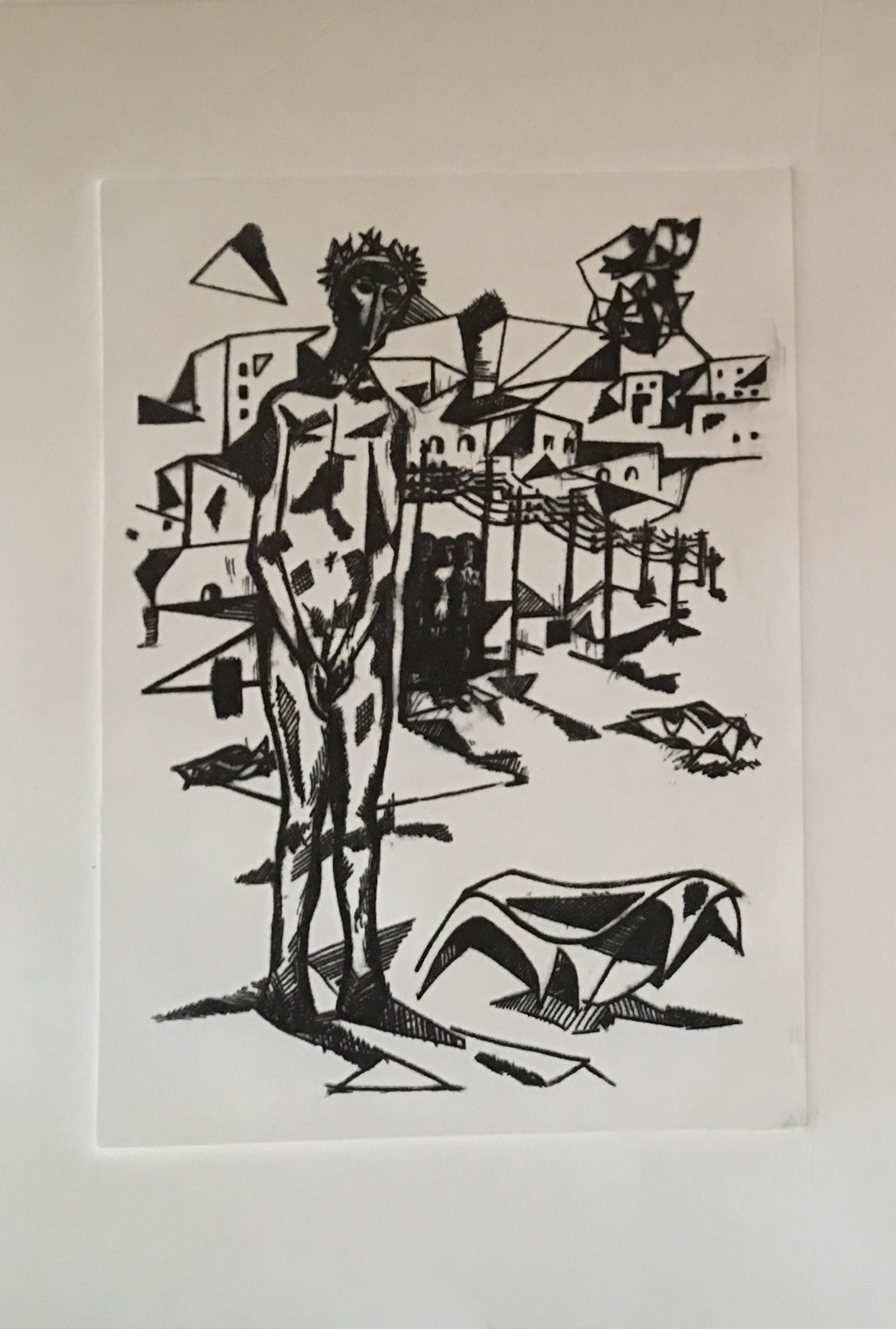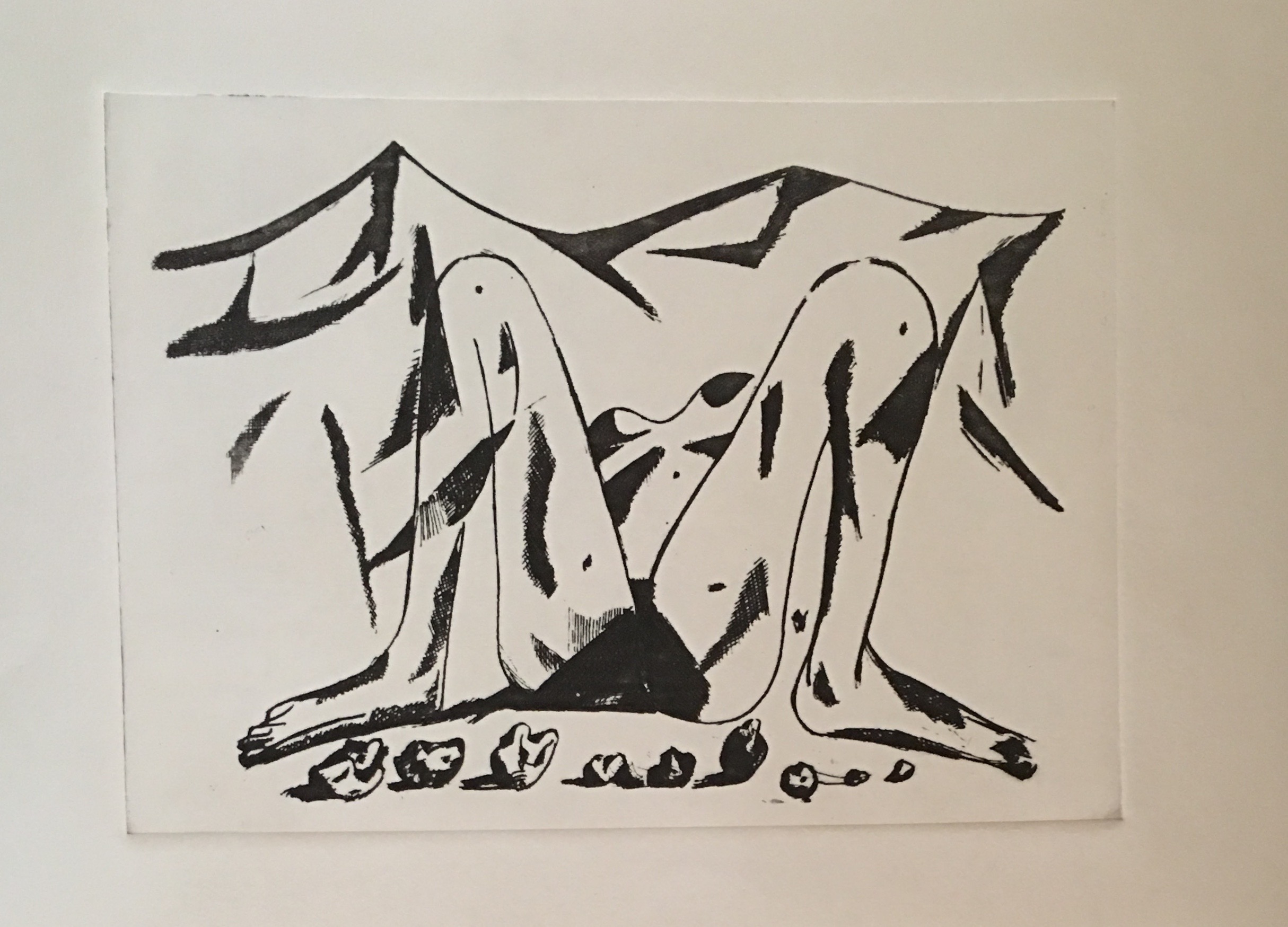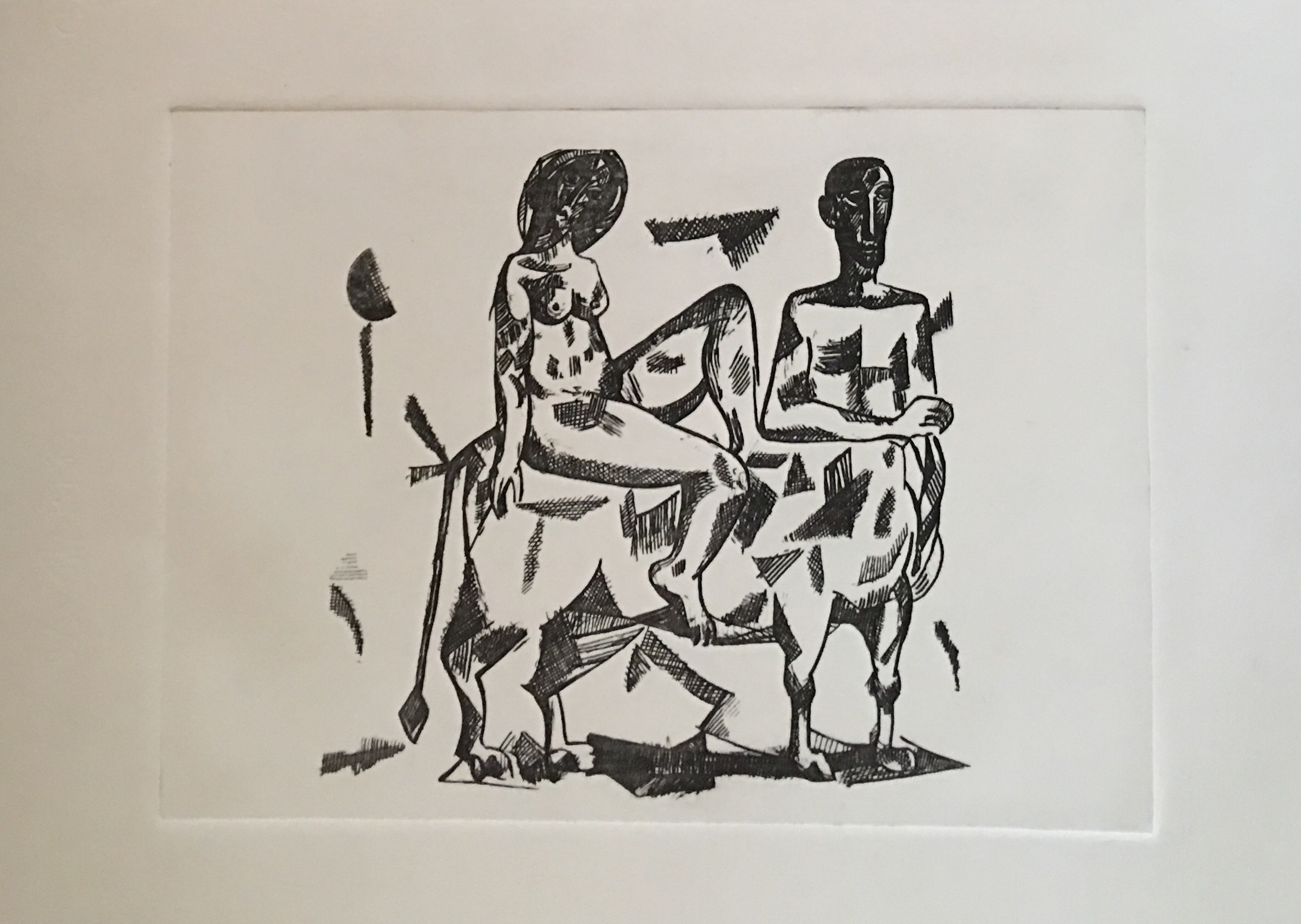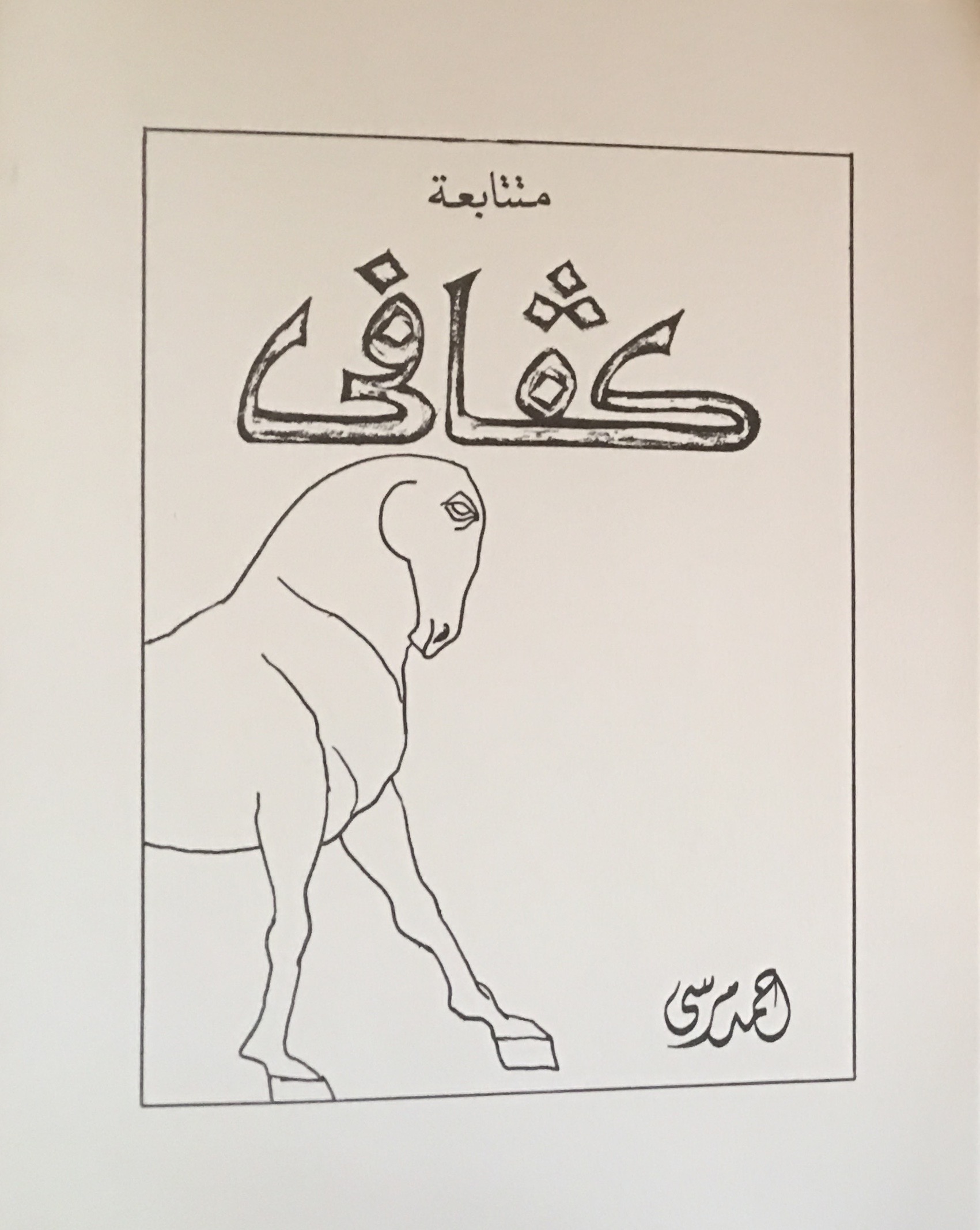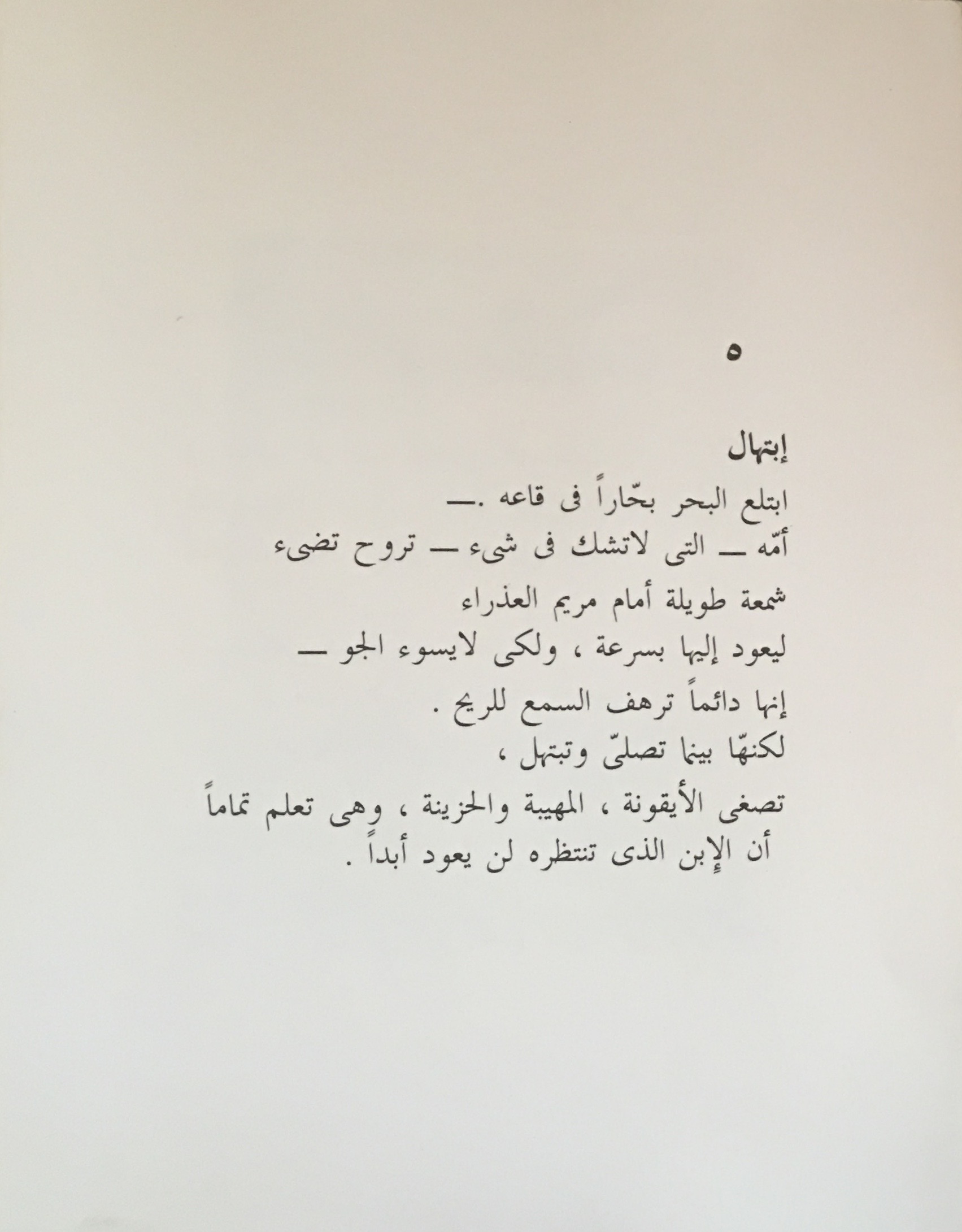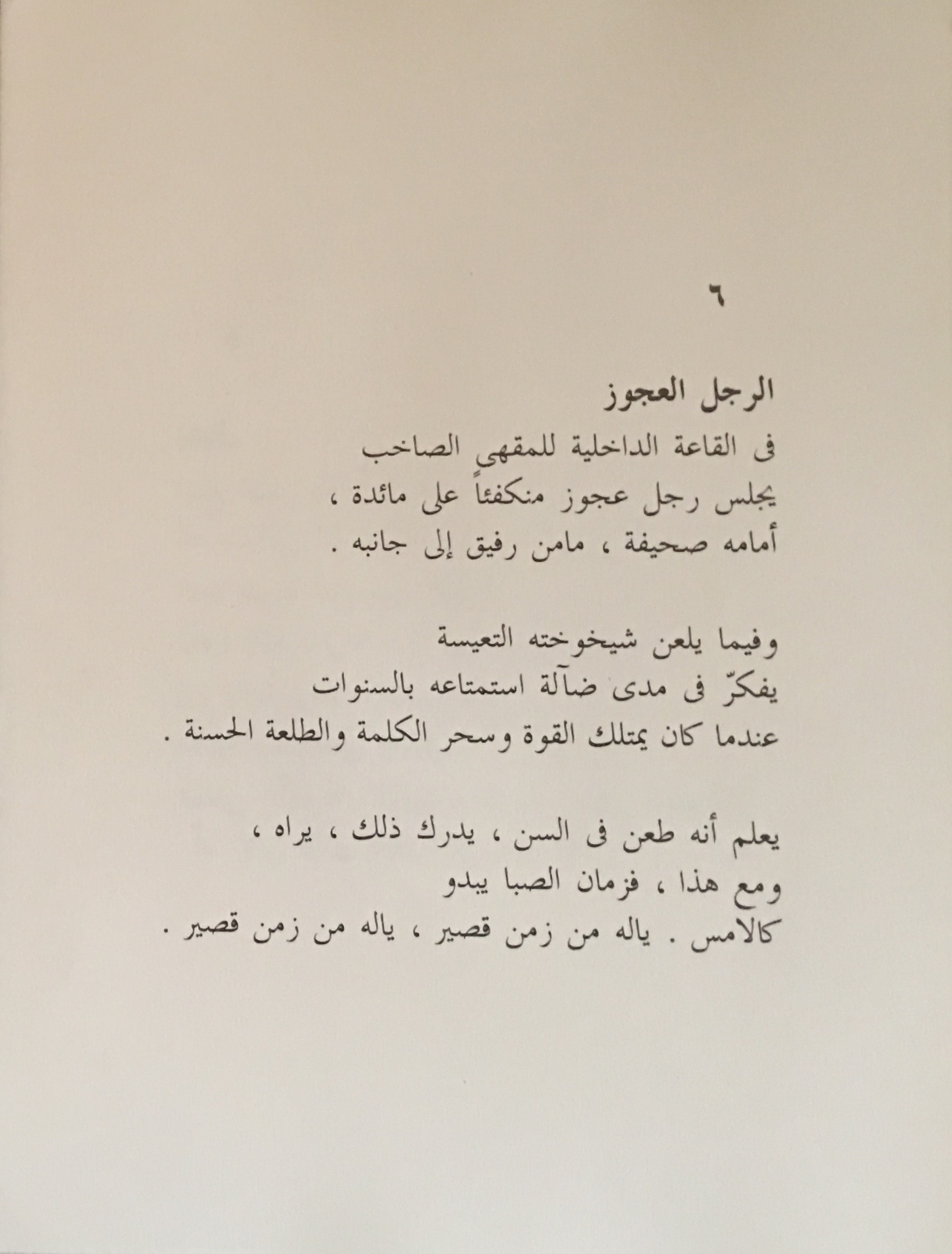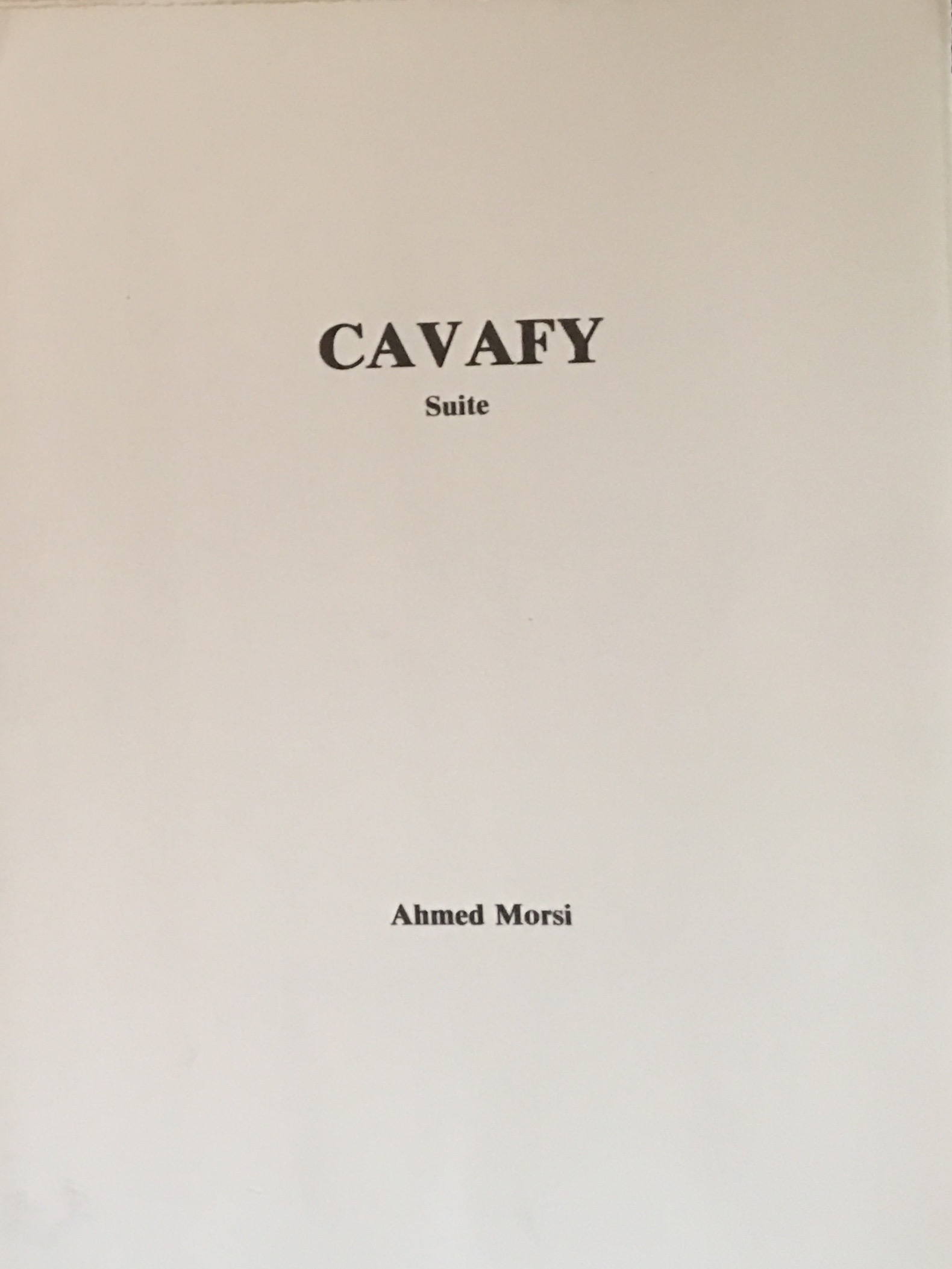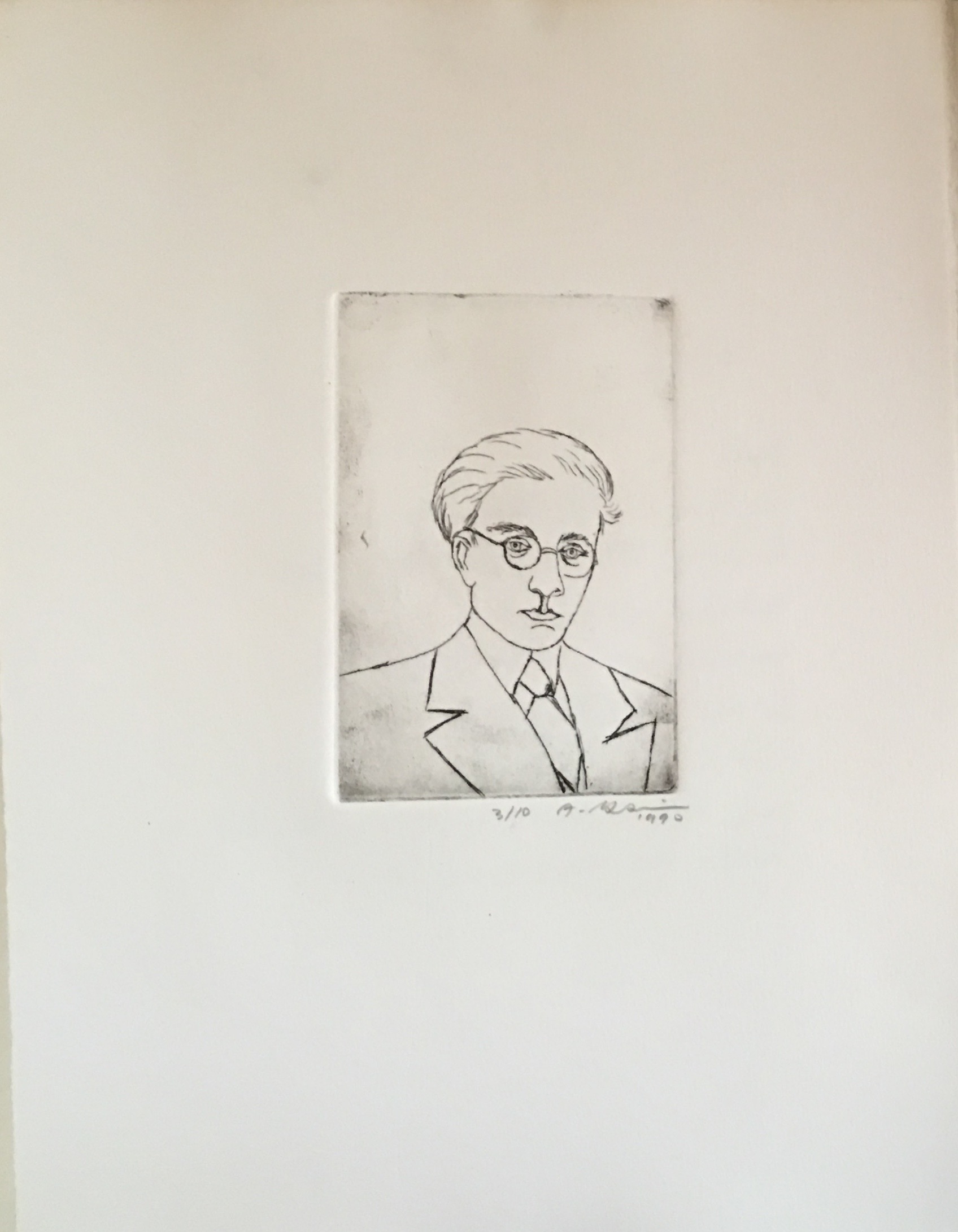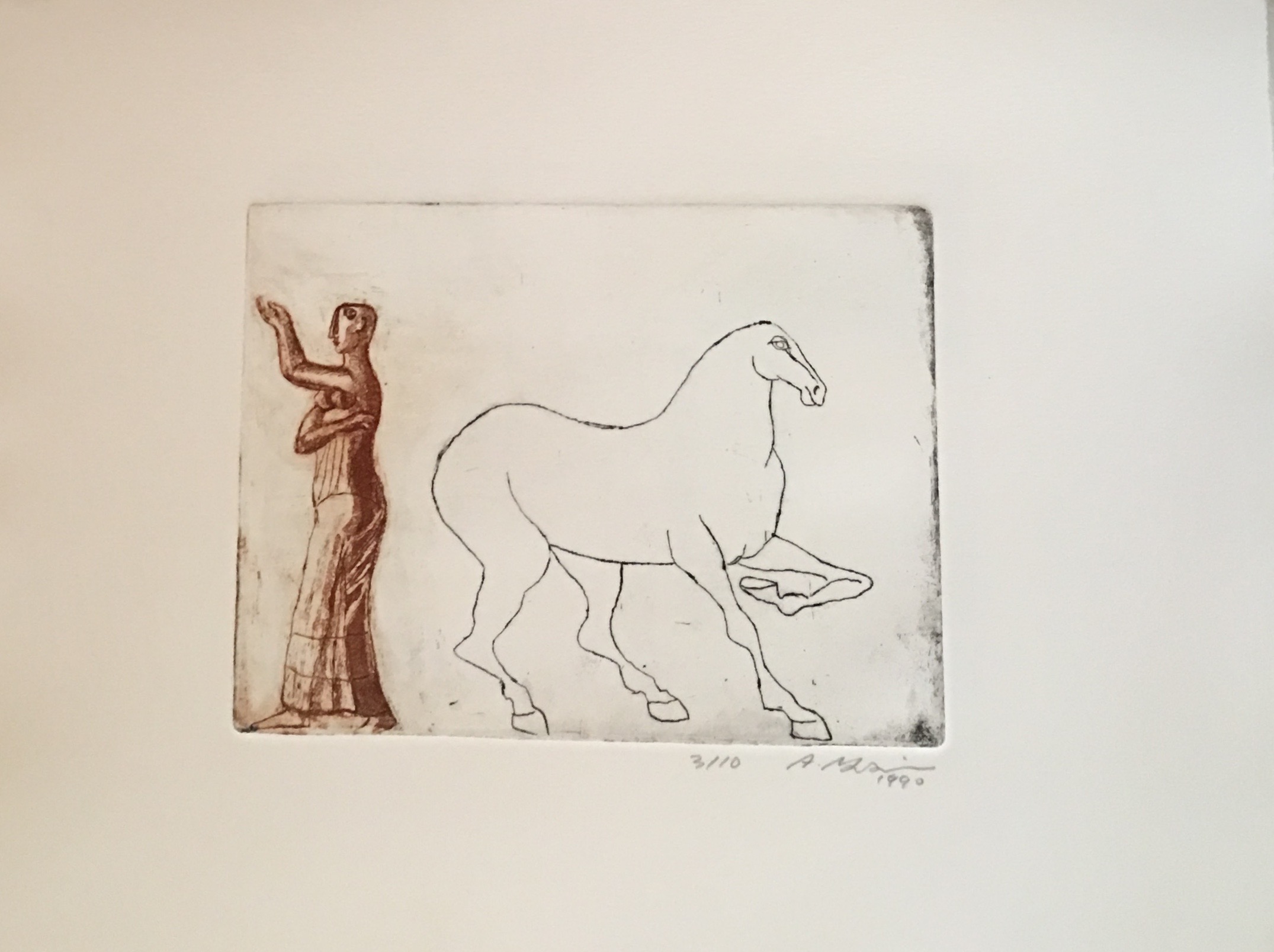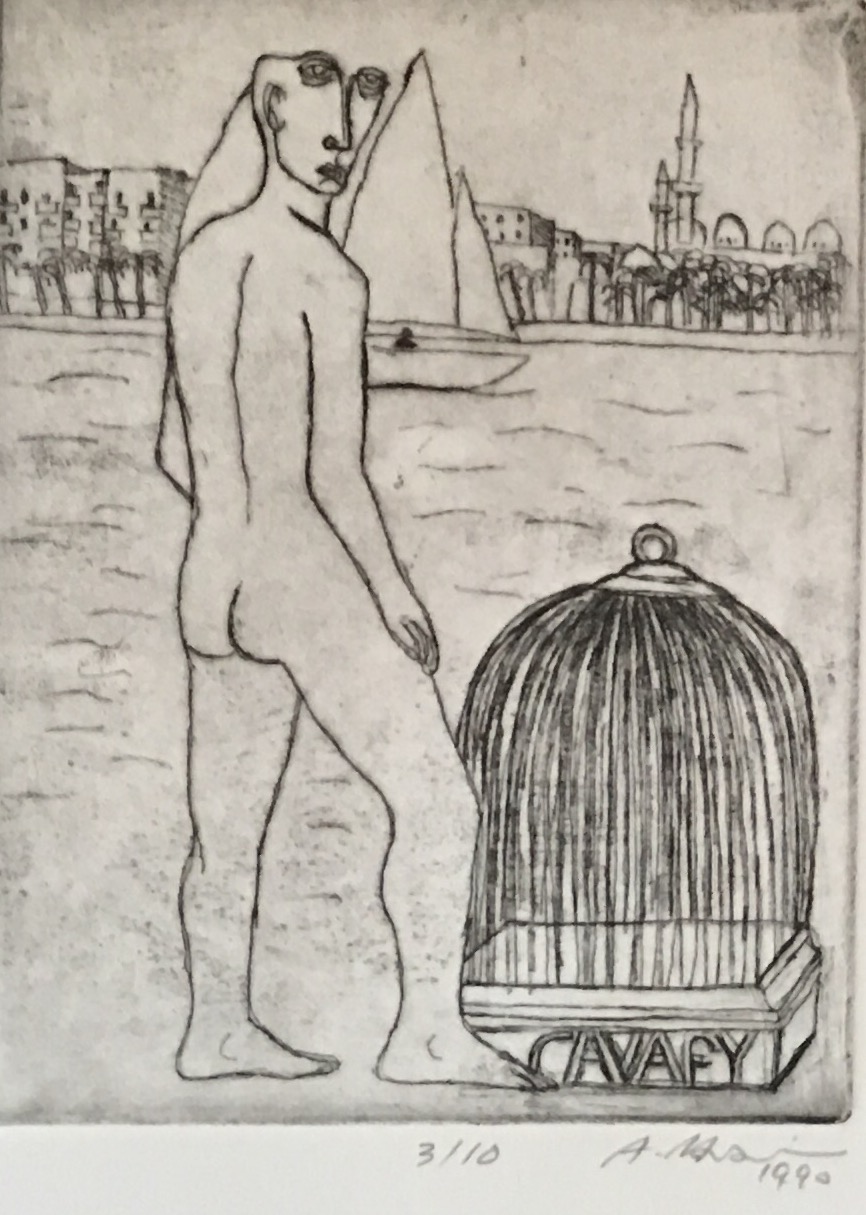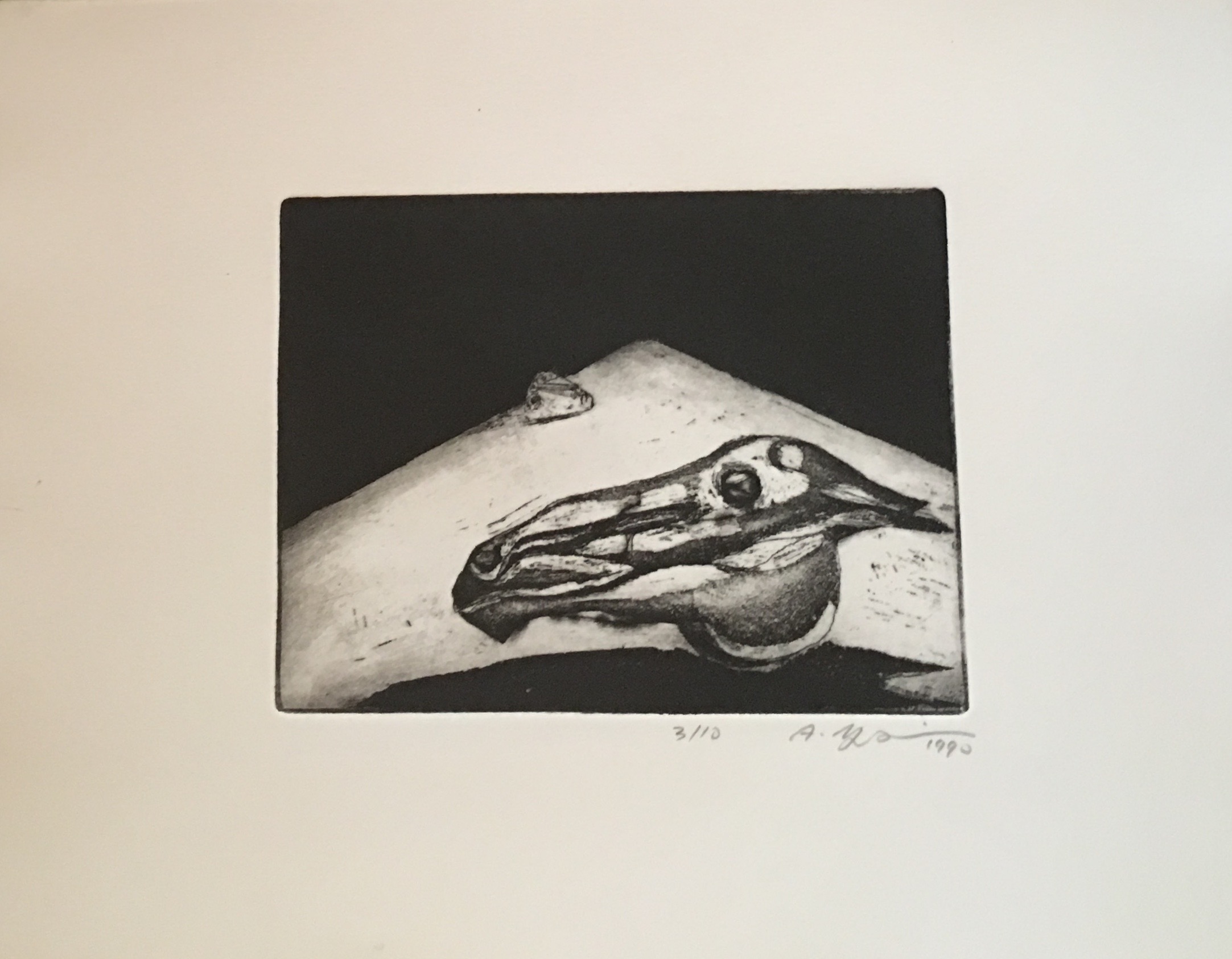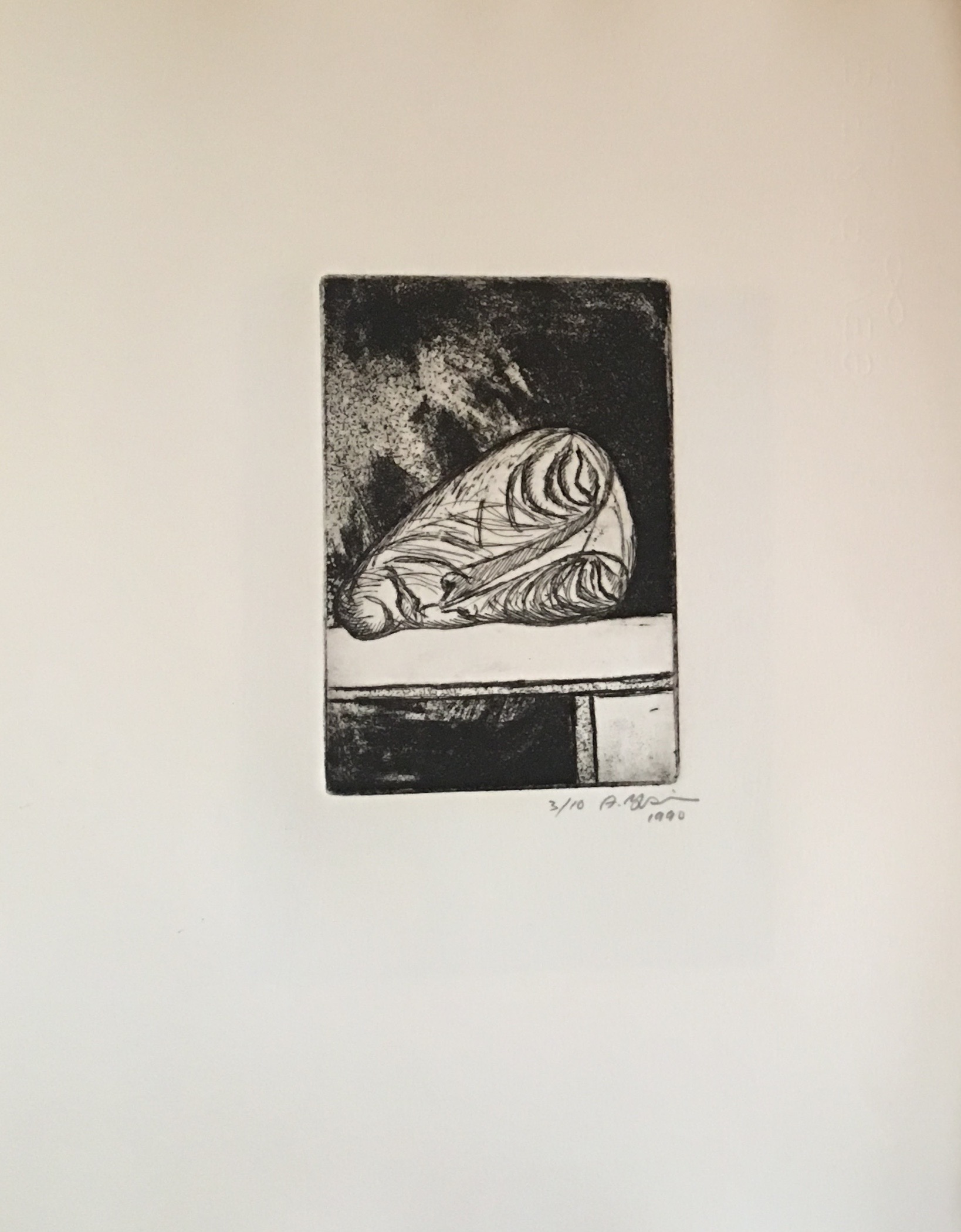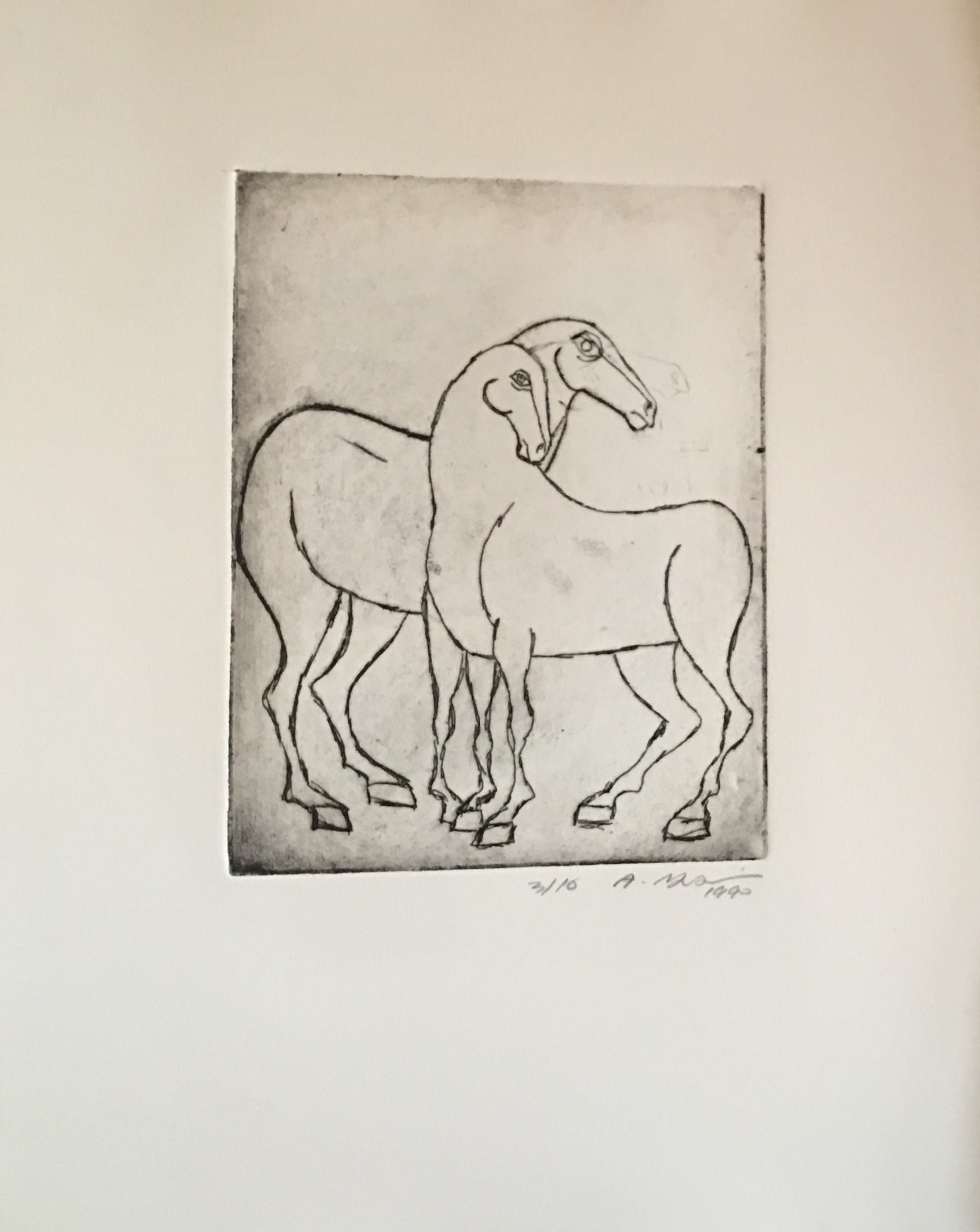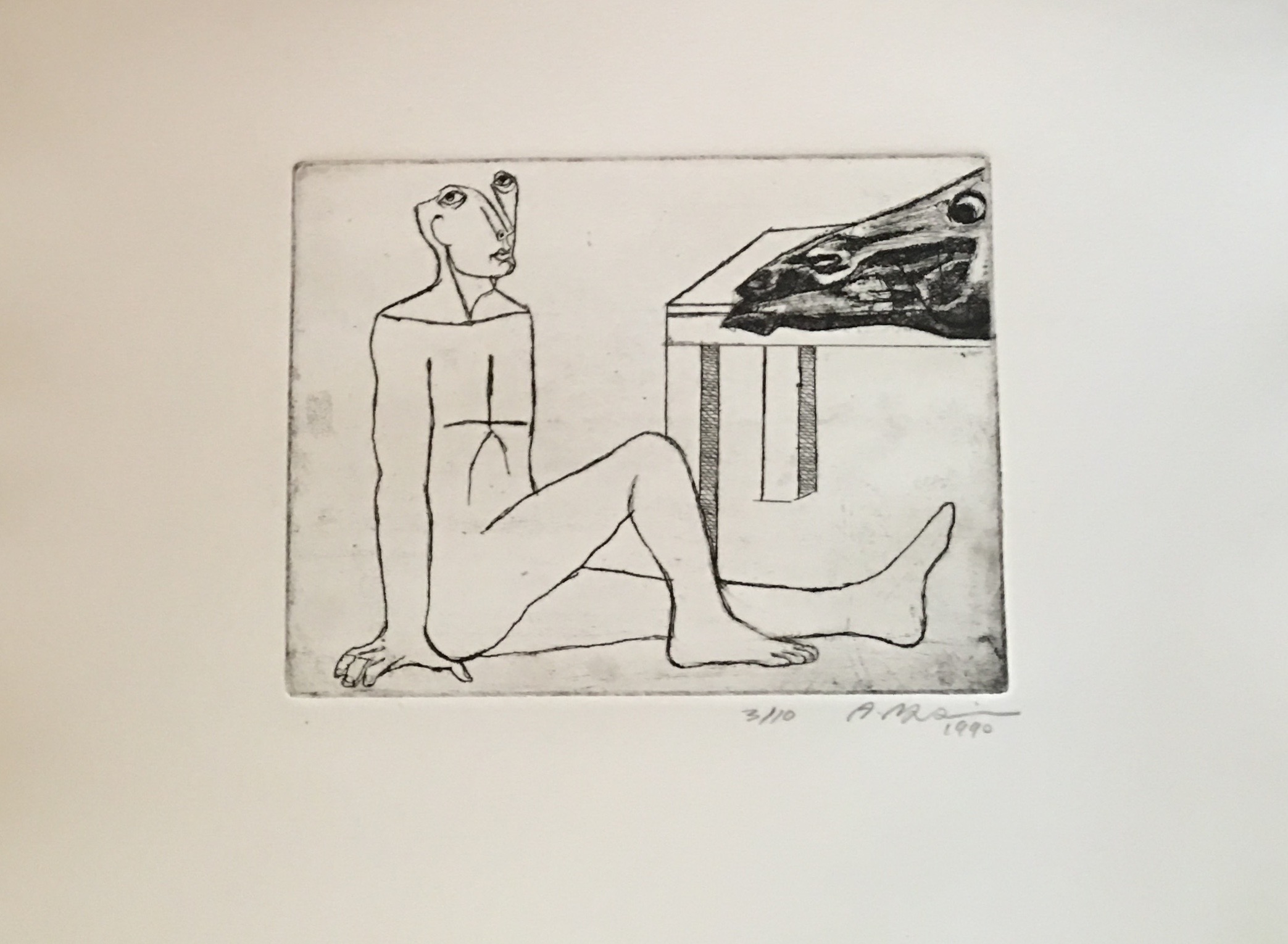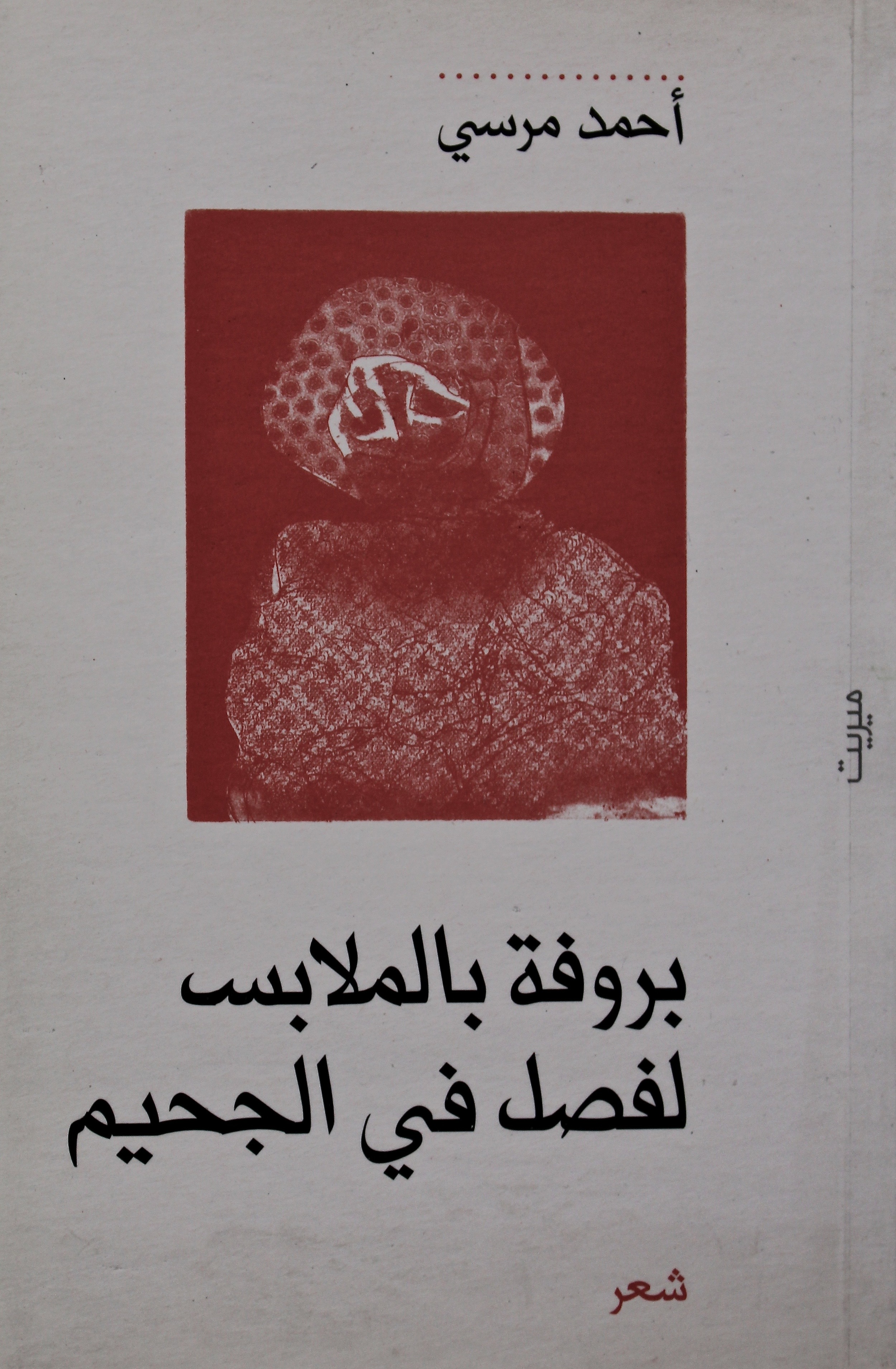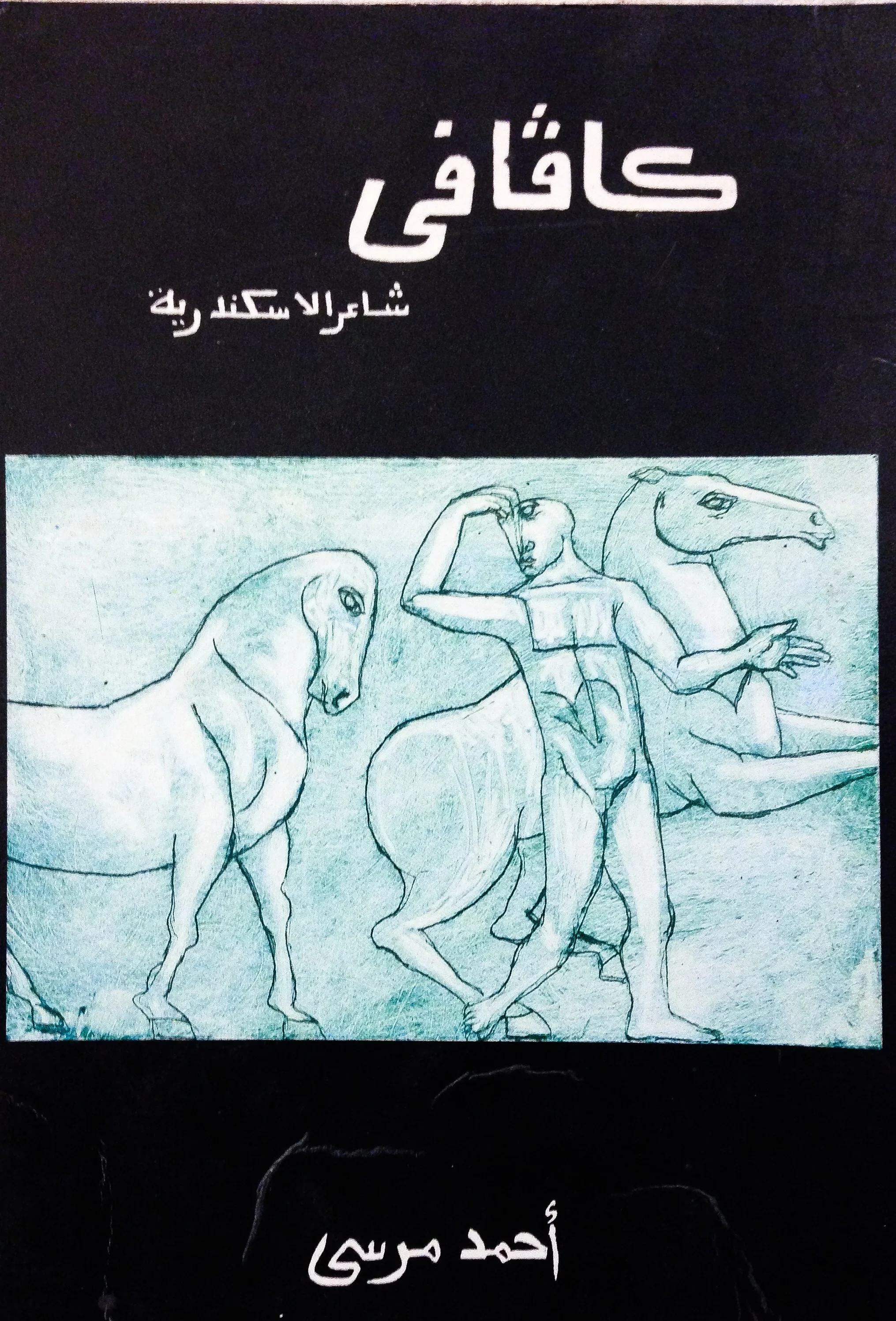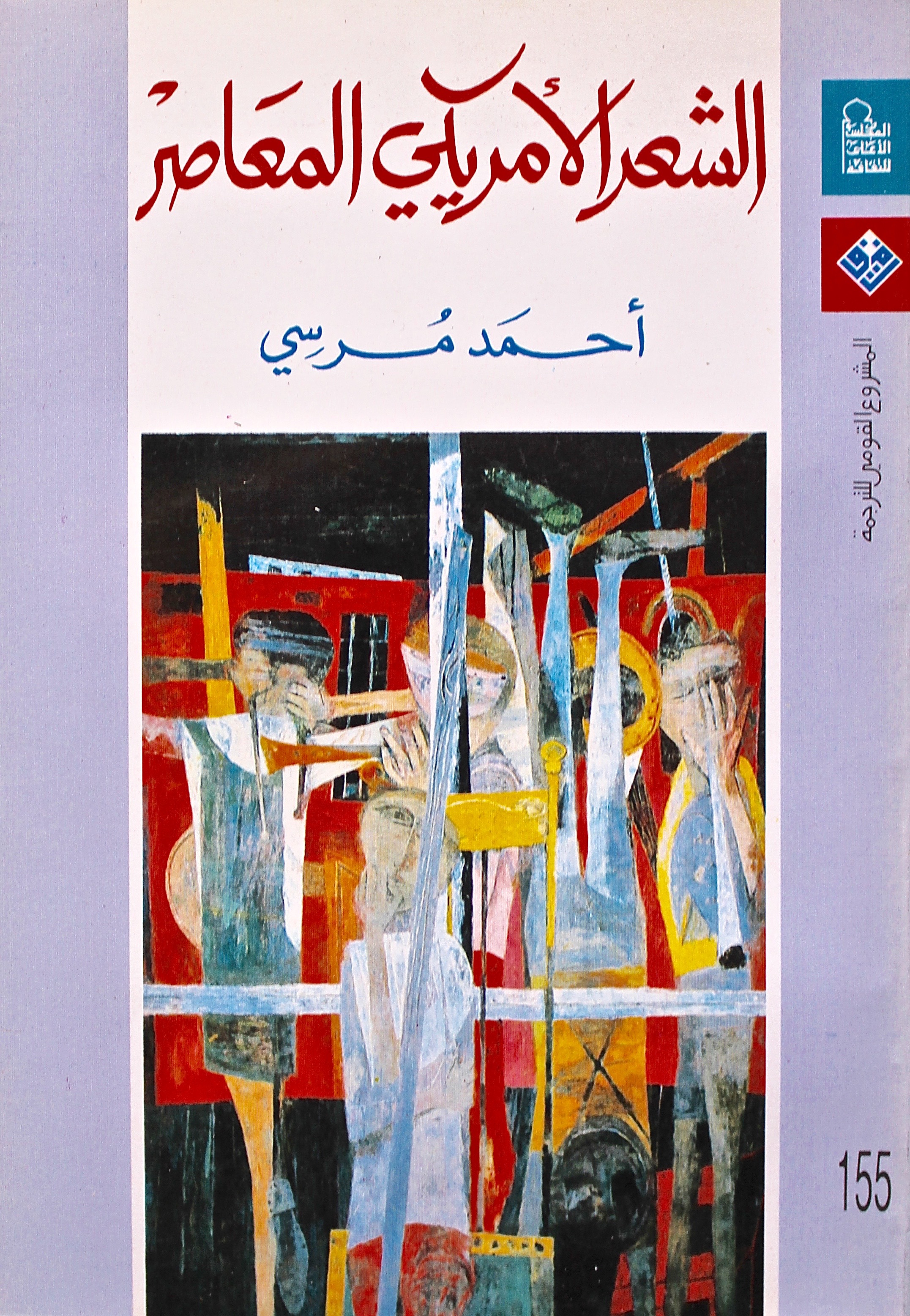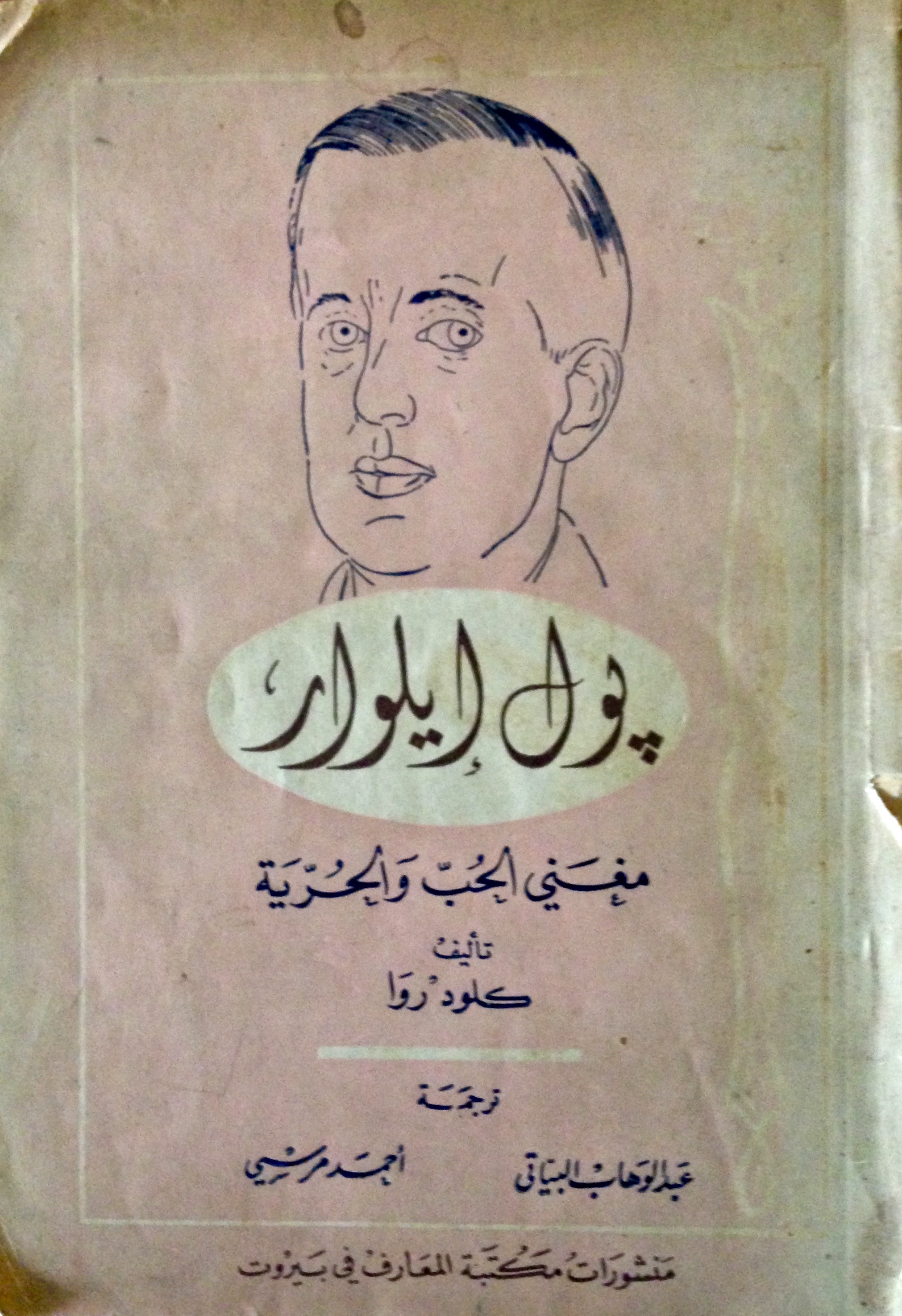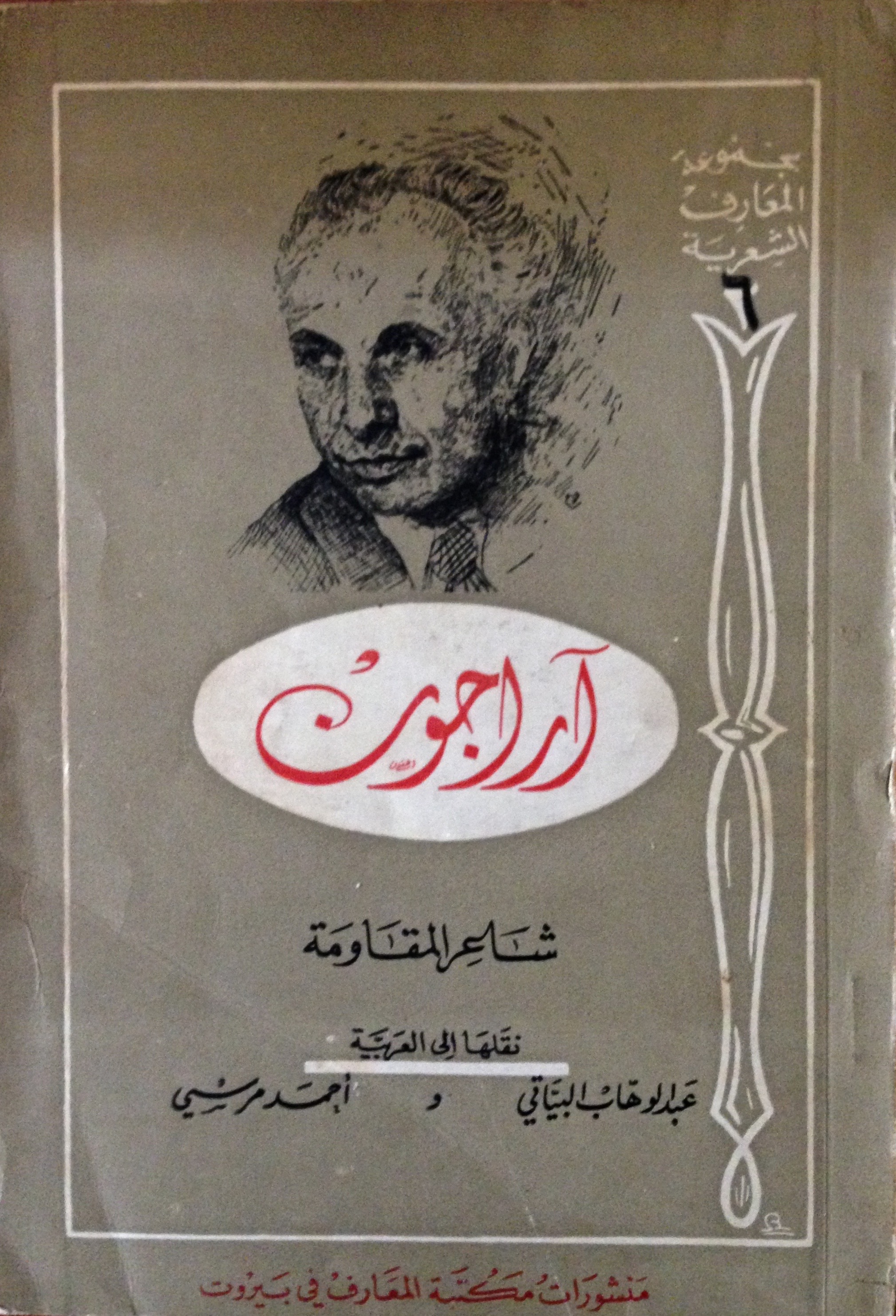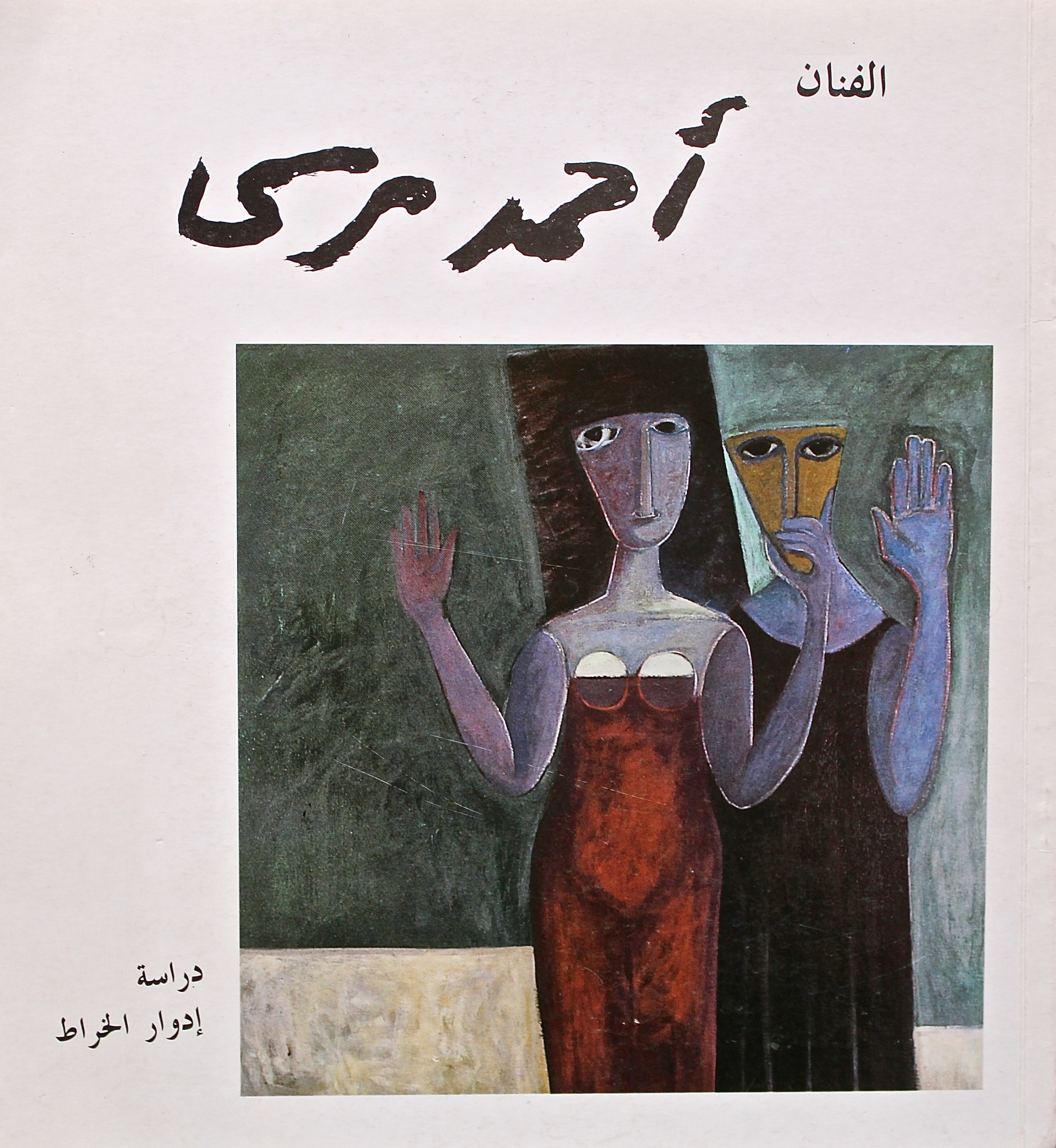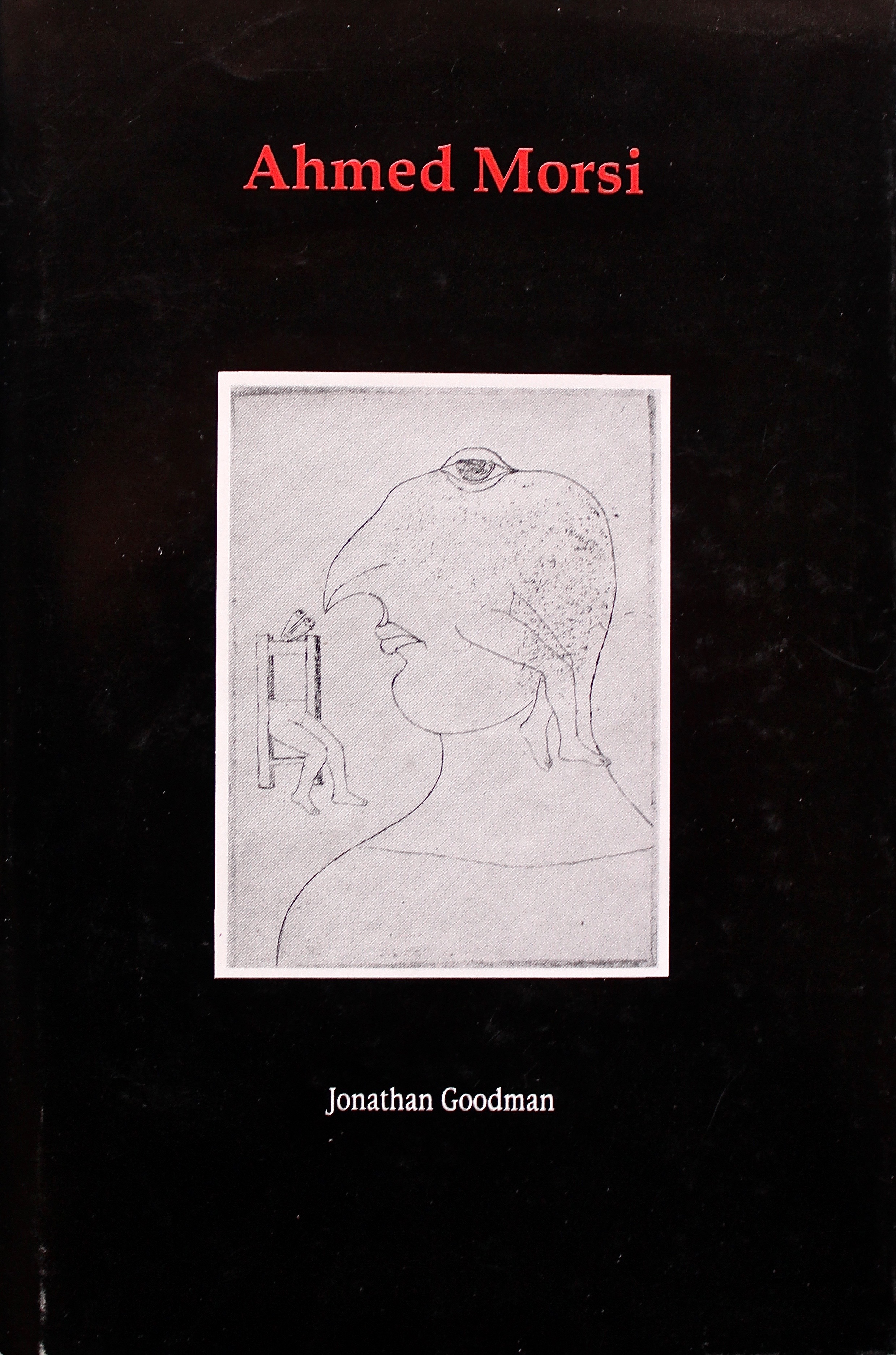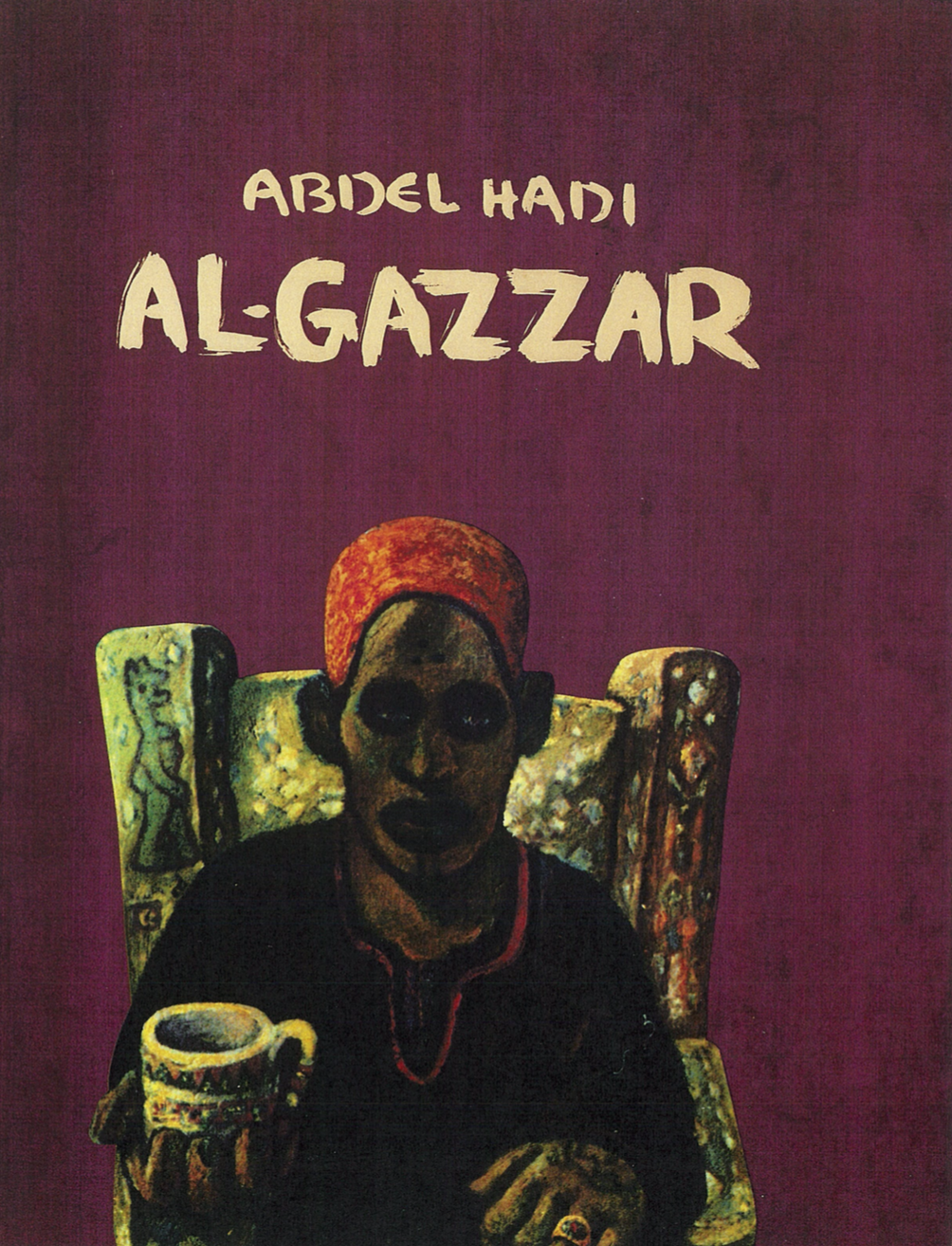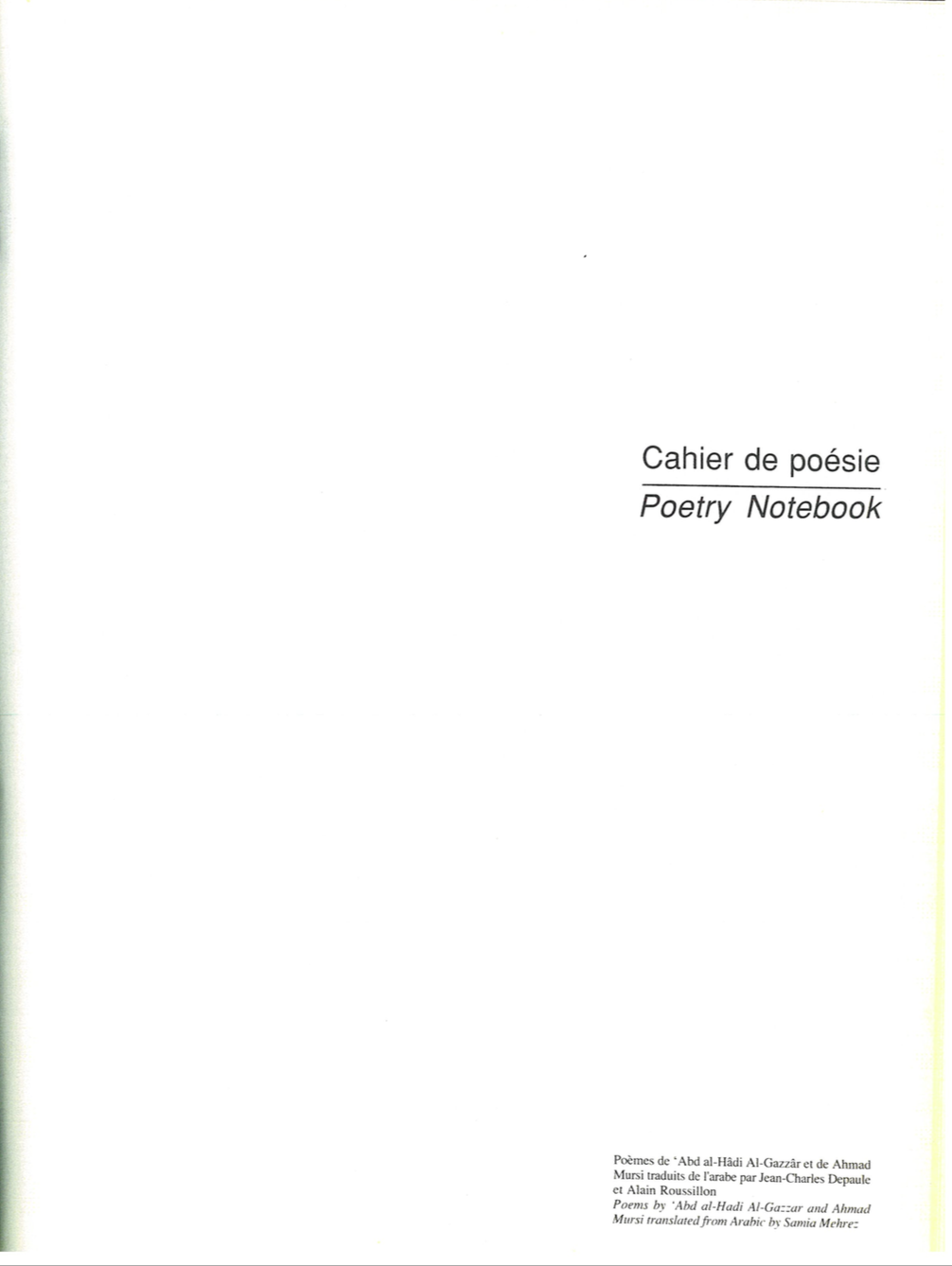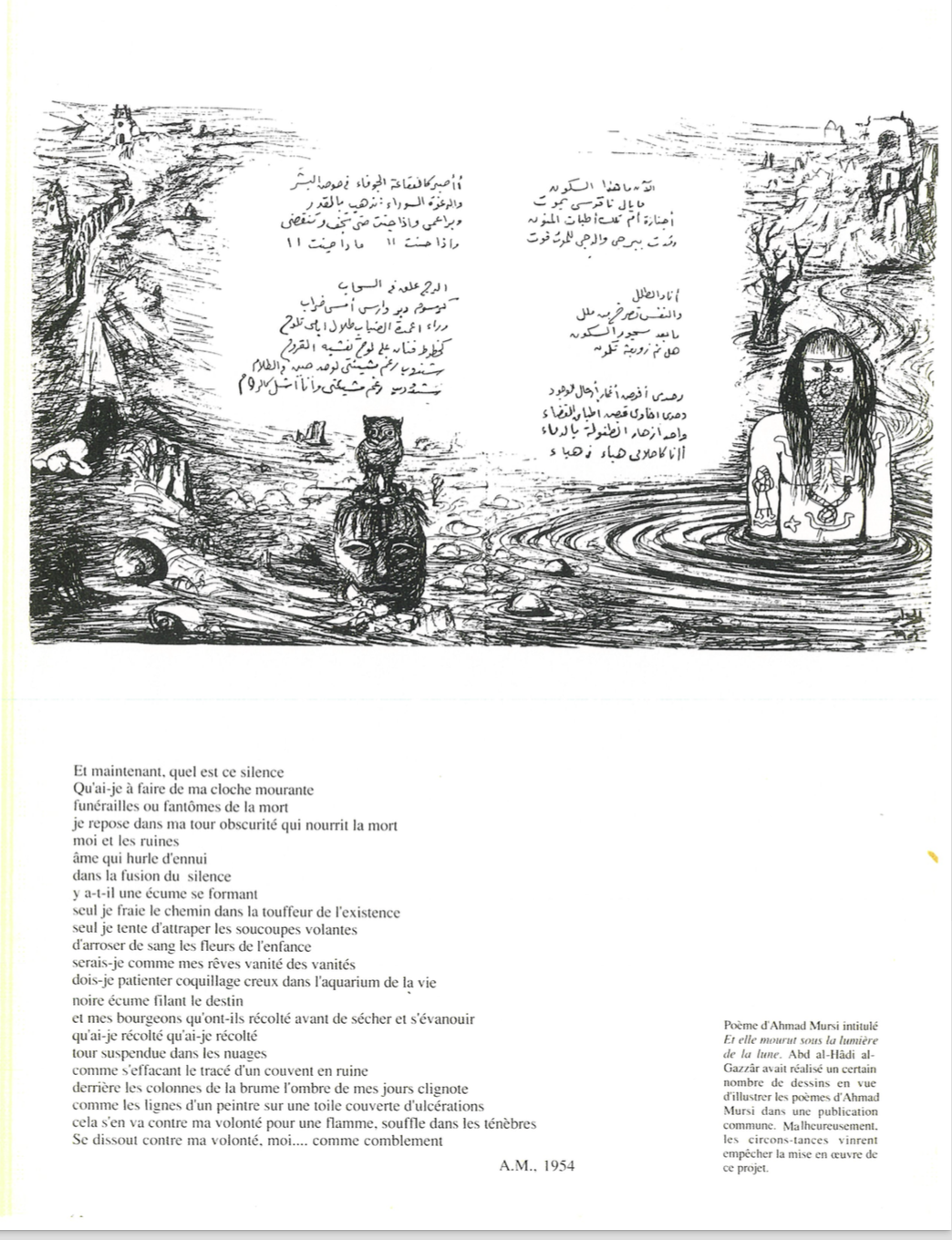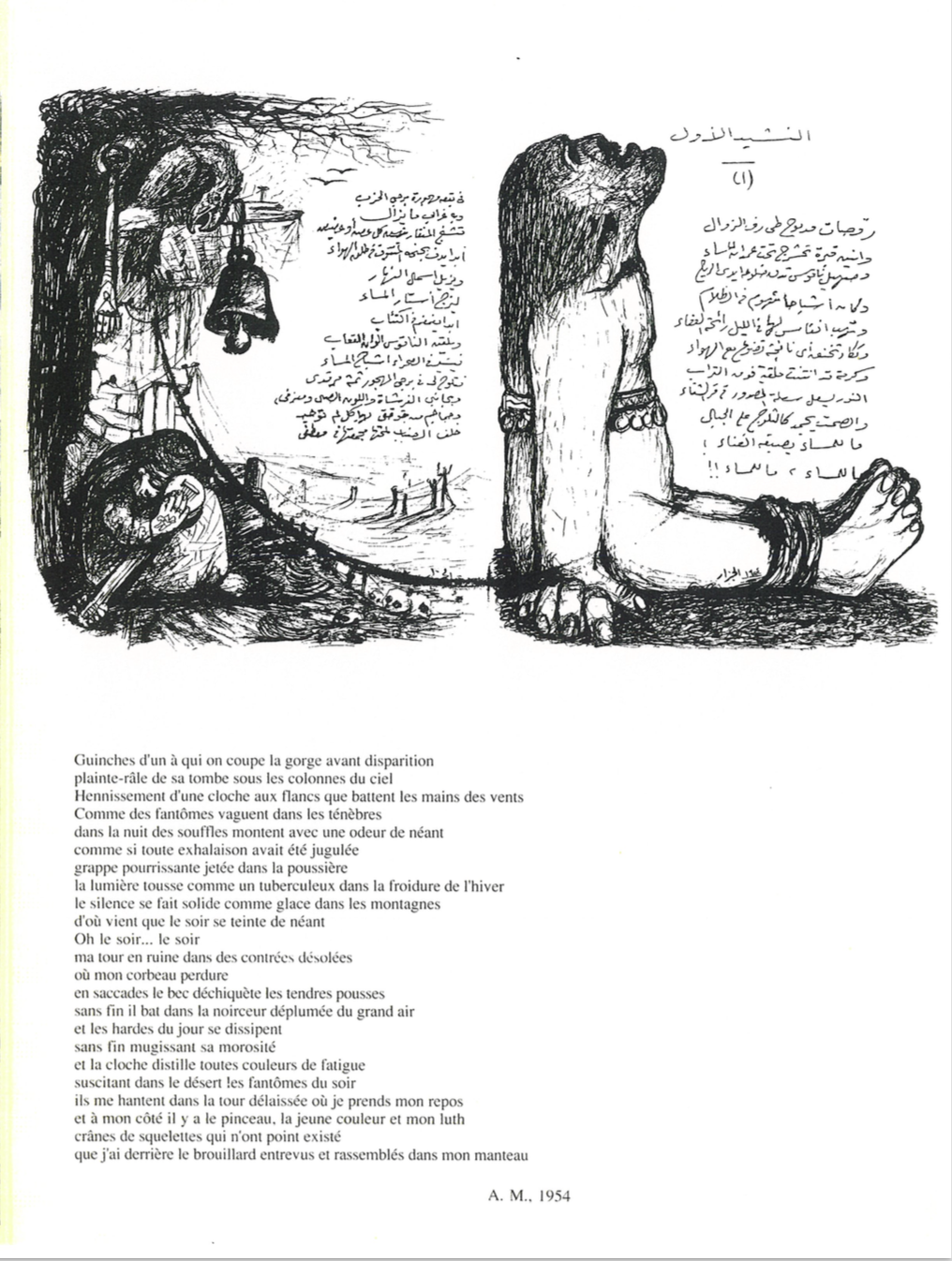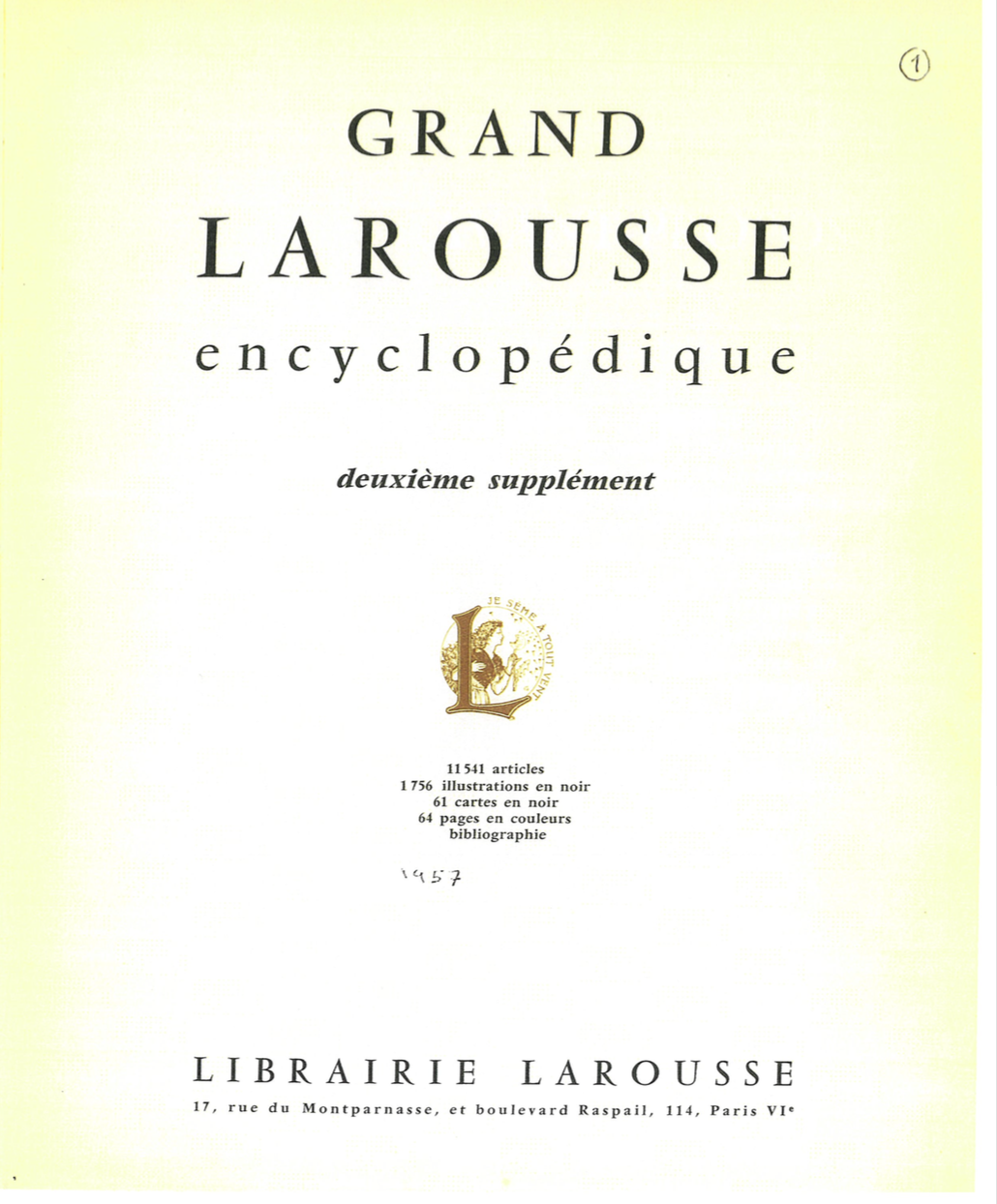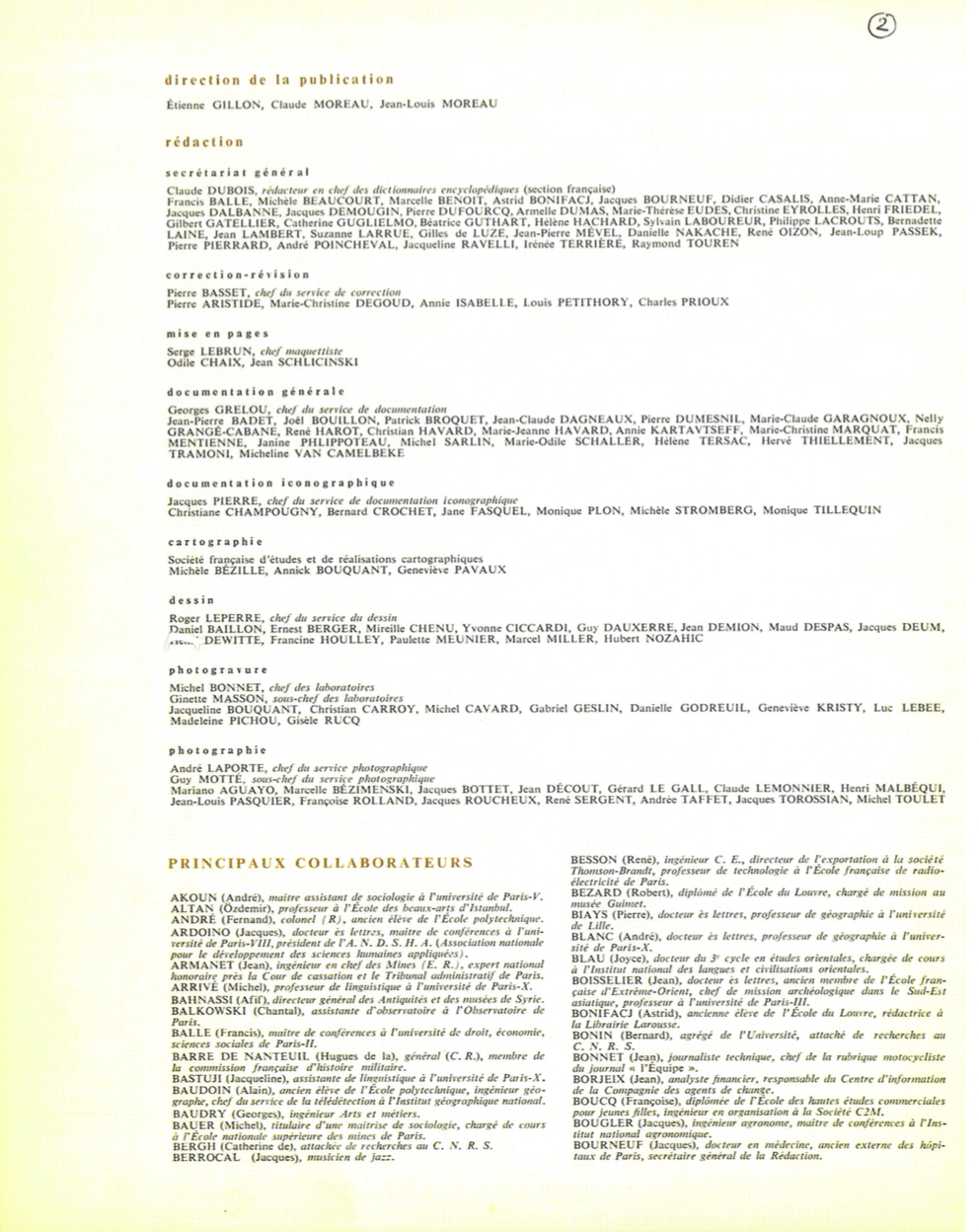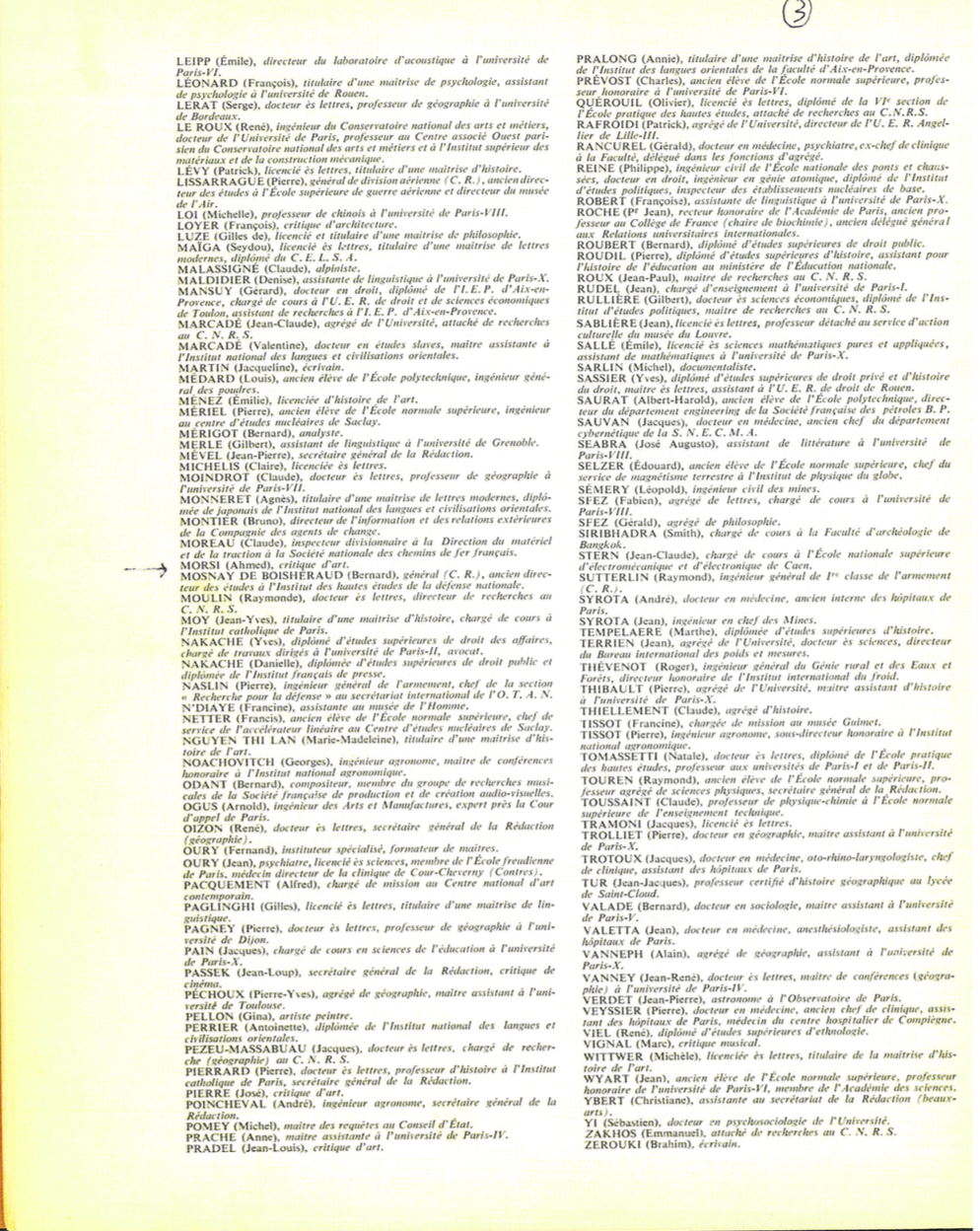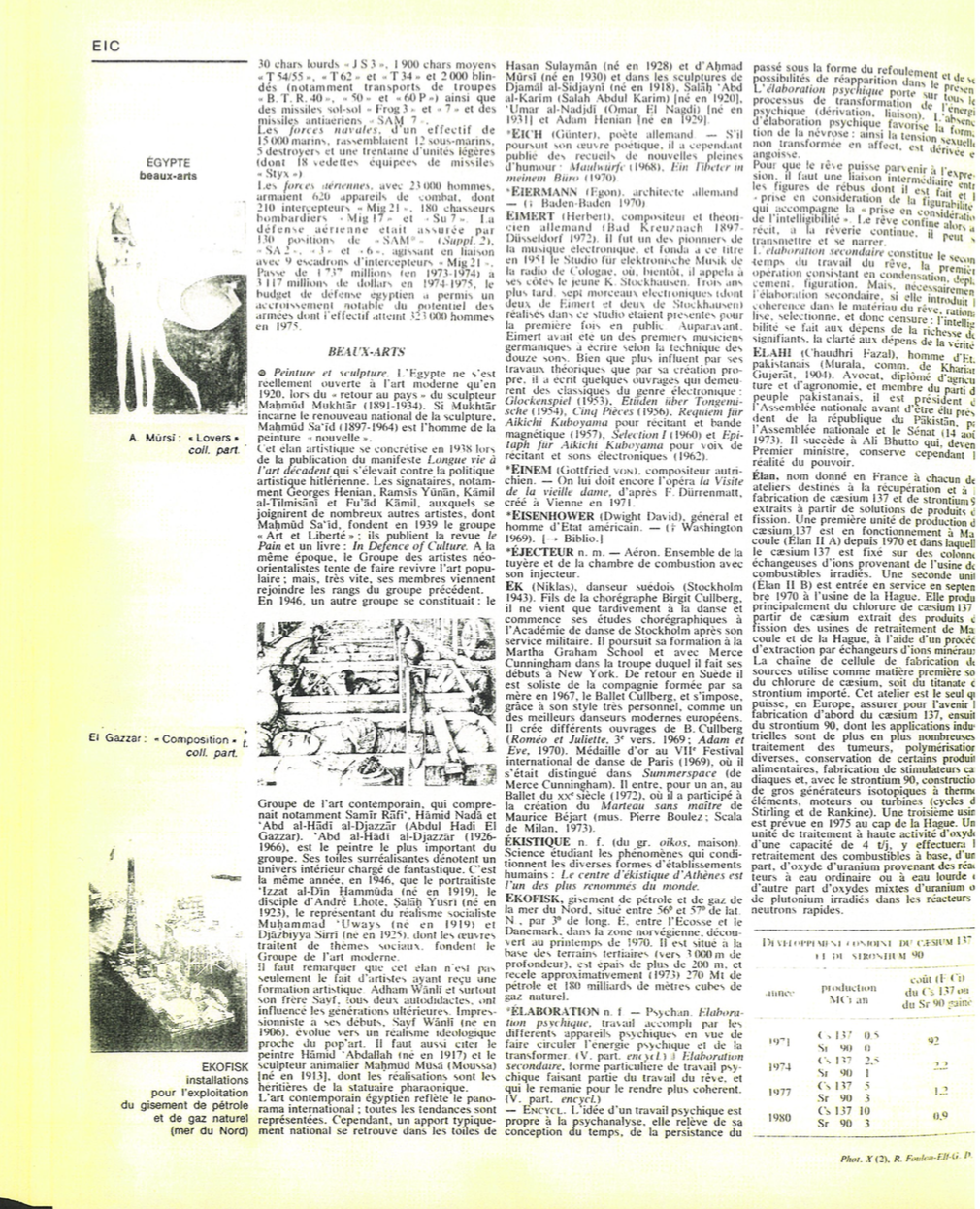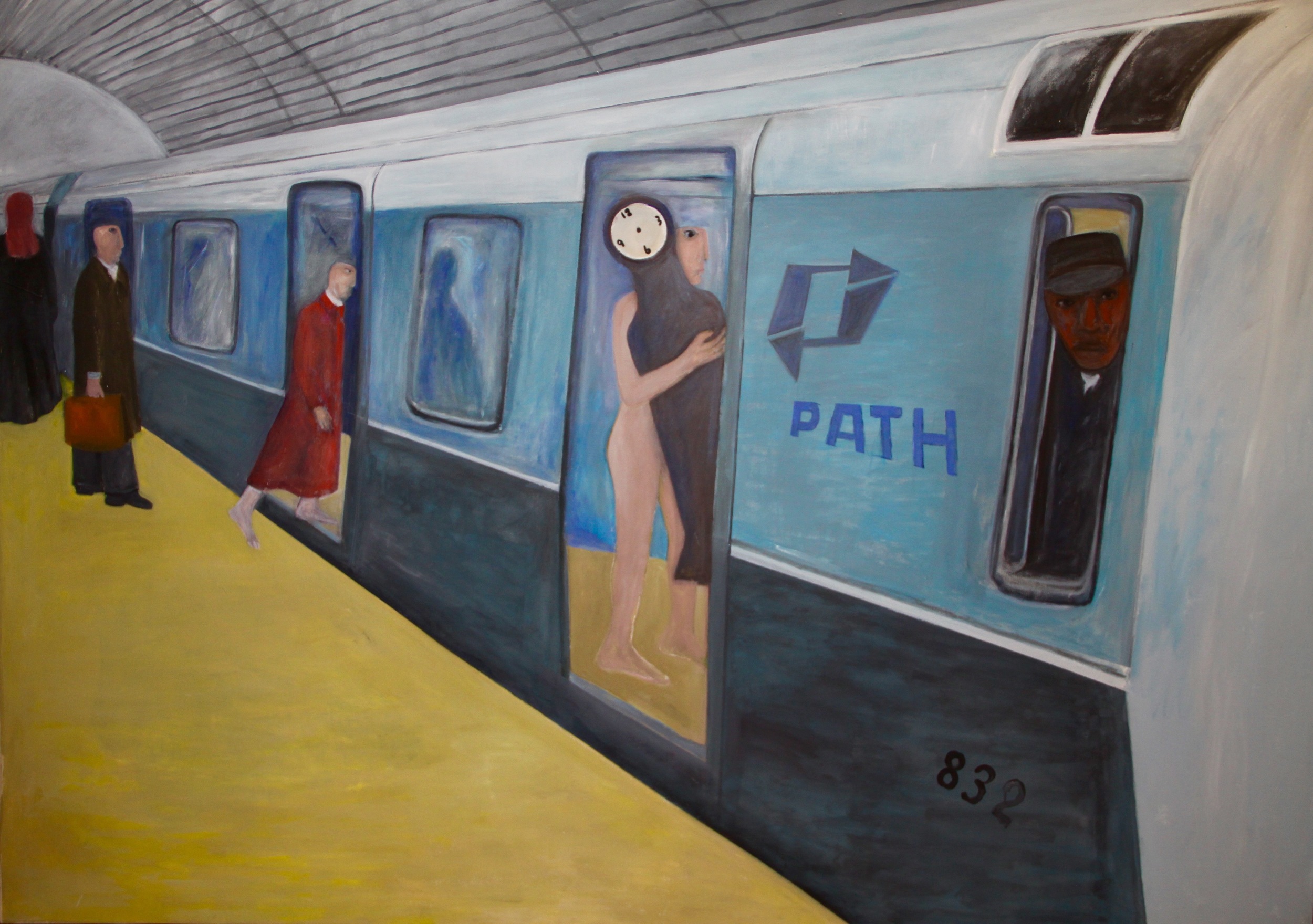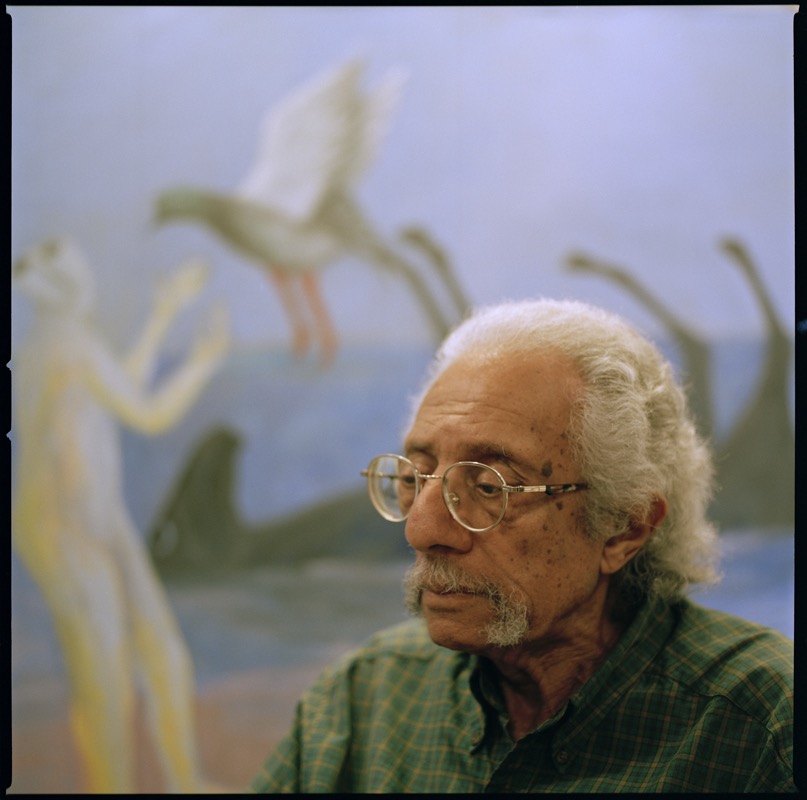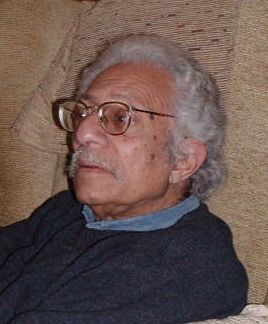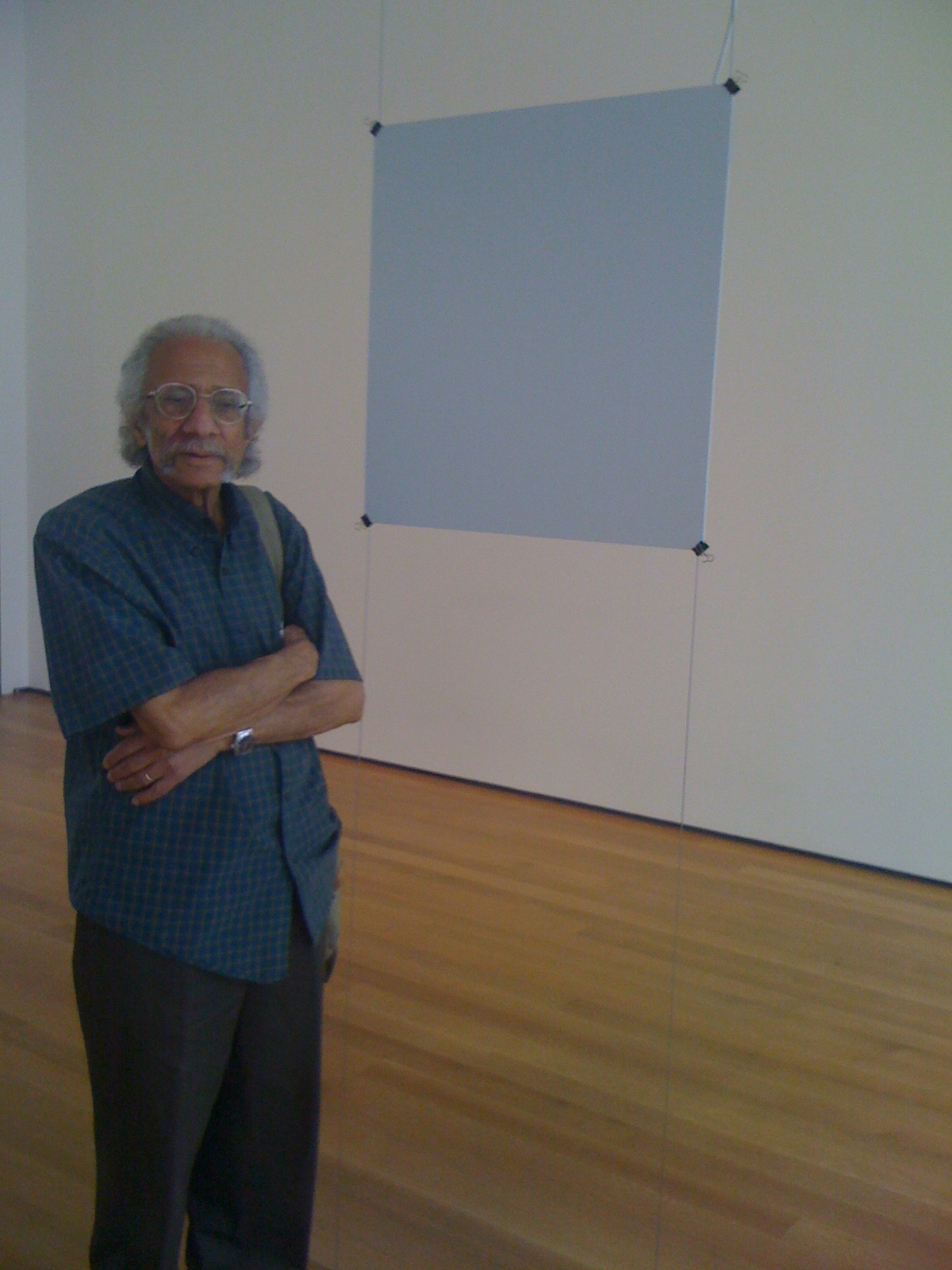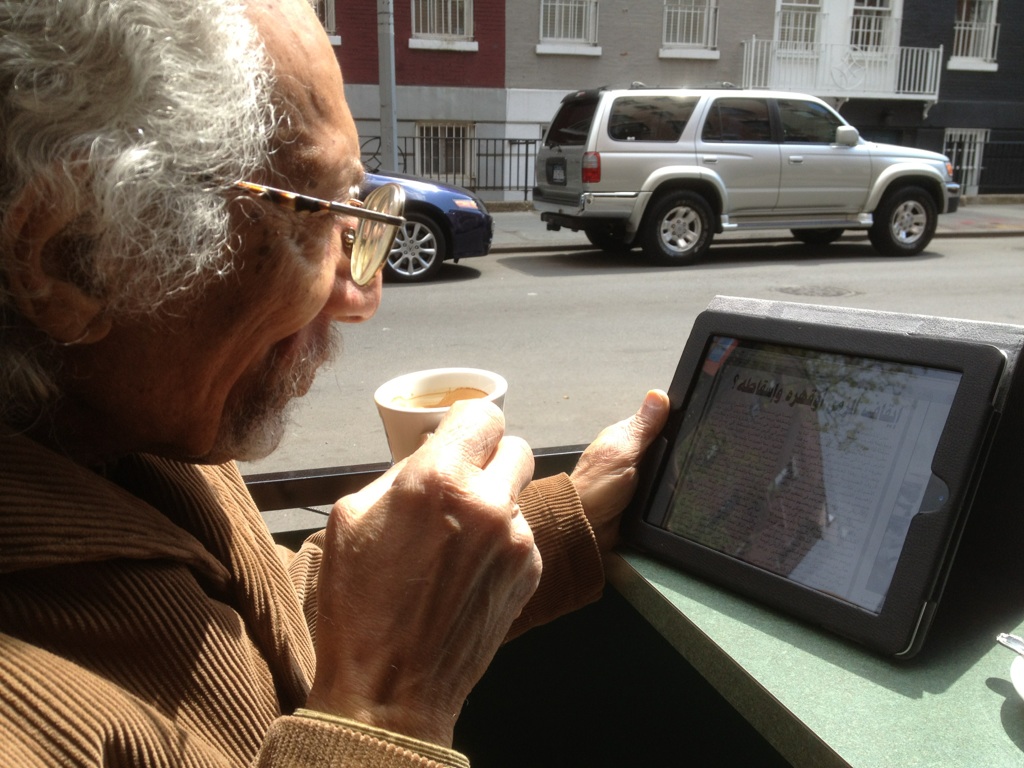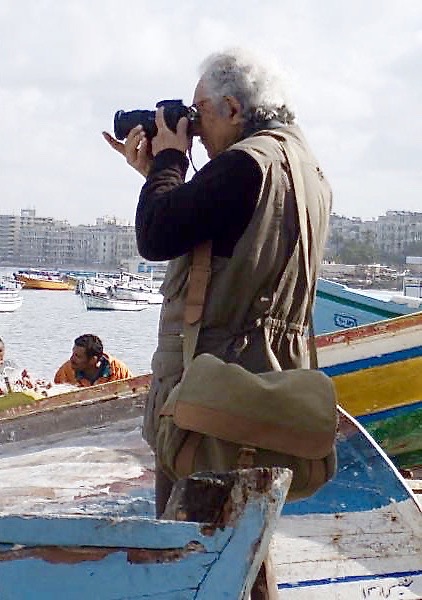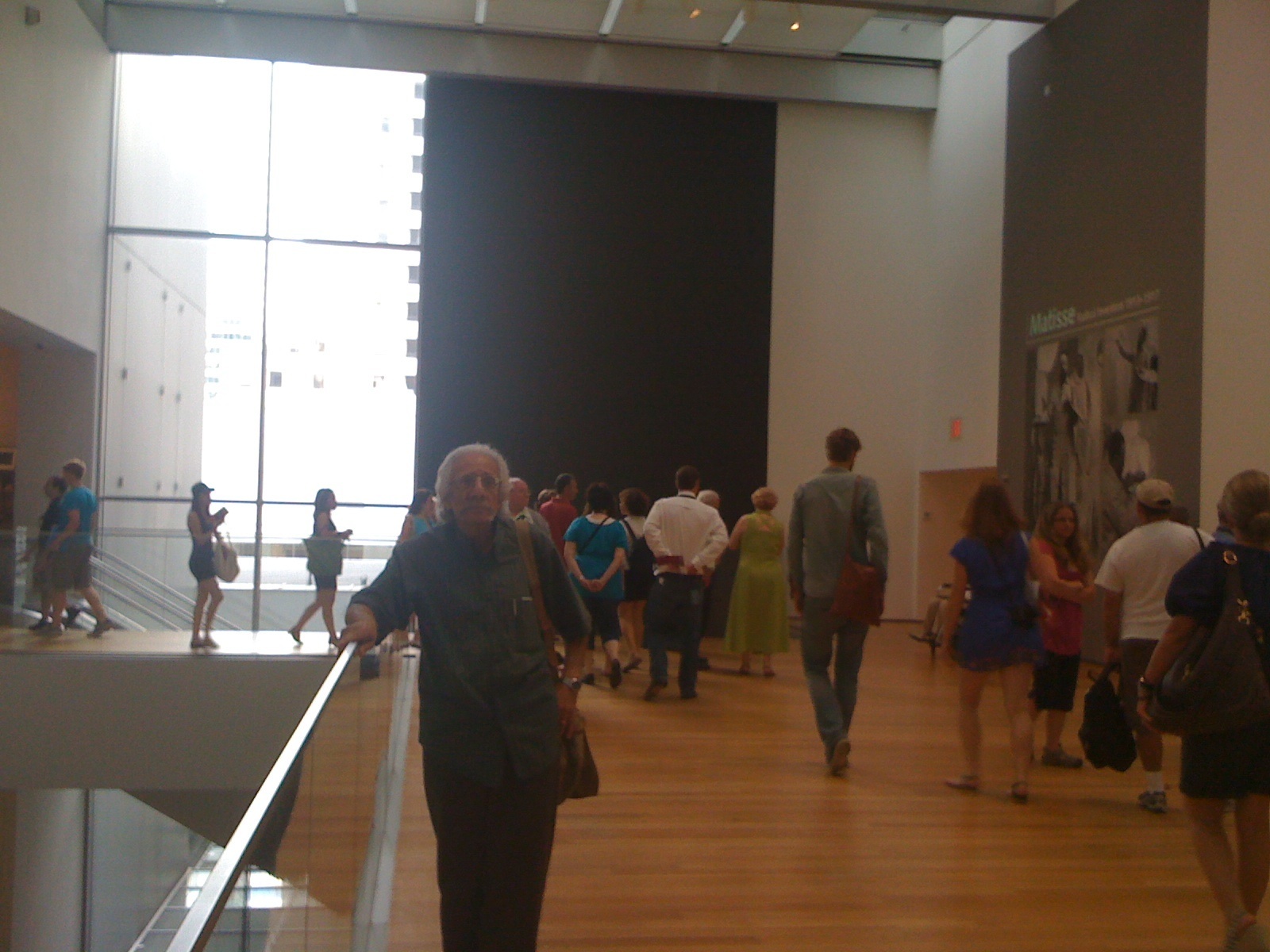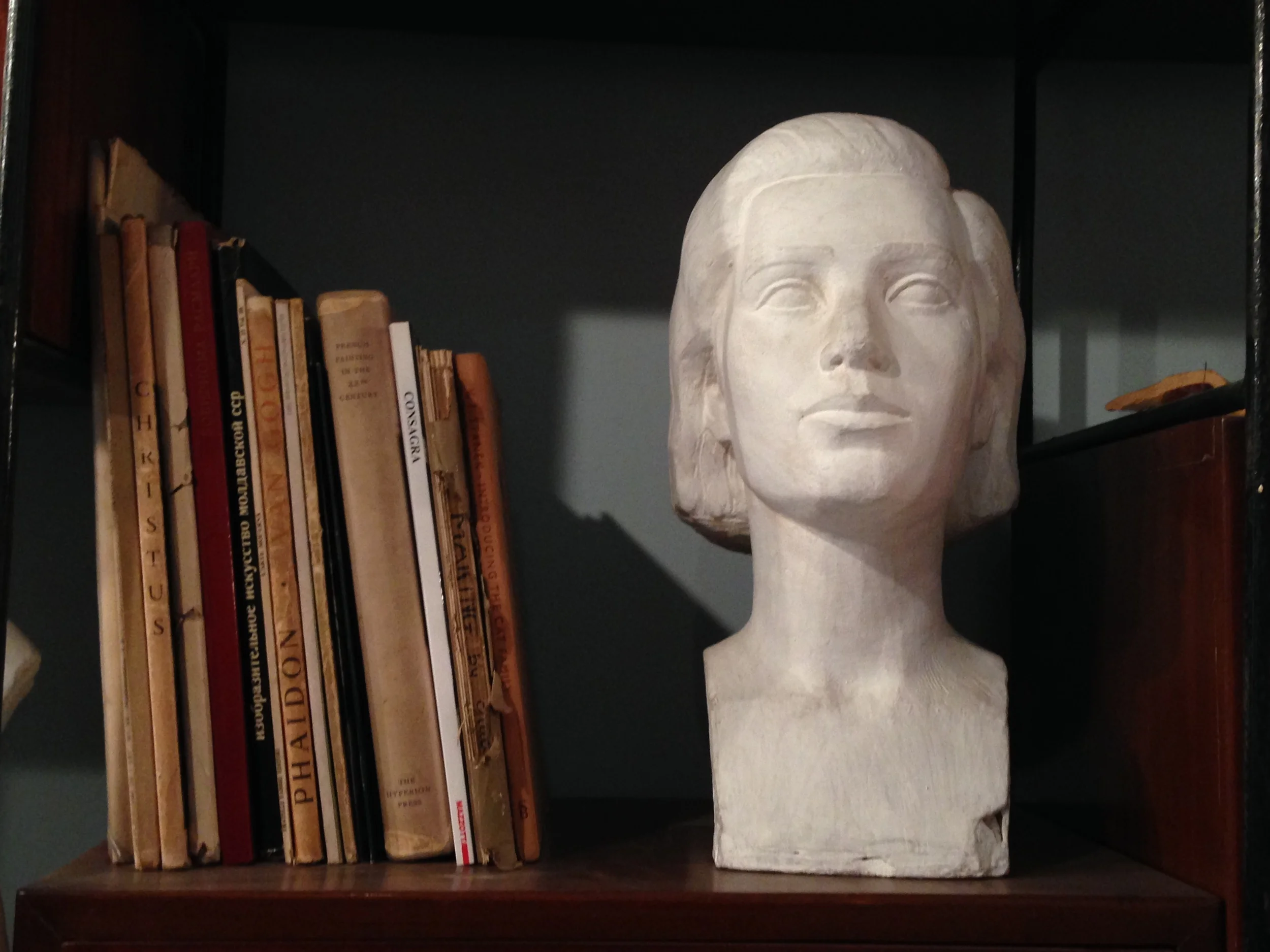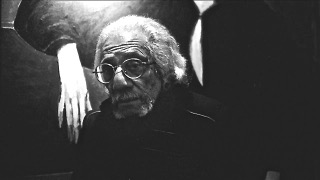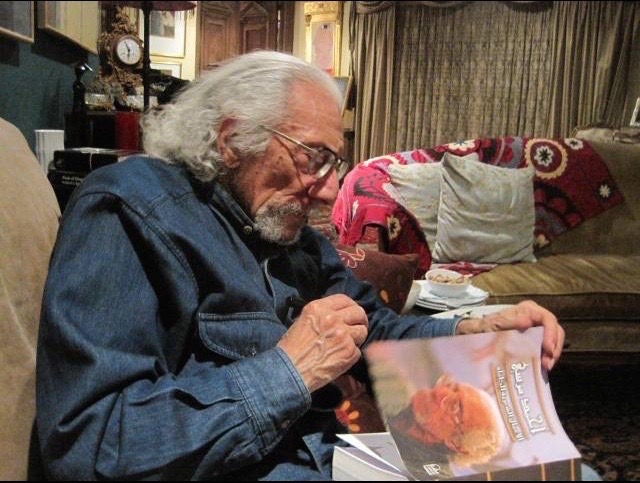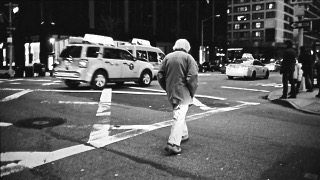“The unfamiliar Royal Ras Al Teen Palace,
moorings of the shipping boats,
screams of the seagulls...”
* Verse from "Elegy for the Mediterranean Sea", written by Ahmed Morsi and translated from Arabic.
"Portrait of the Artist with a Broken Mirror" (1970), 81 x 124 cm - Barjeel Art Foundation Collection.
Ahmed Morsi is a contemporary Egyptian artist who has woven together painting and Arabic poetry since the 1940s in what some scholars and critics have described as contemporary Egyptian Surrealism. Although he has spent the latter part of his artistic career in the United States, Morsi was born in Alexandria, Egypt on March 9, 1930 to Saida Darwish and Mahmoud Morsi ‘Abdel ‘As, who worked as a contractor. Morsi would grow up to channel the lively arts scene of his coastal home city and urban centers abroad into his visual and literary practice for years onward.
Artist’s Educational and Artistic Career
Morsi’s first encounter with the visual arts included figural drawing and painting under resident foreign artists in Alexandria, which lacked a formal institution for learning the fine arts in the early twentieth century, unlike the Higher School of Fine Arts found in Cairo. In the 1940s, Morsi studied the basic elements of drawing with the Italian artist Silvio Bicchi, whose father, Antonio, trained the Egyptian painters Seif and Adham Wanly at his Alexandria studio in the early 1930s. Morsi’s art circle consequently included the Wanly brothers, and he went on to create figural drawings from classical statues, similar in practice to the painting and illustration curricula found at Cairo’s official art schools. In 1949, Morsi kept in touch with Antonio Bicchi as he began his own drawing studio in an old Alexandria building and took up studies under his second instructor, Ahmed Fahmy, whose studio was next to Seif Wanly’s.
Morsi was a member of the so-called Alexandria School, which art critics have credited with being a hotbed of Surrealist activity in Alexandria during World War II. The term “Alexandria School” was coined by the Egyptian novelist and critic Edwar al-Kharrat (1926-2015) to describe a group of artists who came of age in 1940s Alexandria. Just as his colleagues Mounir Ramzi and Mahmoud Morsi fulfilled their roles as writer and actor in the Alexandria School, respectively, literary scholar Hala Halim claims that Ahmed Morsi acted as the poet and painter there. Al-Kharrat and Morsi were also introduced at the School and formed a close friendship that lasted until the former’s passing.
Morsi devoted the following decade to combining his career as an artist with studies in English at the Alexandria University. By the time that he received his degree in 1954, Morsi had already published his first book of poetry, entitled Songs of the Temples/Steps in Darkness, marking the beginning of a long and rich career in the literary arts. But it was during his travels to other Arab countries between 1954 and 1955 that he acquainted himself with the world of theater. Morsi wanted to test what he now calls his childish commitment to his home city and lived in Baghdad, Iraq, where he taught English to support his two-year stay there. He quickly became part of a thriving visual and literary arts scene in Baghdad and met the Iraqi poet Abdel Wahab al-Ba‘eaty and playwright Youssef al-‘Ani (1927-2016). When al-‘Ani asked him to write a full-page article reviewing a group exhibition of well-known artists for the major Iraqi newspaper, al-Akhbar, Morsi discovered the educational ties between Egyptian and Iraqi painters. He believes that these artists took similar approaches to developing modern art in the 1950s due to their studies in Italy, England, and France.
Morsi returned to Alexandria in 1956, when he met the Egyptian playwright Alfred Farag (1926-2005), who was also a member of the Alexandria School. Upon Farag’s relocation to Cairo, Morsi and al-Kharrat followed suit and helped Farag with the production of his play, The Fall of the Pharaoh, at the National Theater (formerly known as Al-Azbakiya Theatre). Morsi was the first Egyptian to design stage sets and costumes for the National Theatre, which traditionally employed Italians, and he claims to have drawn his inspiration for the Pharaoh’s outfits from artifacts and figural paintings displayed in the Egyptian Museum. His artistic experience with Farag’s play proved useful when he took on a design project for al-Jaza’iriyah jamilah [Algeria the Beautiful], a play written by the Egyptian playwright ‘Abdel Rahman al-Sharqawy to celebrate Algeria’s independence from French colonial rule. Morsi continued his theater design career nearby, at the Cairo Opera House, where he worked alongside the Egyptian painter ‘Abdel Hadi al-Gazzar (1925-1966) to design stage sets and costumes for an American playwright.
Ahmed Morsi’s Impact on the Art World
Filled with talismanic symbols and folkloric figures, Morsi’s canvases from the 1950s evoke a world of religious mysticism found in the popular neighborhoods of Egypt’s cities. Bold outlines for his subjects bear witness to Morsi’s close collaborations with ‘Abdel Hadi al-Gazzar, who, as artist and art critic Liliane Karnouk claims, was a pioneer of the “Folk Realist” style in 1940s Egypt. Morsi’s saturated colors may also reflect his admiration of the Egyptian painter Mahmoud Said, whose rich color palette Karnouk identifies as a reflection of Said’s Alexandrian roots.
The peasant men and women who populate Morsi’s earlier paintings attest to the growing interest among Egyptian artists at this time in the life and culture of the common people. Morsi complimented his exploration of shaabi (popular) subjects with experimentation in European modernism, particularly the mask-like faces of Pablo Picasso. After encountering Picasso’s paintings at an exhibition in Alexandria during the late 1940s, Morsi wrote and published the first Arabic book about him in Baghdad in the 1970s (undated publication). The poet and cultural critic Ahmad ‘Abdel Moity Hegazi cites Morsi’s wider visual engagement with Cubism by comparing his “rich lexicon” to that of Picasso and the French painter Georges Braque.
Whatever inspiration Morsi drew from the styles of artists working in other countries, he quickly channeled into his own, as can be seen in the glyptic heads that appear in his canvases from the 1960s. Such figures skirt the edges of anthropomorphic representation and bear witness to Morsi’s life-long engagement with symbolism and Surrealist practice in Egypt. Morsi continues to experiment with Surrealism, filling his more recent paintings with dreamlike objects, such as headless bodies, sea shores, naked breasts, and horses. Hegazi affirms the Surrealist qualities of Morsi’s contemporary oeuvre by pointing to the subconscious origins of these pictorial elements, as well as their close conceptual and visual relationship with the work of European Surrealist André Breton.
Morsi also developed what art curator Sam Bardaouil identifies as another crucial aspect of Egyptian Surrealist practice: the symbiosis between visual and text. Morsi describes his own prose as al-she‘ar al-ramzy (symbolic poetry), which, he claims, was inspired by French poetry of the 1950s, as well as the works of the American poet William Blake. Critics such as Alfonso Armada highlight the ways in which Morsi’s poetry hovers between the edges of perception and reality, a tension that can be seen throughout his paintings from different periods of his long career.
Morsi united his painterly and literary trajectories by issuing a number of poetic diwans, including Aghani al-maharib (Songs of the Altars, 1949) and Qutuf min azhar huqul al-asbrin (Blossoms Plucked from the Fields of Aspirin, 1997), which compiled poems he wrote between 1948 and the late 1960s. Just as Hala Halim identifies surrealist concepts of alienation in Qutuf, similar themes of exile can be seen in Morsi’s painting Waiting for Godot (2012). Morsi also designed cover illustrations for the poetic works of prominent Egyptian writers, such as al-Kharrat, Hegazi, and Mamdouh ‘Abdel Sabbour. Unpublished works by Morsi include a book of his poetry with accompanying drawings created by ‘Abdel Hadi al-Gazzar in 1958.
Morsi not only had an impact on Surrealist practice in Egypt, but also on art criticism there. In 1968, Morsi co-founded the avant-garde magazine Gallerie ’68 with al-Kharrat, Ibrahim Mansour, Gamil ‘Atteya, Sayed Hegab, and others while serving as the Editor-in-Chief. Gallerie ’68 quickly became the most important source of cultural criticism in Egypt. Morsi succeeded in bridging linguistic gaps between poetic readings from around the globe. In addition to writing Arabic translations with the Iraqi poet ‘Abdel Wahab al-Bayyati (1926-1999) of texts by Louis Aragon and Paul Eluard in the late 1950s, Morsi published criticism and translations of contemporary American poetry for the Poetry Series of the National Center for Translation in Egypt. Morsi extended his Arabic commentary on the arts to the francophone world and published French-language entries on “Art in Egypt” and “Art in Iraq” for the Grand Larousse Encyclopedia in 1975.
When his wife, Amany Fahmy, obtained work as translator and chief of the United Nation’s Arabic Translation Service in 1974, Morsi moved with his family to New York. Fahmy played an important role in Morsi’s literary publications at this time because she translated the English introduction of a book on the poet Cavafy into Arabic, while Morsi translated Cavafy’s poems. Morsi also used his time between Egypt and America in the 1970s and 1980s to publish art criticism in major Egyptian, Lebanese, and Kuwaiti periodicals, such as al-Watan and al-Musawar. Morsi has most recently delved into photography, which he uses to capture passersby among figural sculptures in New York City. Such candid images frame moments of crowding and solitude, thereby exploring questions of the human condition and isolation in urban settings. Morsi continually exhibits his works in the U.S. and in Egypt, where he maintains his role as a key figure in Cairo’s thriving contemporary art scene today.
Written by Dr. Lara Ayad, Assistant Professor of Art History, Skidmore College - NY, USA
EXHIBITIONS
Selected Solo Shows - Egypt:
1953 First solo show at the University of Alexandria - Alexandria, Egypt
1958 Cairo Atelier - Cairo, Egypt
1958 Alexandria Museum of Fine Arts - Alexandria, Egypt
1959 Cairo Atelier - Cairo, Egypt
1960 Alexandria Museum of Fine Arts - Alexandria, Egypt
1961 Alexandria Museum of Fine Arts - Alexandria, Egypt
1966 Cairo Atelier - Cairo, Egypt
1967 Soviet Cultural Center - Alexandria, Egypt
1969 Cairo Atelier - Cairo, Egypt
1970 Cairo Atelier - Cairo, Egypt
1973 Akhnatoun Gallery, Center of Fine Arts (Princess Aisha Museum) - Cairo Egypt
1973 Soviet Cultural Center - Alexandria, Egypt
1989 Akhnatoun Gallery, Center of Fine Arts (Princess Aisha Museum) - Cairo Egypt
1991“Cavafy Suite”, Mashrabia Gallery - Cairo, Egypt
1995“The Artist’s Book”, Mashrabia Gallery - Cairo, Egypt
1996 Akhnatoun Gallery, Center of Fine Arts (Princess Aisha Museum) - Cairo Egypt
2003 Akhnatoun Gallery, Center of Fine Arts (Princess Aisha Museum) - Cairo Egypt
2005 Akhnatoun Gallery, Center of Fine Arts (Princess Aisha Museum) - Cairo Egypt
2012 “Metaphysics”, Gallery Misr - Cairo, Egypt
2016 “Ahmed Morsi: A Pure Artist” retrospective , Ofok Gallery (Mahmoud Khalil Museum) - Cairo, Egypt
2017 “Ahmed Morsi: You Closed Your Eyes in Order to See the Unseen”, Gypsum Gallery - Cairo, Egypt
2020 “Photos from a New York Album”, Gypsum Gallery, Cairo, Egypt
Selected Solo Shows - International
1956 Al Wazireyeh Gallery, Society of Iraqi Artists - Baghdad, Iraq
1970 The Place Gallery - London, UK
1975 Columbia University - NYC, USA
1977 Asif Gallery - NYC, USA
1985 Alef Gallery - Washington, DC, USA
1987 Vorpal Gallery - SoHo, NYC, USA
1996 Accademia d’Egitto - Rome, Italy
2017 “Ahmed Morsi: A Dialogic Imagination” retrospective, Sharjah Museum - Sharjah, UAE
2018-19 “Ahmed Morsi: The Flying Poet”, Aicon Gallery - NYC, USA
2021 “Ahmed Morsi: Detail from a Mural”, Salon 94 - NYC, USA
2023 - 2024 “Ahmed Morsi in New York: Elegy of the Sea”, ICA Miami - Miami, Florida
Selected Group Shows
1954 Inaugural exhibition of the Museum of Fine Arts - Alexandria, Egypt
1954 Group show with A Al Gazzar, H El Telmisani, I Massouda and M Moussa, Société d`Alliance Française - Alexandria, Egypt
1954 First Biennale of Mediterranean Countries, Museum of Fine Arts - Alexandria, Egypt
1955 Group show with I massouda, H El Telmissani, F Kamel and H Nada, Museum of Modern Art and Cultural Center - Alexandria, Egypt
1956 Second Biennale of Mediterranean Countries, Museum of Fine Arts - Alexandria, Egypt
1958 Second group show with A Al Gazzar, H El Telmissani, I Massouda, F Kamel and M Moussa, Museum of Fine Arts - Alexandria – Egypt
1958 Third Biennale of Mediterranean Countries, Museum of Fine Arts - Alexandria, Egypt
1968 Group show with Ahmed El Rachidi, Adam Henein, Hassan Soliman, George El Bahgoury, Gamal Mahmoud, Daoud Aziz, Saad Abdel Wahab, Saleh Reda, Safeya Hilmi Hussein, Omar El Nagdi, Ali Desouki, Kamal Khalifa, Mahmoud Hagrass, Mostafa Ahmed, Mostafa El Hallaj, Makram Rozkallah and William Izhaq, Cairo Atelier - Cairo, Egypt
1971 El Wasti International Exhibition - Baghada, Iraq
1996 6th International Biennale of Cairo - Cairo, Egypt
1996 Member of Jury Committee, 6th International Biennale of Cairo - Cairo, Egypt
2007 First Egyptian Salon, Amir Taz Palace - Cairo, Egypt
2007 “Spirit of the Moment…Spirit of the Image” with Ahmed Fuad Selim and Hilmi El Tuni, Ebdaa Gallery - Cairo, Egypt
2012 “Surrealism, Present-day Cairo” at The Gallery - Cairo, Egypt
2015 Ministry of Culture: “General Exhibition”, Palace of Fine Arts - Cairo, Egypt
2016 “Looking at the World Around You: Contemporary Works from Qatar Museums” at the Santander Art Gallery - Madrid, Spain
2016 Group show: “Debunking Orientalism”, Untitled Space - SoHo, NYC, USA
2016 “When Art Becomes Liberty: The Egyptian Surrealists (1938-1965)” curated by Hoor Al Qasimi and Salah Hassan, Palace of Fine Arts - Cairo, Egypt
2016-17 “Beloved Bodies, Part I”, a Barjeel Art Foundation exhibition at Maraya Art Center - Sharjah, UAE
2017 “When Art Becomes Liberty: The Egyptian Surrealists (1938-1965)”, Museum of Modern and Contemporary Art - Seoul, South Korea
2017 “100 Masterpieces of Modern and Contemporary Arab Art”, a Barjeel Art Foundation Exhibition at the Institut du Monde Arabe - Paris, France
2017 “Arab Print Vol III”, Meem Gallery - Dubai, UAE
2017 “Night at the Museum”, Art d’Egypte - Cairo, Egypt
2018 “Eternal Light”, Art d’Egypte - London, UK
2018 “8th International Biennale for the Artist’s Book”, Bibliotecha Alexandrina - Alexandria, Egypt
2019 “Assistants of the Void” curated by Adam Budak, Galerie Nächst St. Stephan Rosemarie Schwarzwälder as part of the CURATED BY Festival - Vienna, Austria
2019 “New Images of Man” curated by Alison Gingeras, Blum & Poe - Los Angeles, USA
2021 “Greater New York”, MoMA PS1 - NYC, USA
2022 “Alexandria: Past Futures”, Palais des Beaux-Arts (Bozar) - Brussels, Belgium
2023 “Alexandria: Past Futures”, Museum of European and Mediterranean Civilizations (MUCEM) - Marseille, France
2023 “Being as Communion”, Thessaloniki Biennale of Contemporary Art, Thessaloniki, Greece
2023-2024 “Partisans of the Nude: An Arab Art Genre in an Era of Contest, 1920-1960”, Wallace Art Gallery, Columbia University - NYC, USA
2024 “Foreigners Everywhere : Stranieri Ovunque” curated by Adriano Pedrosa , 60th Biennale Di Venezia - Venice, Italy
ACQUISITIONS
Public/Institutional Collections
- Museum of Modern Art - MoMA, NY, USA
- The British Museum, London, UK
- Egyptian Museum of Modern Art: Cairo, Egypt
- Museum of Fine Art: Alexandria, Egypt
- Mathaf: Arab Museum of Modern Art: Doha, Qatar
- Sharjah Art Foundation: Sharjah, UAE
- Barjeel Art Foundation: Dubai, UAE
- Kiran Nadar Museum of Art: New Delhi, India
Private collections in the Arab world, Asia, Europe and North America.
THE ARTIST
1948 Graduated from secondary school, where he met artist Ahmed Fahmy, his English teacher, who introduced him to Alexandrian sculptor Mahmoud Moussa and artists Seif and Adham Wanly.
1948 Started at the University of Alexandria, Faculty of Arts, English Literature department.
1948 Studied at the studio of Italian-Alexandrian artist Silvio Bicchi, choosing to leave after a few months for fear of being permanently influenced by the exercise of replicating master works
1949 Published his first divan: ‘Songs from the Altars / Steps in Darkness’
1952 Took a studio at the original Atelier d’Alexandria on Fuad street at a time when all resident artists were foreigners and briefly gave art lessons
1952 Started working as a translator for a patents/copyrights firm, Margi Overend
1954 Graduated from the University of Alexandria, Faculty of Arts with a degree in English Literature
1954 Invited to participate in the inaugural show of the Museum of Fine Arts, Alexandria
1956-1957 Moved to Baghdad, Iraq, to cut the “umbilical chord” and the hold that his birthplace, Alexandria had on him. Began writing art criticism in Baghdad for Iraqi Newspaper, “Al Akhbar”
1957 Moved back to Alexandria from Baghdad
1958 Moved from Alexandria to Cairo
1958 – 1962 First Egyptian to design sets and costumes for the Egyptian National Theater and old Khedival Cairo Opera House productions in Cairo, including:
- stage sets and costumes for the first play written by Alfred Farag, The Fall of the Pharaoh
- Co-designed with Abdel Hadi Al Gazzar stage sets for the American play Bury the Dead by Irwin Shaw
- stage sets for the first play written by Abdel Rahman AL Sharkawi, The Tragedy of Jamila Bohreid
1959 Started work at the Middle East News Agency
1968 Co-founded Galerie 68 avant-garde magazine, serving as Editor-in-Chief and Art Director, Cairo
1970 Spent one month in Penarth, Wales and there he was introduced to acrylic paint
1974 Moved from Cairo to New York City
1975 Joined printmaking classes at The Art Students’ League in New York, choosing to leave after a few months with new skills to develop with his own signature and style
1995 Introduced The Artist’s Book to the Art public in Egypt. Thanks to this pioneering effort, the Biobliotecha Alexandria established a Biennale solely for this creative medium.
POETRY, CRITICISM, ESSAYS AND OTHER WRITINGS
1949 The Literary Library for Publishing and Distribution published his first divan, Songs from the Altars / Steps in Darkness
1957-1974 Covered activities in the Egyptian art scene for the Second Program on Public Radio and world art for Culture News Around The World radio program - Cairo
1959 Co-translated Eluard: The Poet of Freedom and Love with Iraqi poet Abdel Wahab Al Bayyati, published by Al Maaref Bookshop – Beirut
1959 Co-translated Aragon: The Poet of Resistance with Abdel Wahab Al Bayyati by Al Maaref Bookshop - Beirut
1960 – 2012 Wrote art criticism first for Egyptian newspapers and magazines, then (post 1974) also for regional publications
1968 As a conscious objector, he stopped writing poetry out of a sense of estrangement and a form of resistance following the 1967 war
1968 Co-published the avant-garde magazine, Galerie 68, along with Edwar El Kharrat, Ibrahim Mansour, Gamil Atteya and Sayed Hegab among others - which played a pivotal role in developing the “new-modernism” of Arabic literature - and served as Editor-in-Chief and Art Director
1969 - The Iraqi Ministry of Culture published his book, Picasso, first monograph on the artist in Arabic
1970 - Translated View from a Bridge by American Playwright Arthur Miller, which was staged by The National Theater
1975 The Iraqi Ministry of Culture published his book, Introduction to Black American Poetry
1992 Al Khazindar Publishing published his book, Cavafy, Alexandria’s Poet
1997 He claimed the poet who was self-exiled 30 years prior, without calculation
1997 Eastern Publishing Co. published his divan, Pickings from Fields of Aspirin
1998 The Egyptian Ministry of Culture published his divan, Pictures from the New York Album
1999 The Supreme Council for Culture published his book, Readings on Contemporary American Poetry I
2000 The National Center for Translation published his book, Readings on Contemporary American Poetry II
2000 The General Authority for Culture published his divan, A Gallery Showing Stolen Paintings
2001 The Book League published his book, Readings on Contemporary American Poetry III
2002 The Fund for Cultural Development published his divan, Elegies to the (Mediterranean) Sea
2003 Dar Merit for Publishing & Distribution published his divan, Dress Rehearsal for a Season in Hell
2005 Al Bustani Company for Publishing & Distribution published his divan, The Book of non-Niffari ‘Mawaqef’ of the Sea
2006 Dar Merit for Publishing & Distribution published his divan, Troubadour from Silicon Valley
2009 The General Authority for Cultural Palaces publishes his divan, Presence and Absence on the Maps of Diaspora
2011 The Supreme Council for Culture published his book, Contemporary American Art
2012 The Supreme Council for Culture published his anthology, Ahmed Morsi: The Complete Poems
2012 The General Authority for Cultural Palaces publishes his final divan, Season for Emigration to Another Time
Galerie '68 magazine covers:
Artist's Book: "Cavafy Suite", poem by Constantin Cavafy and prints by Ahmed Morsi (1990)
The artist continues to paint and write, exhibiting and publishing his works in Egypt, the Middle East, Europe and North America.

